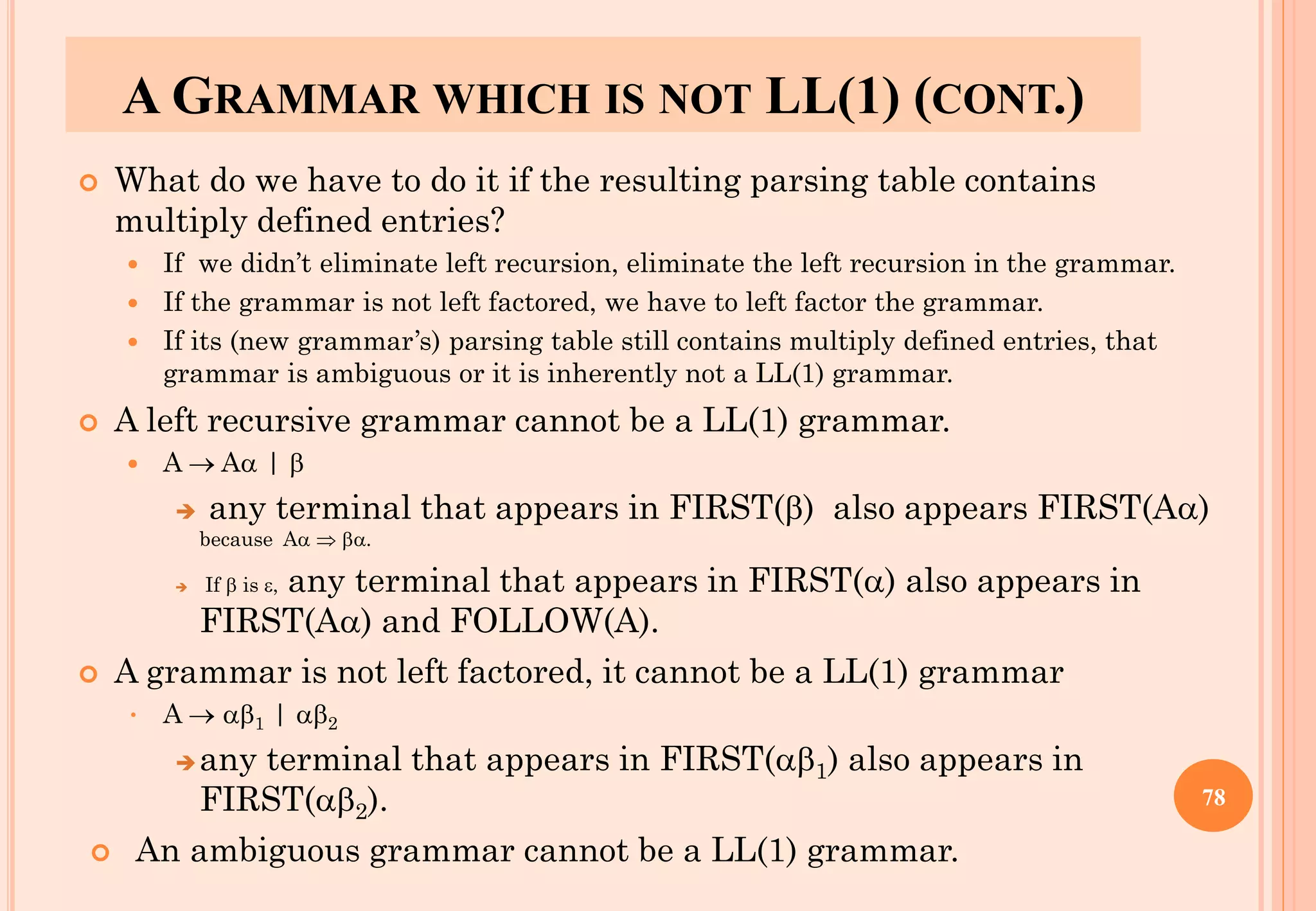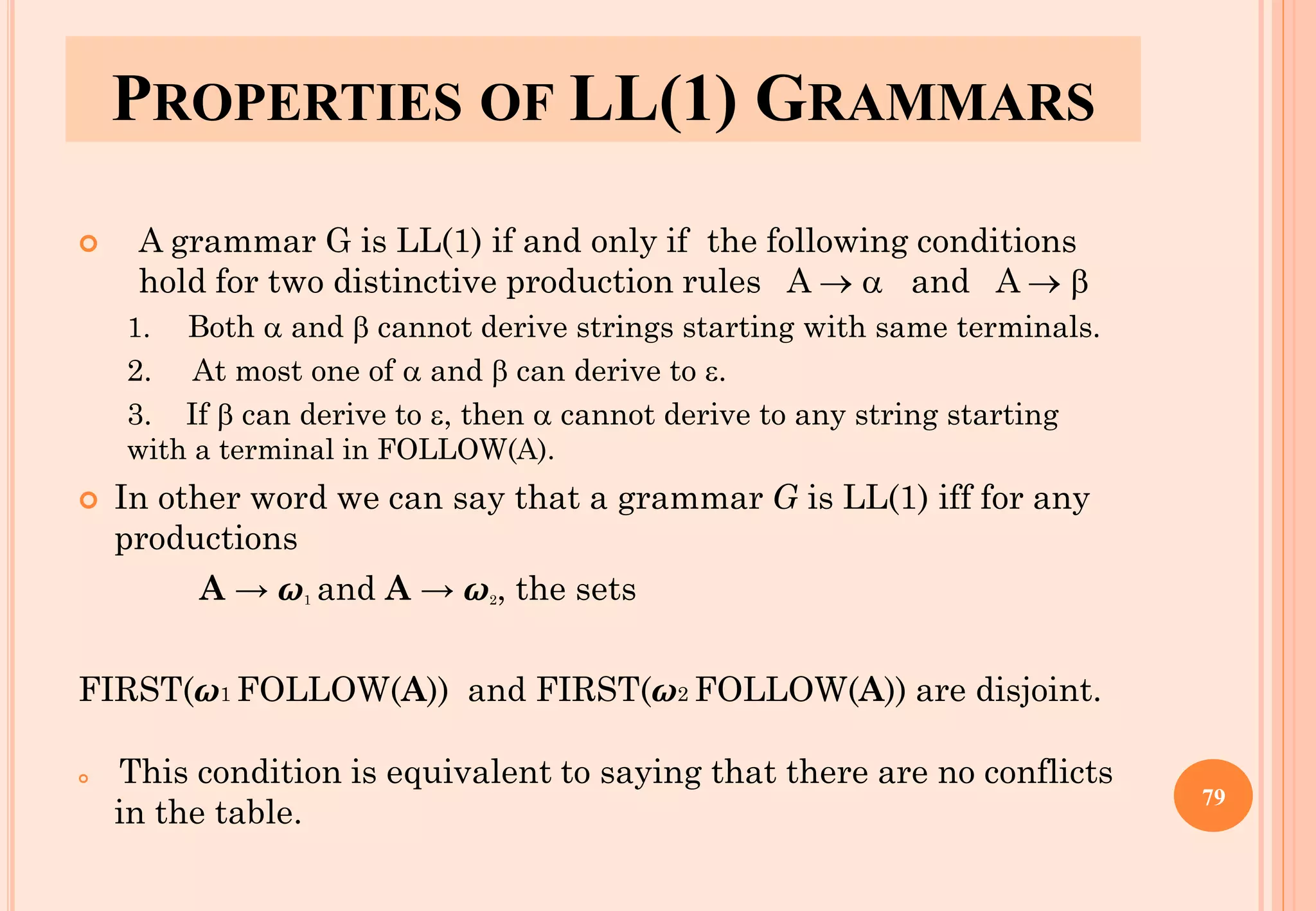The document discusses syntax analysis, which is the second phase of compiler construction. It involves parsing the source code using a context-free grammar to check syntax and generate a parse tree. A parser checks if the code satisfies the grammar rules. Grammars can be ambiguous if they allow more than one parse. Left recursion, where a non-terminal derives itself, must be removed as it causes issues for top-down parsers. The document explains how to systematically eliminate immediate and non-immediate left recursion from grammars through substitution.
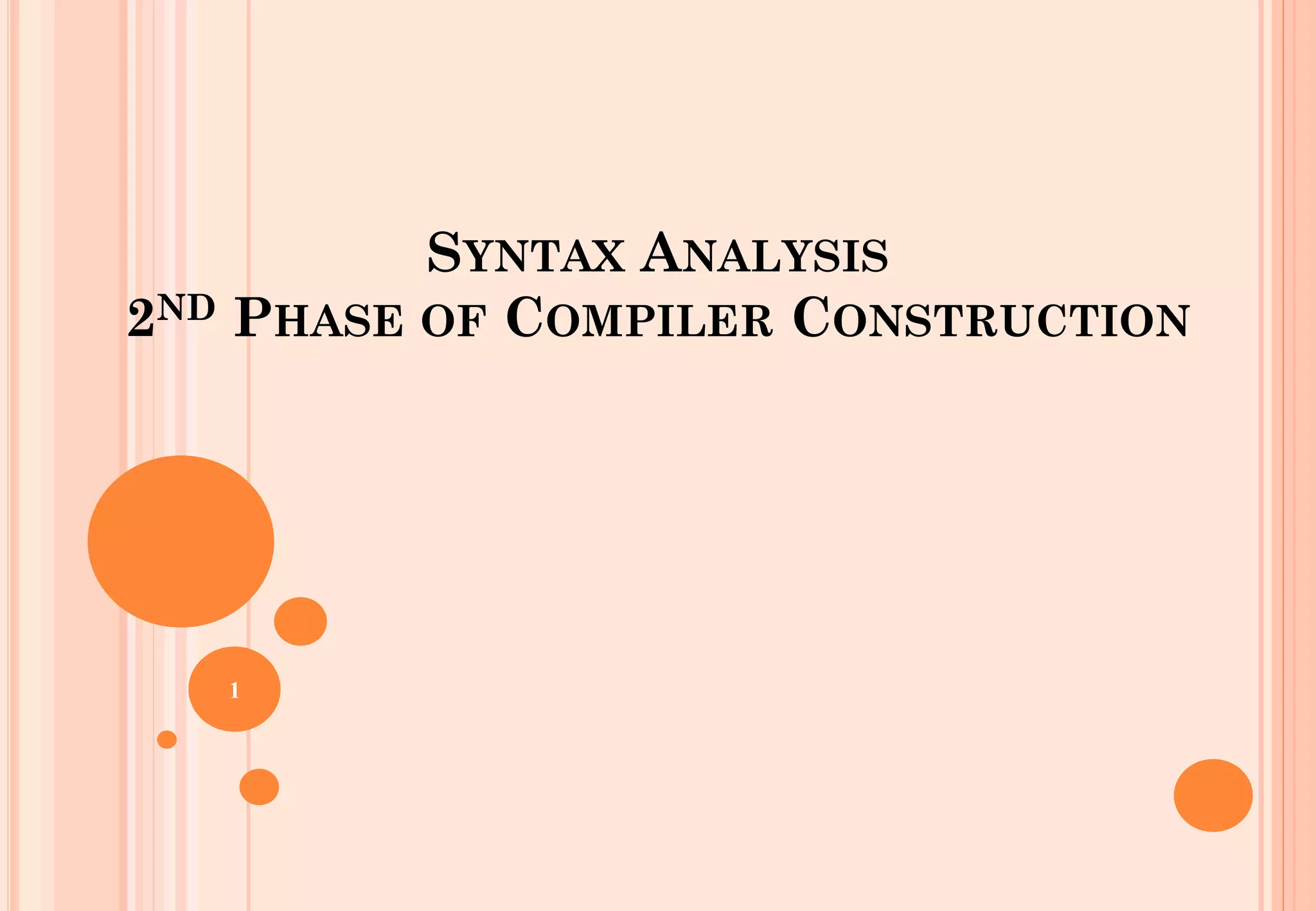
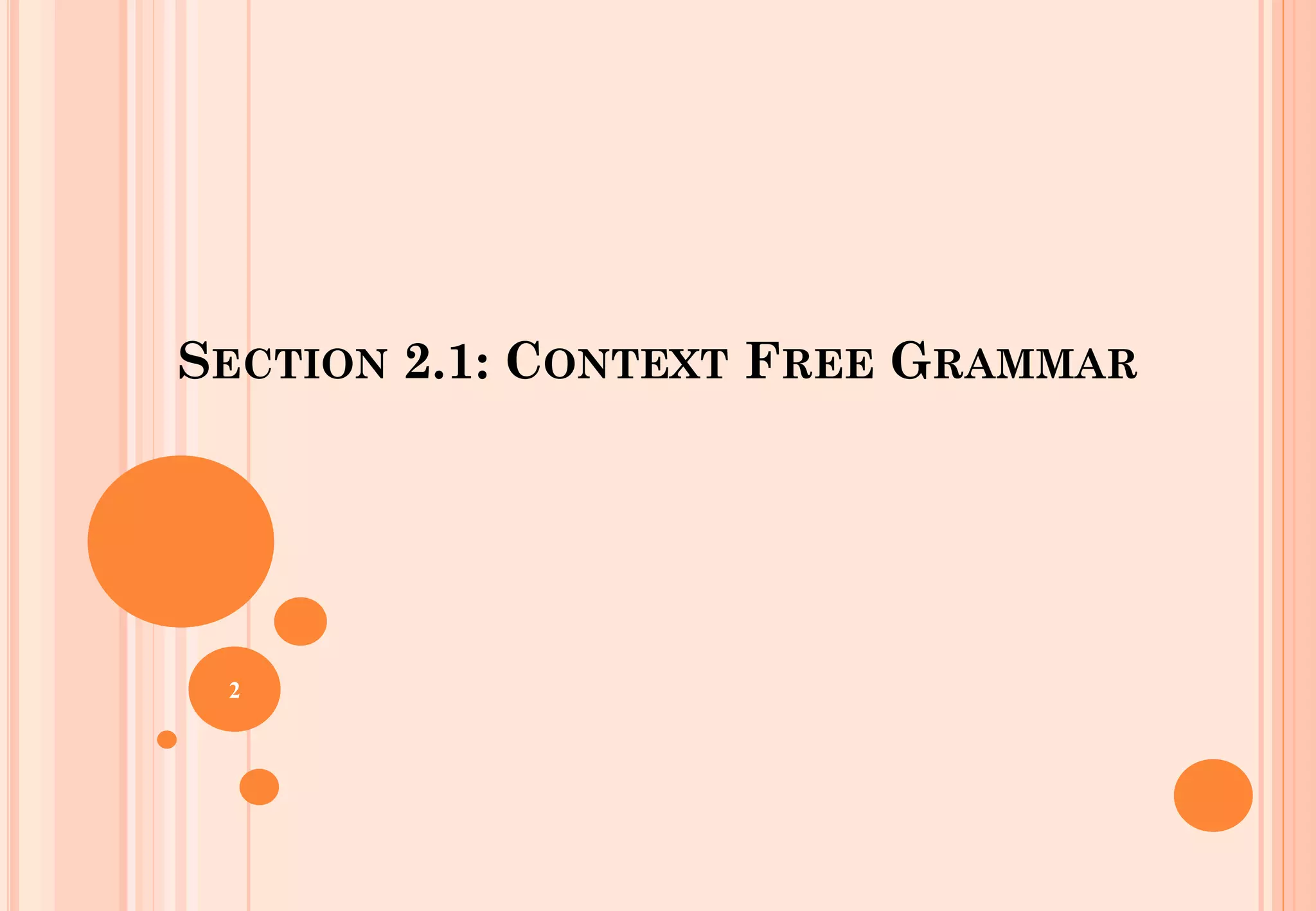

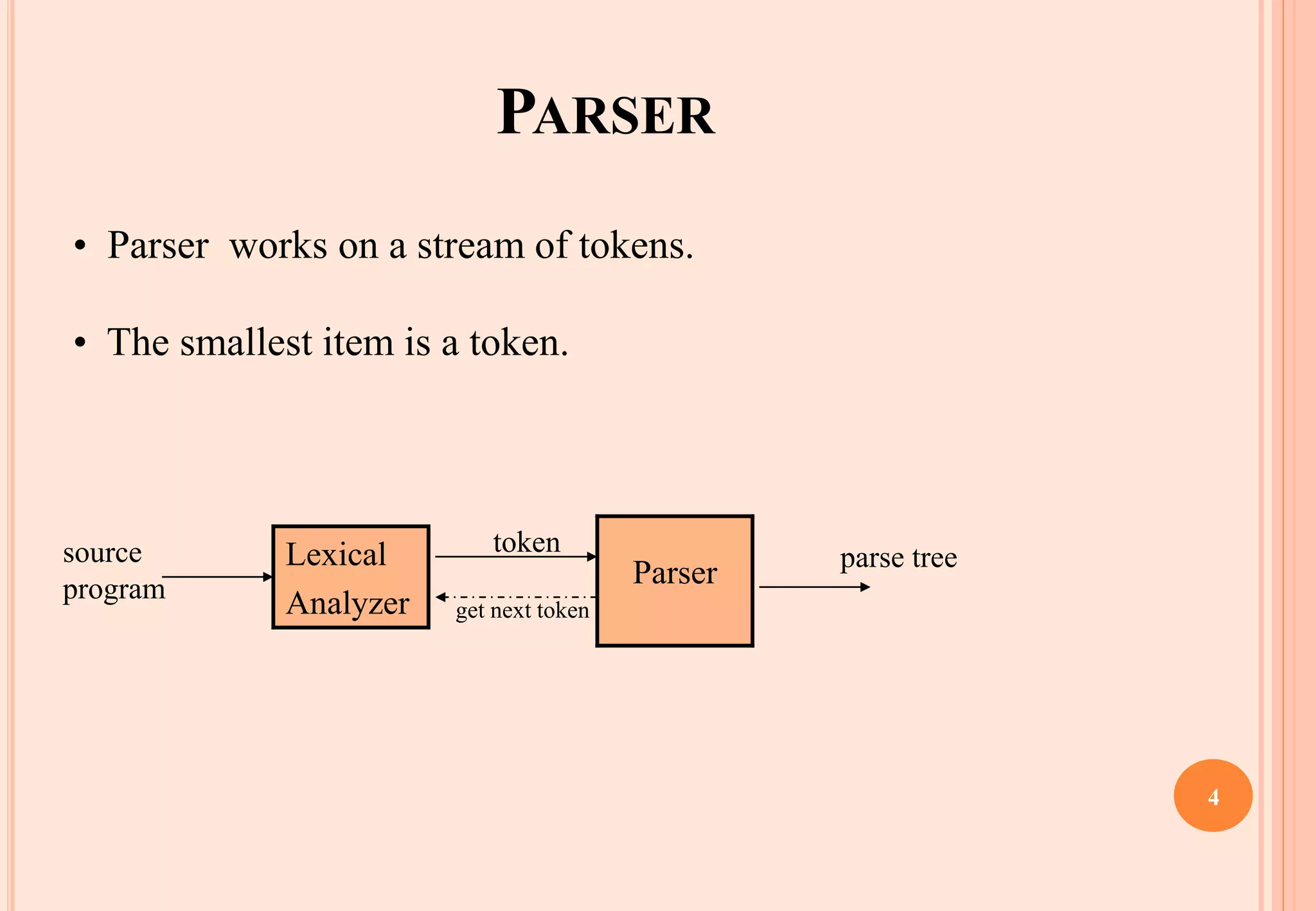
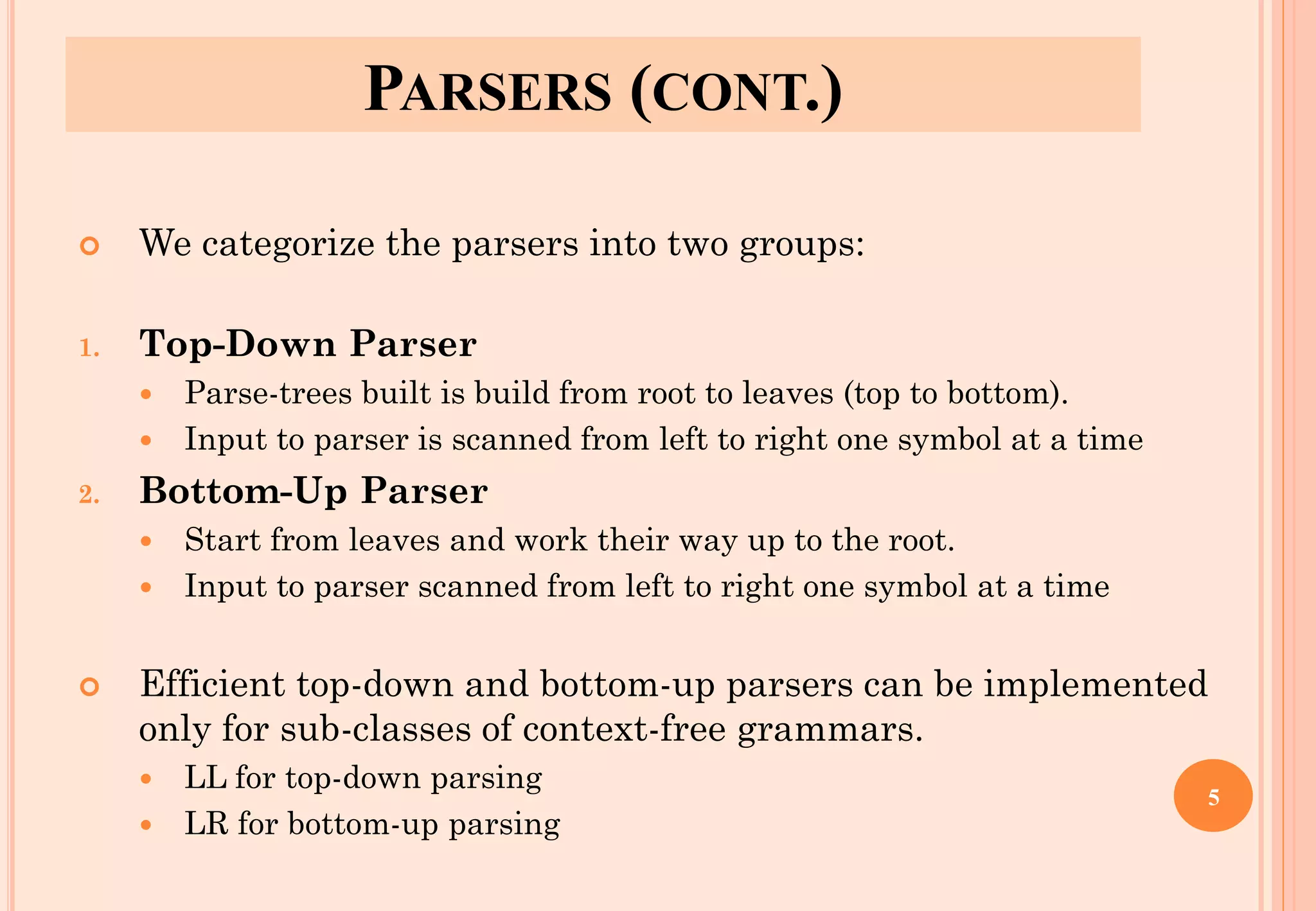
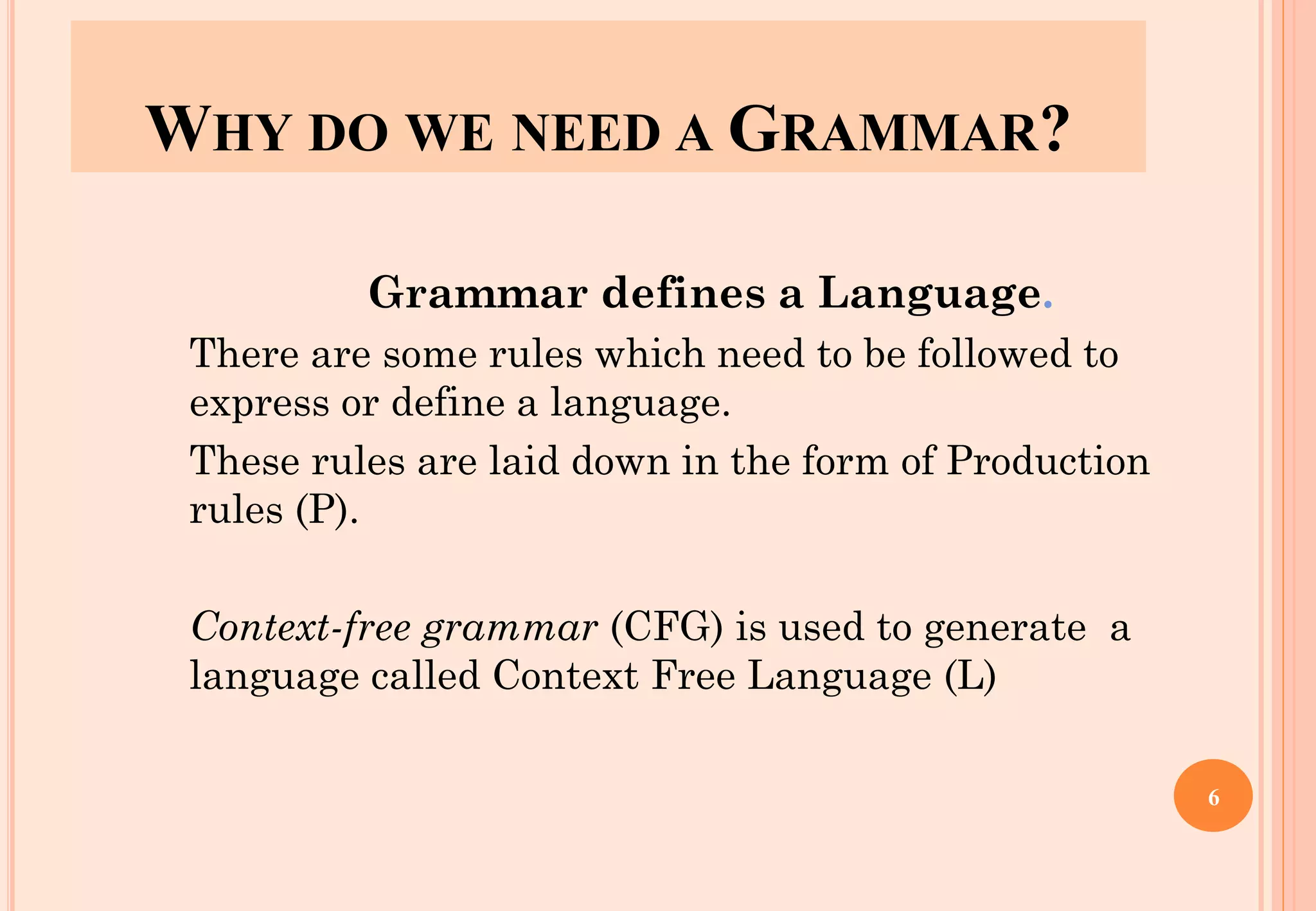
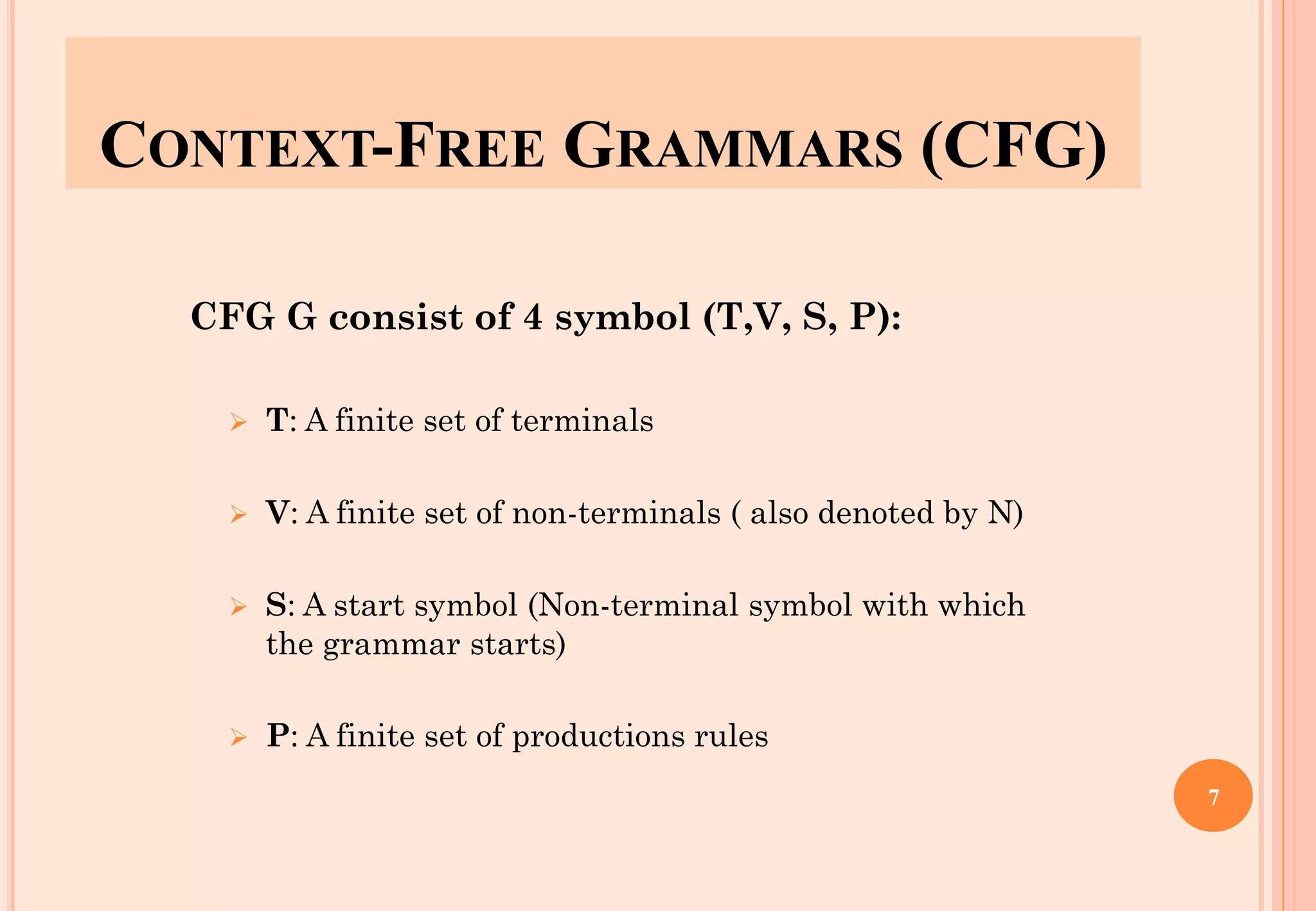
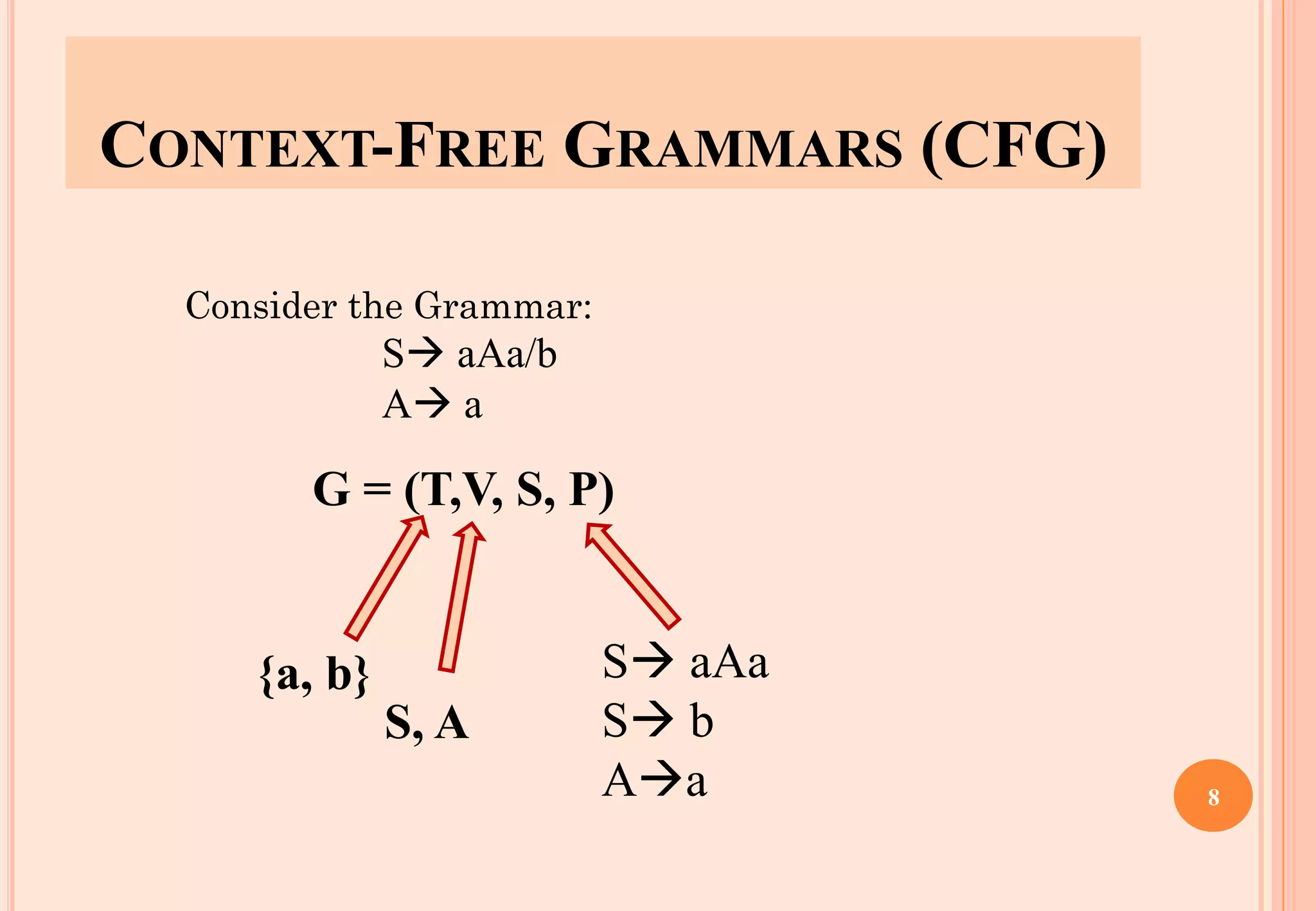
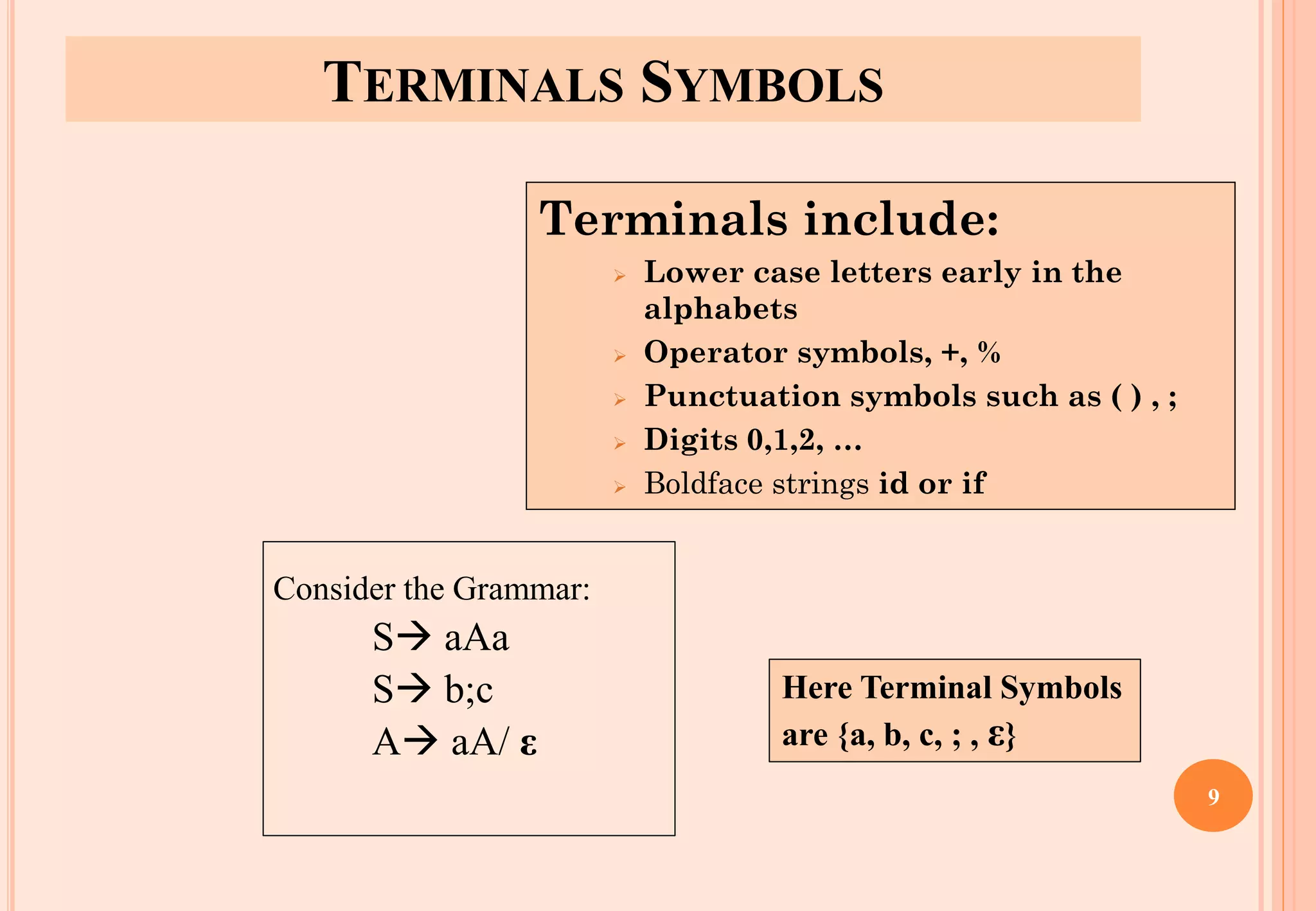
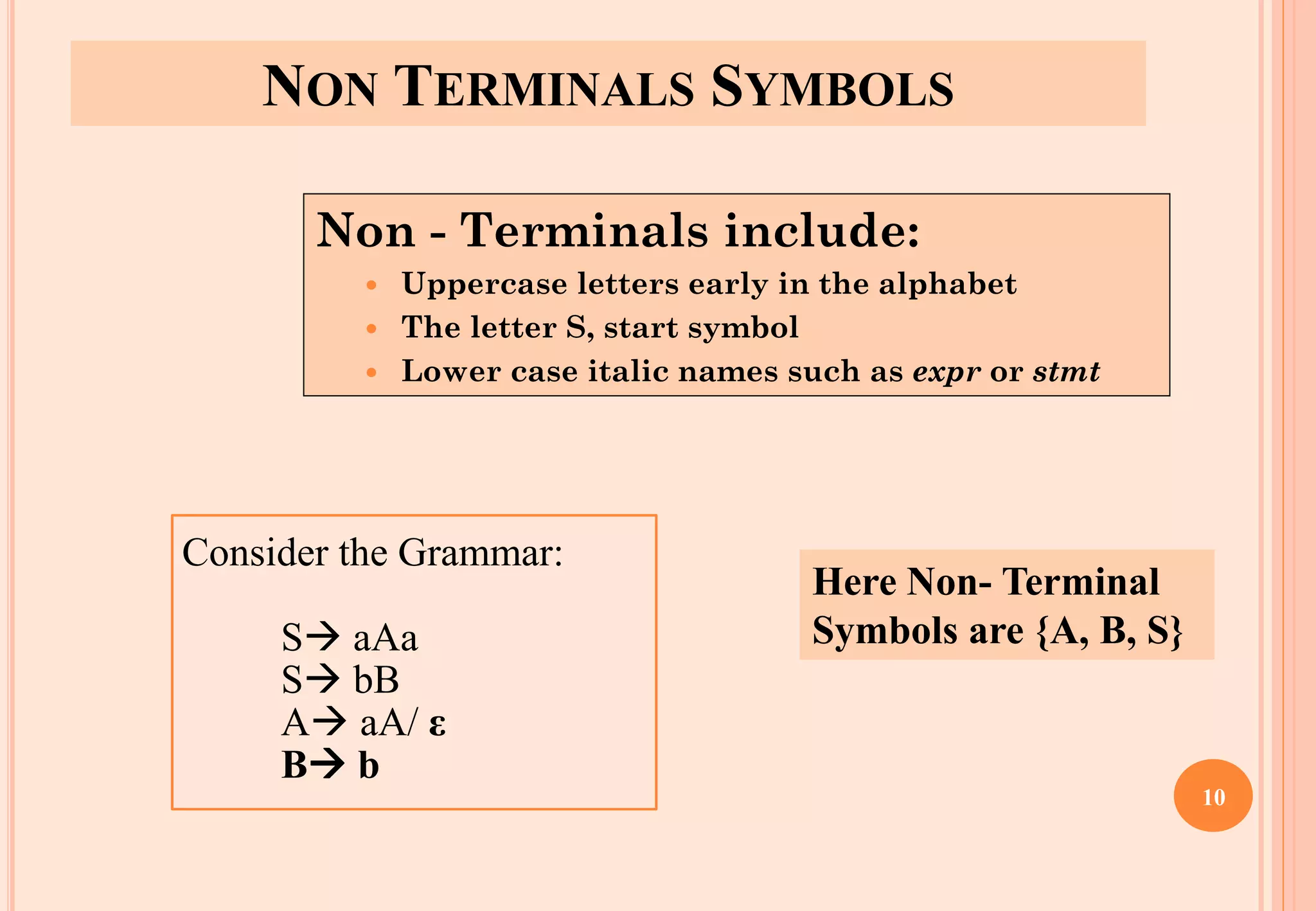

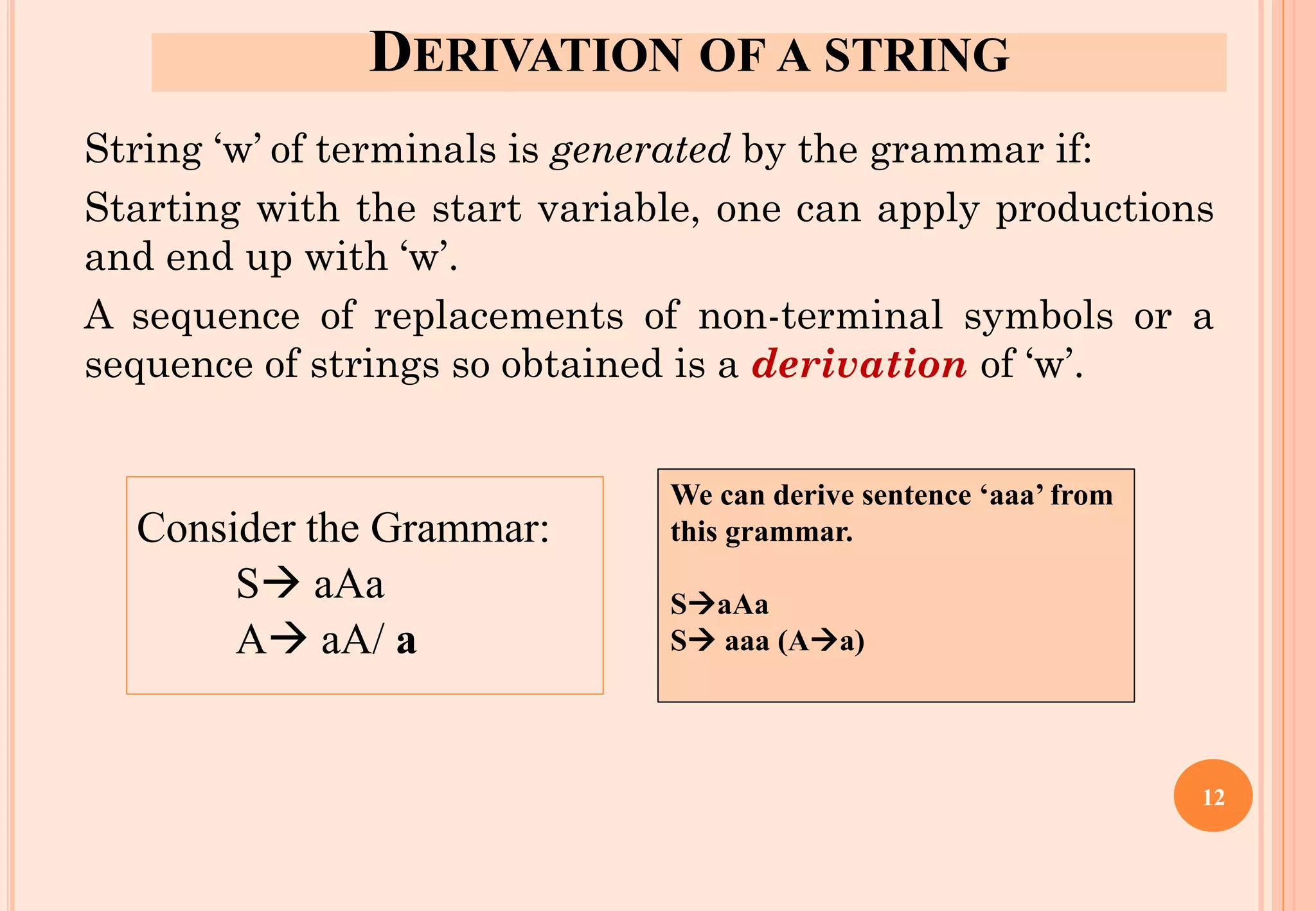
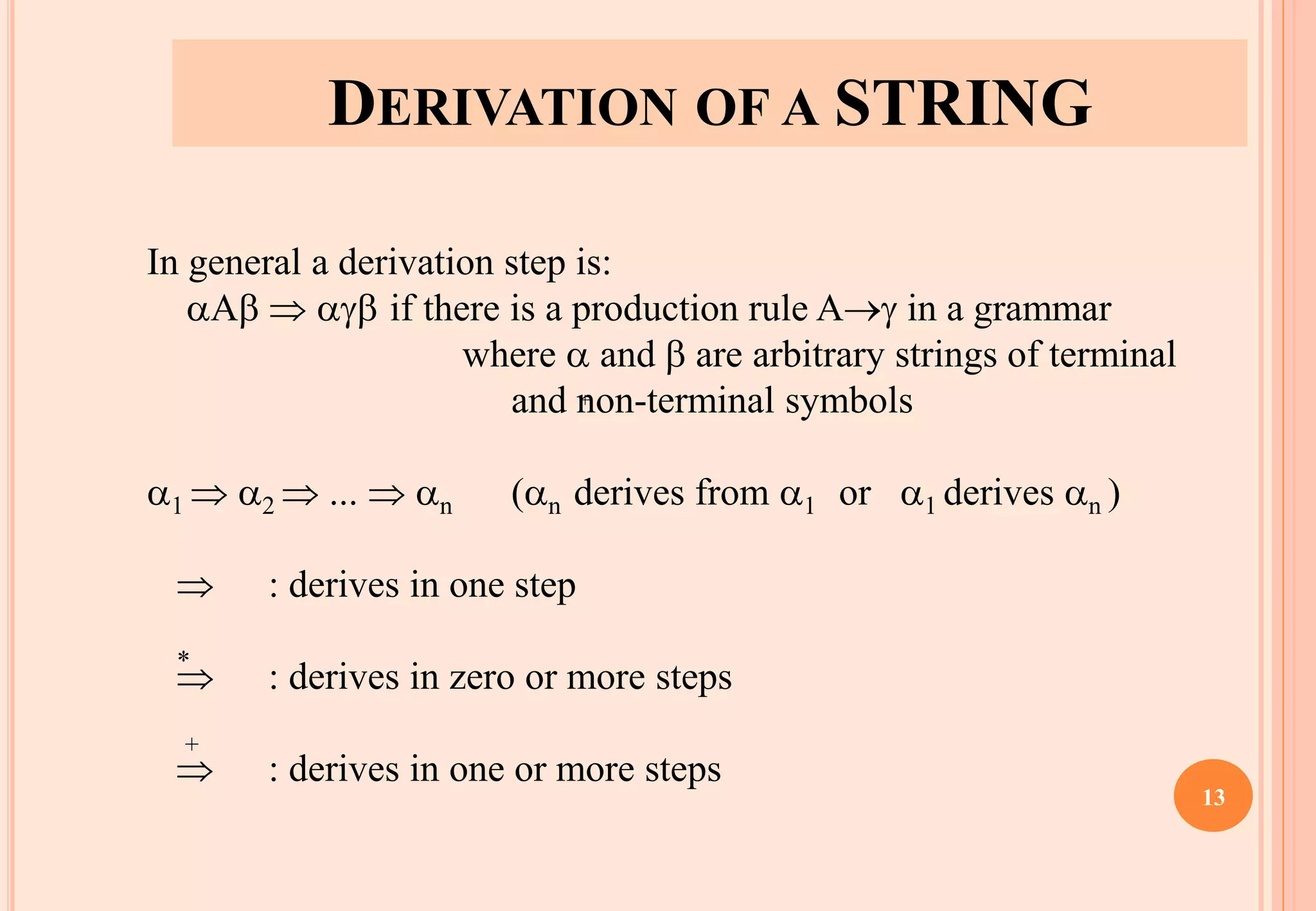

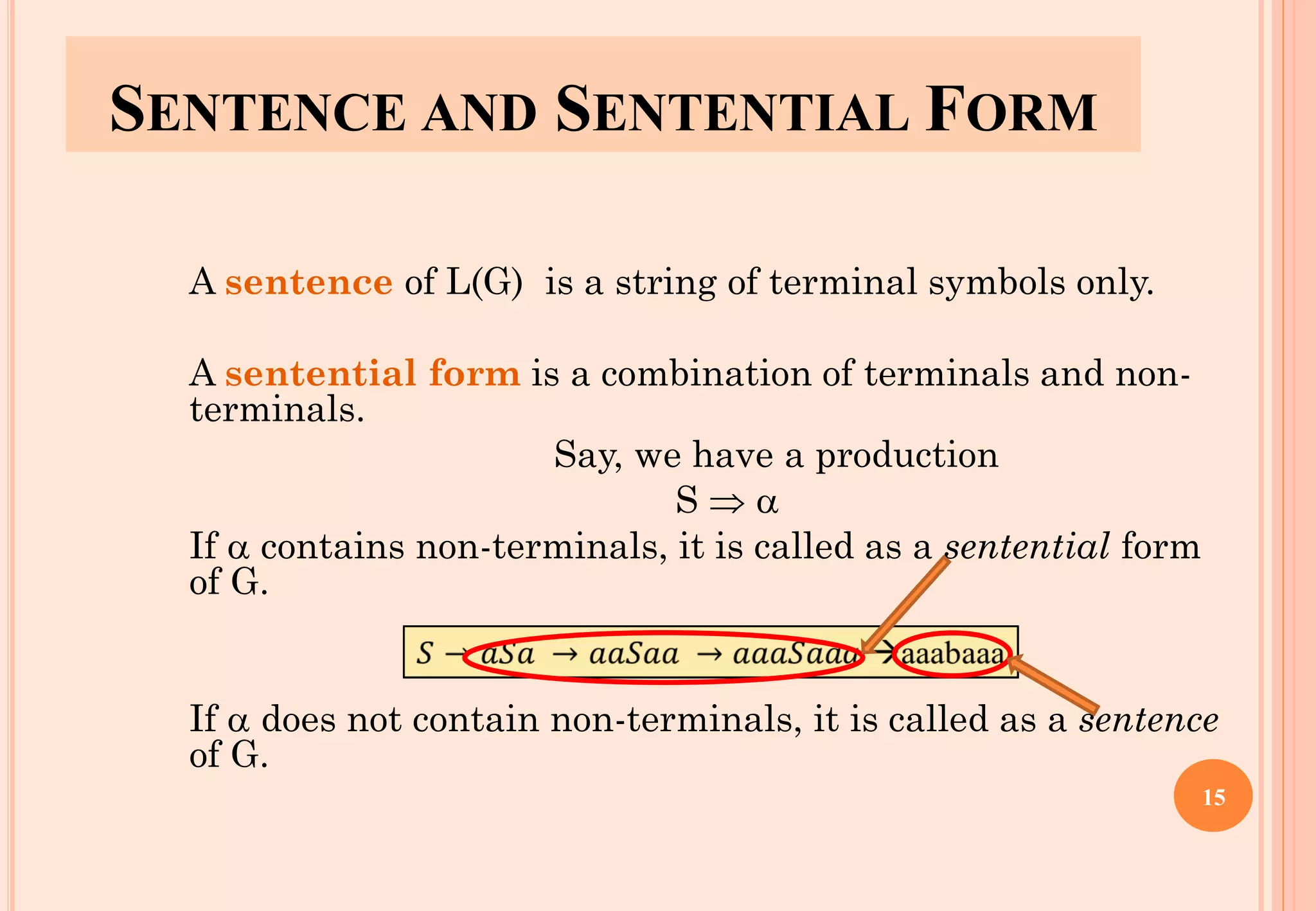
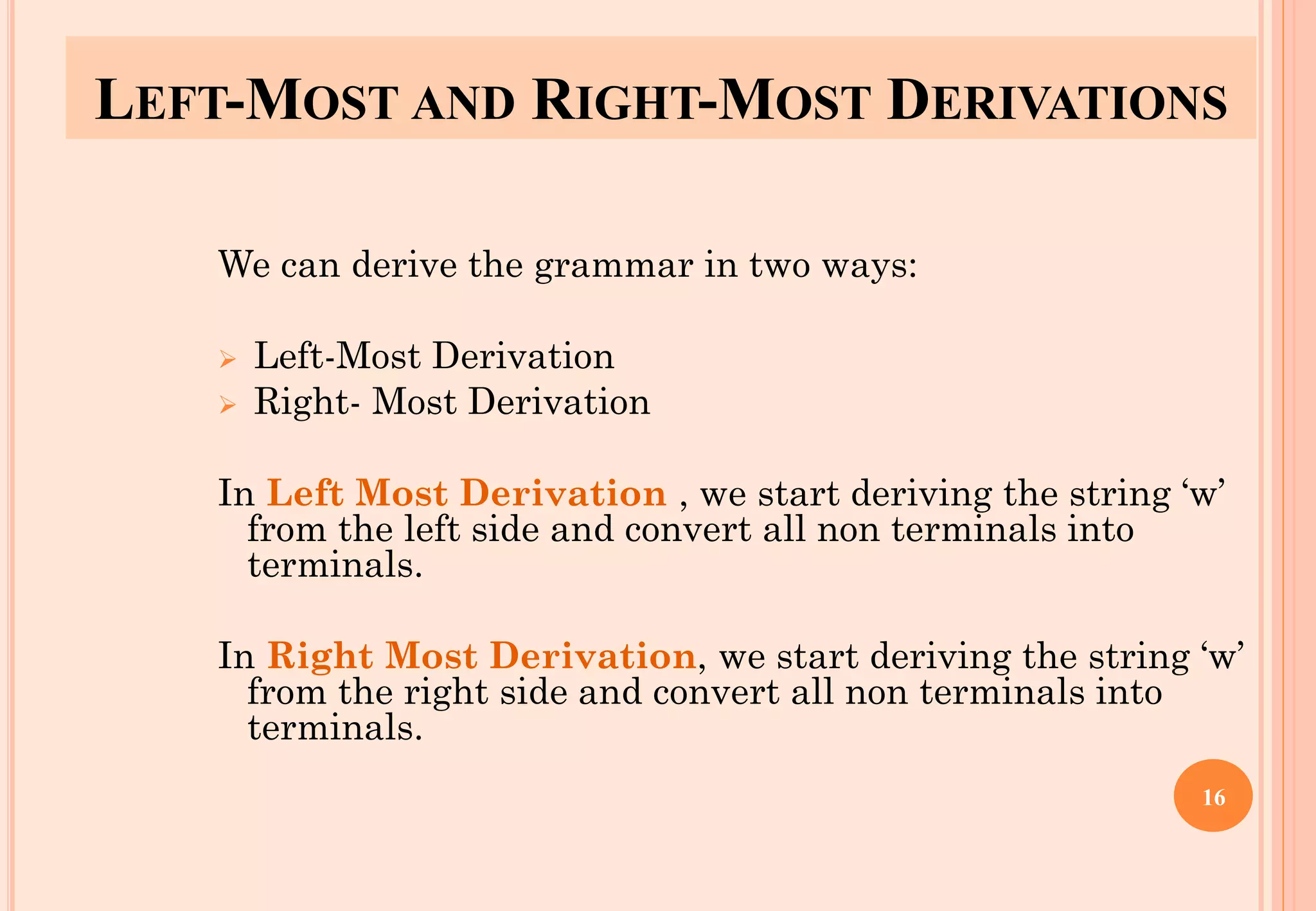
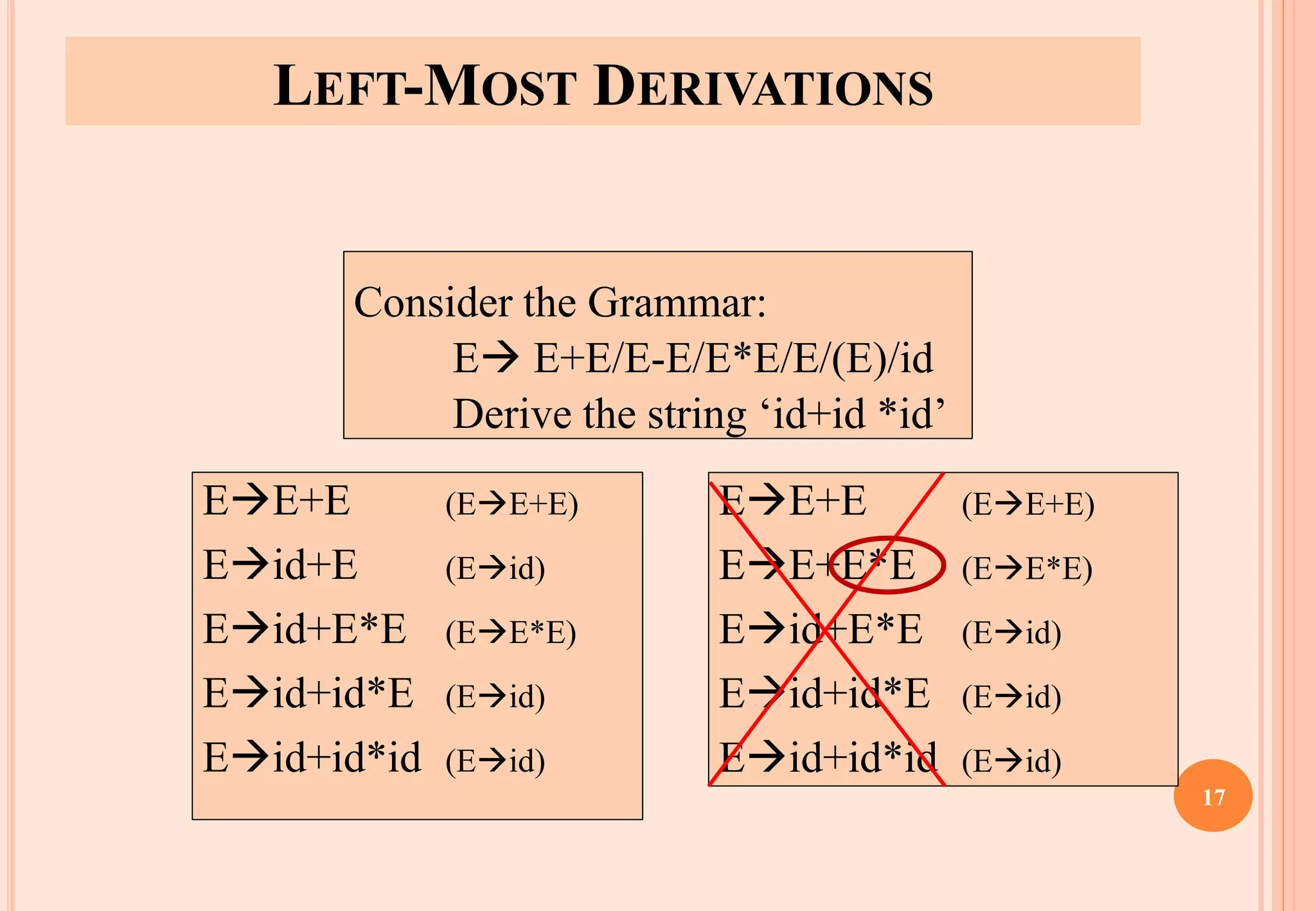
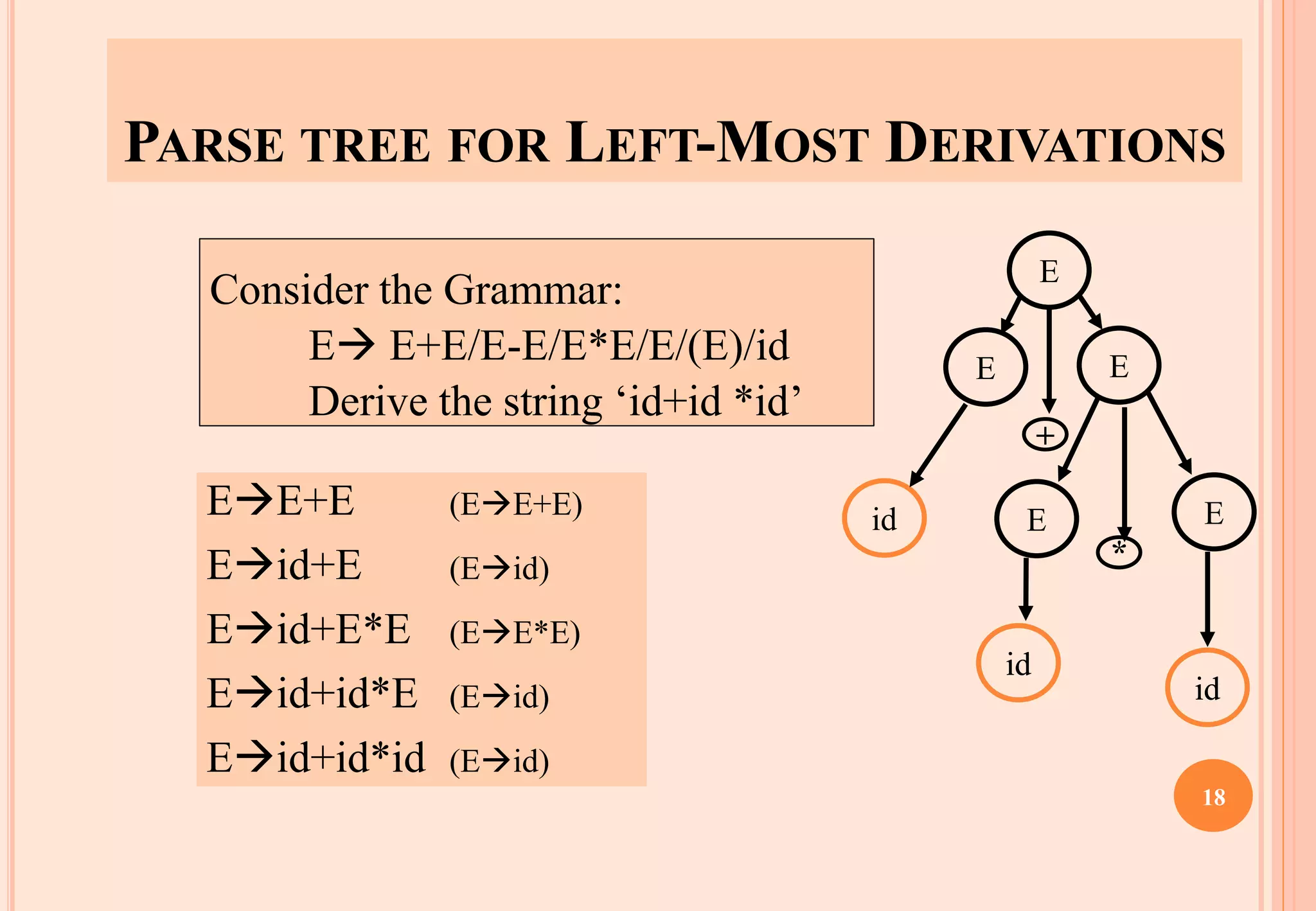
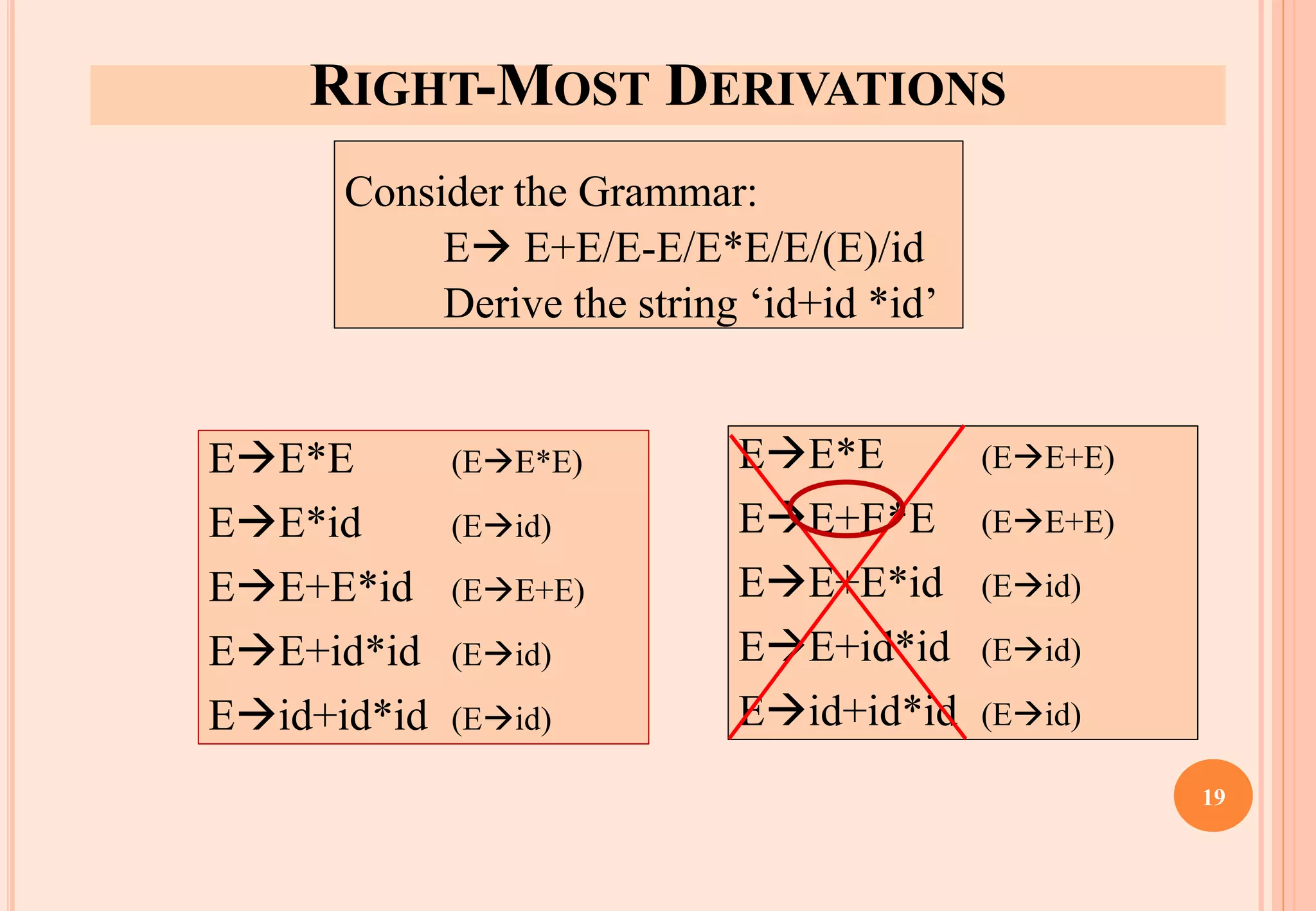
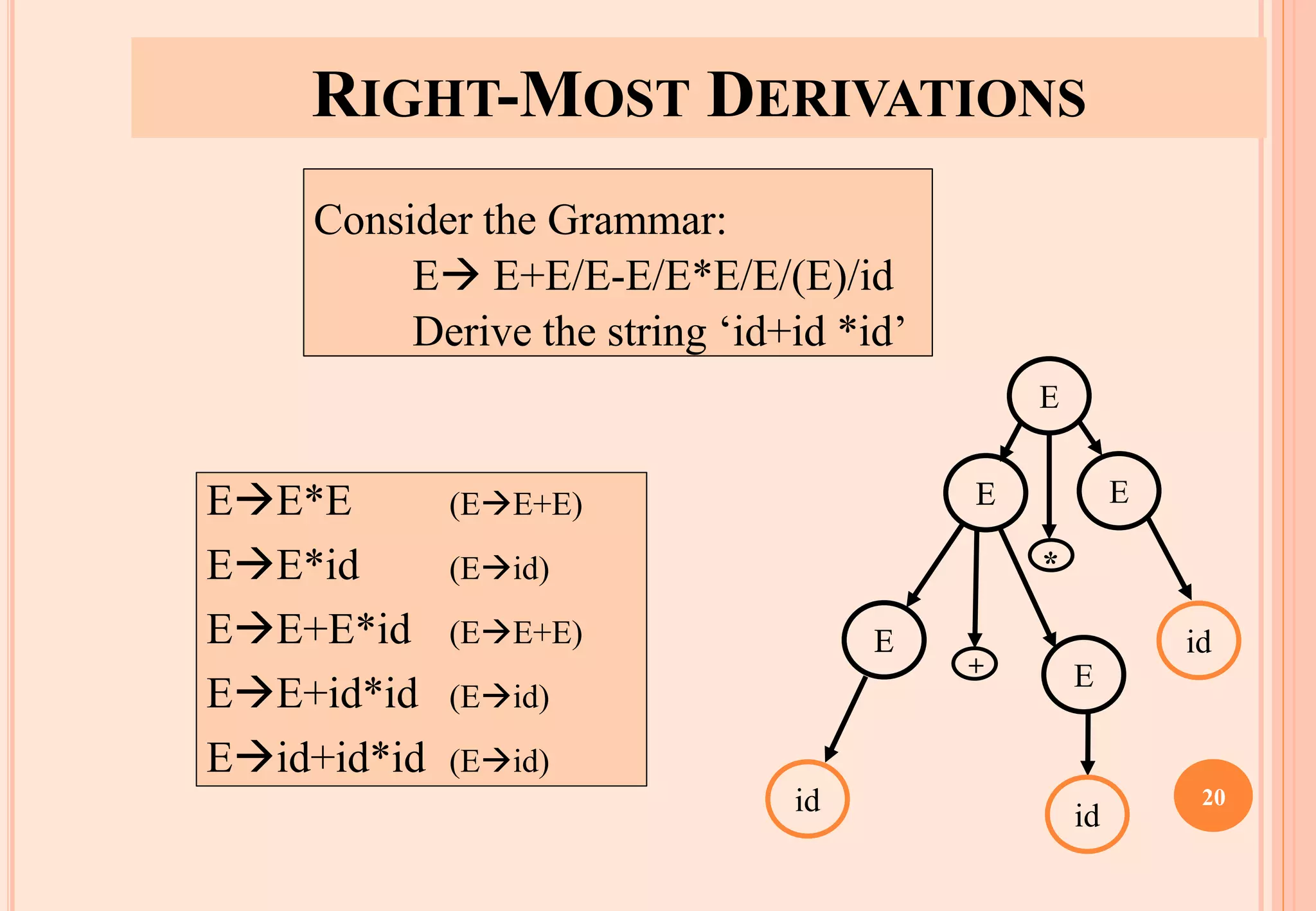
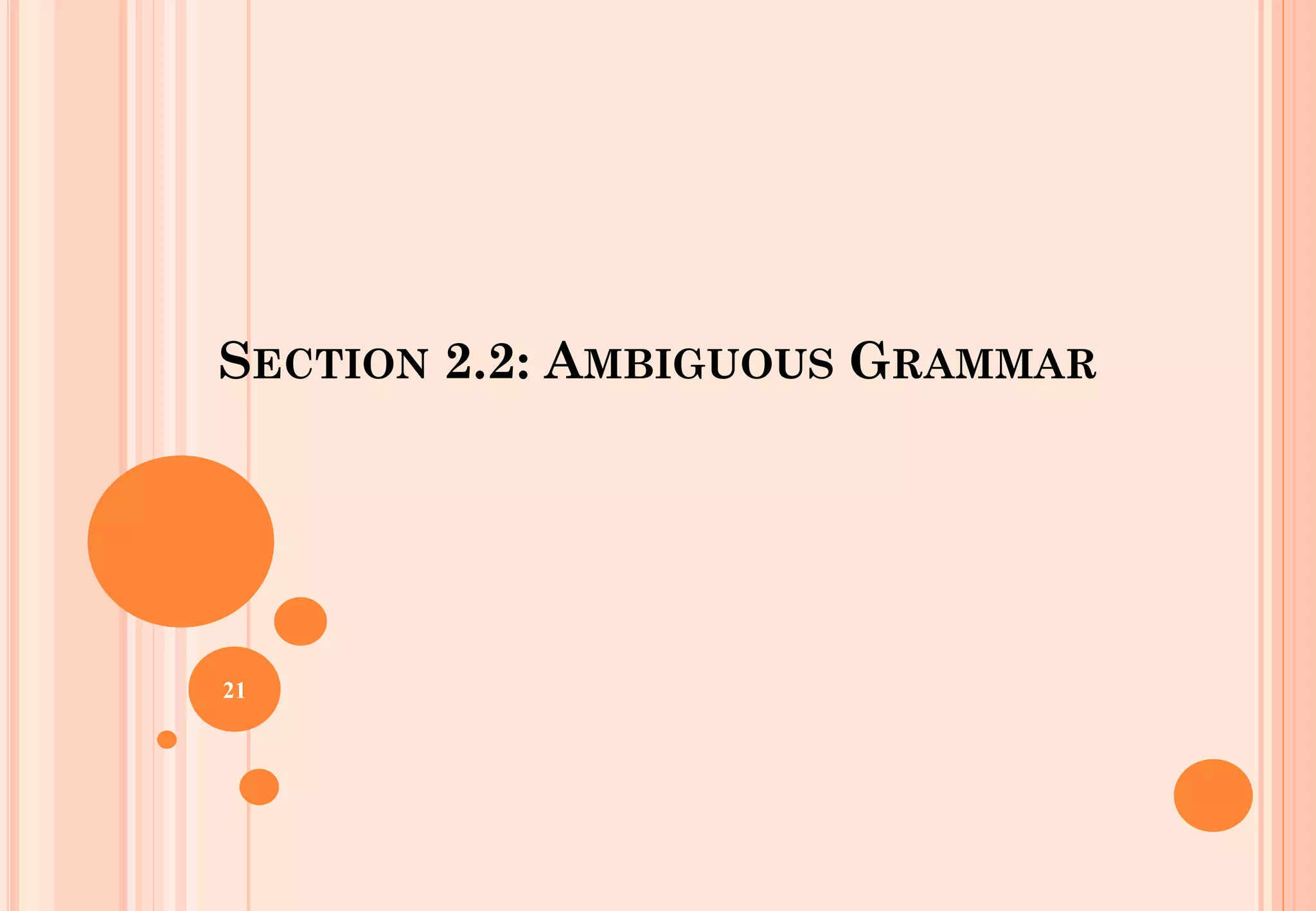
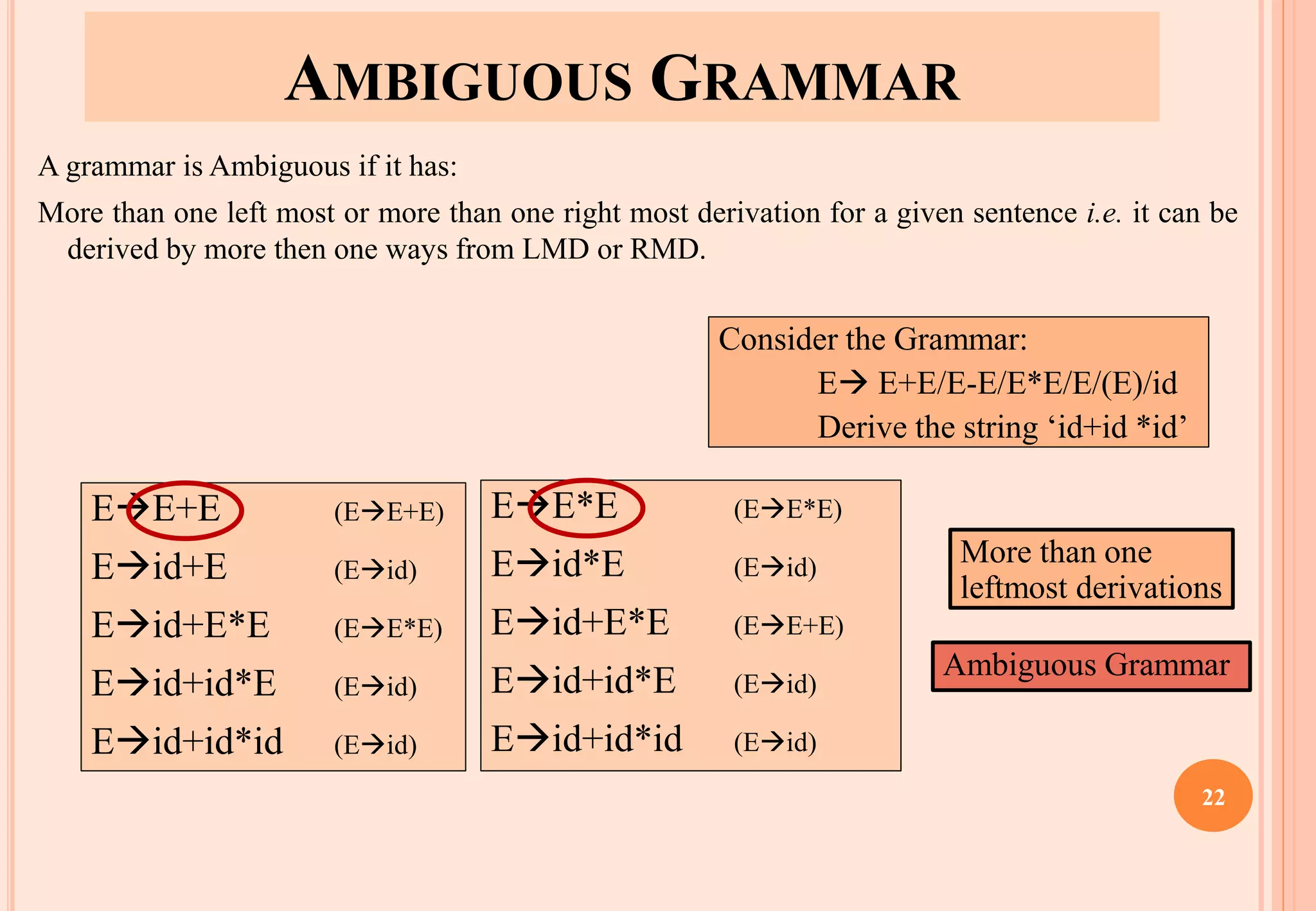
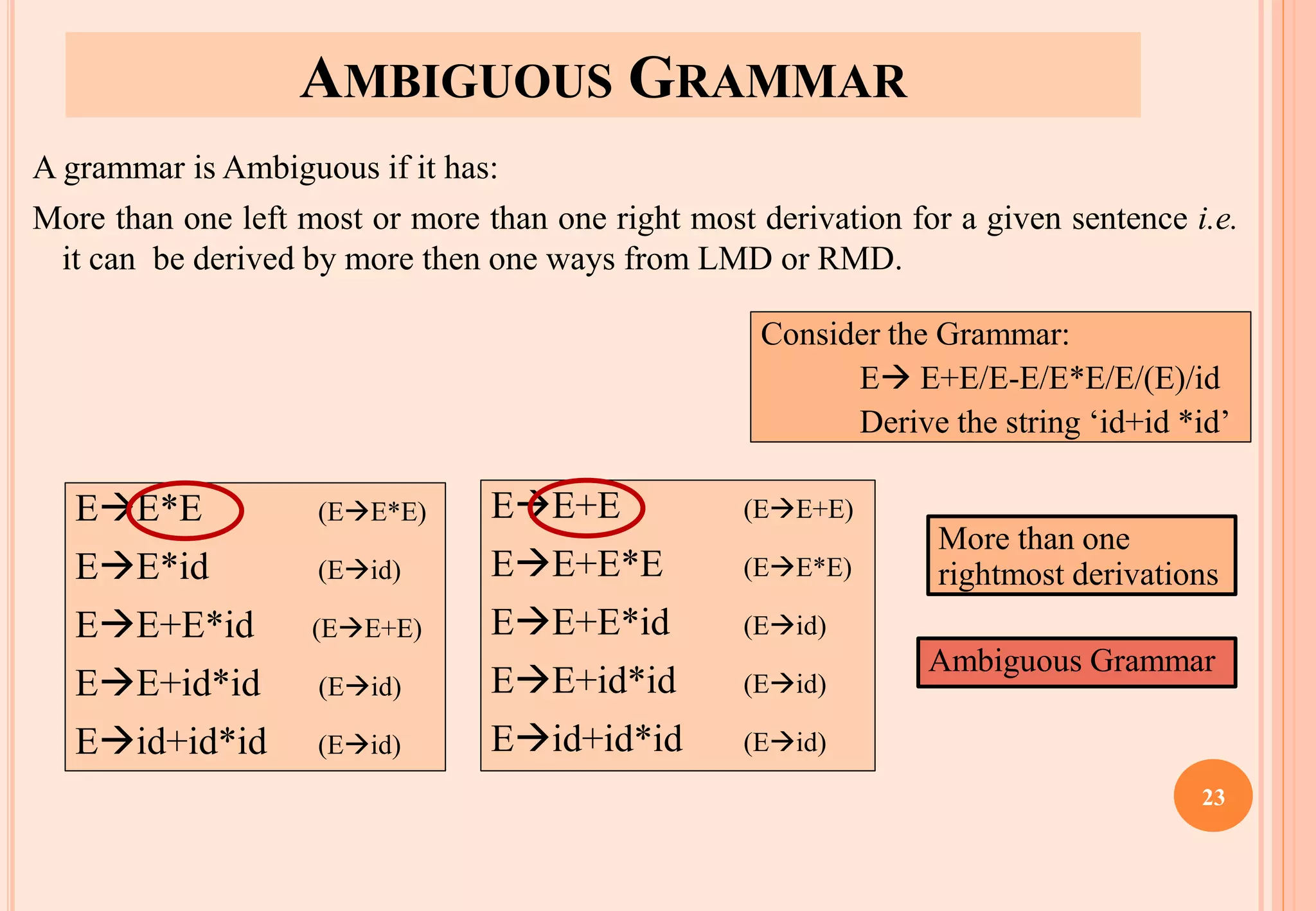

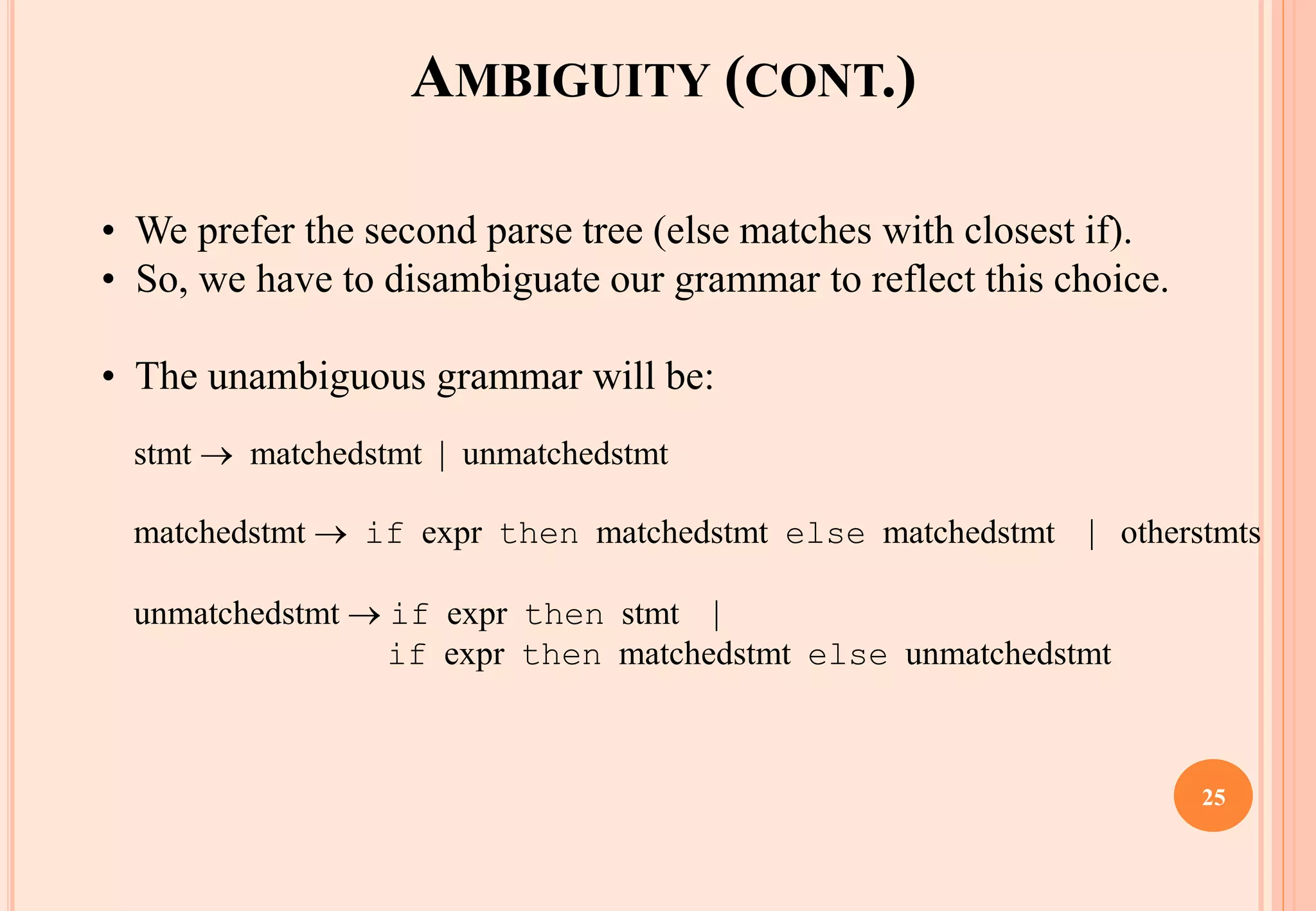
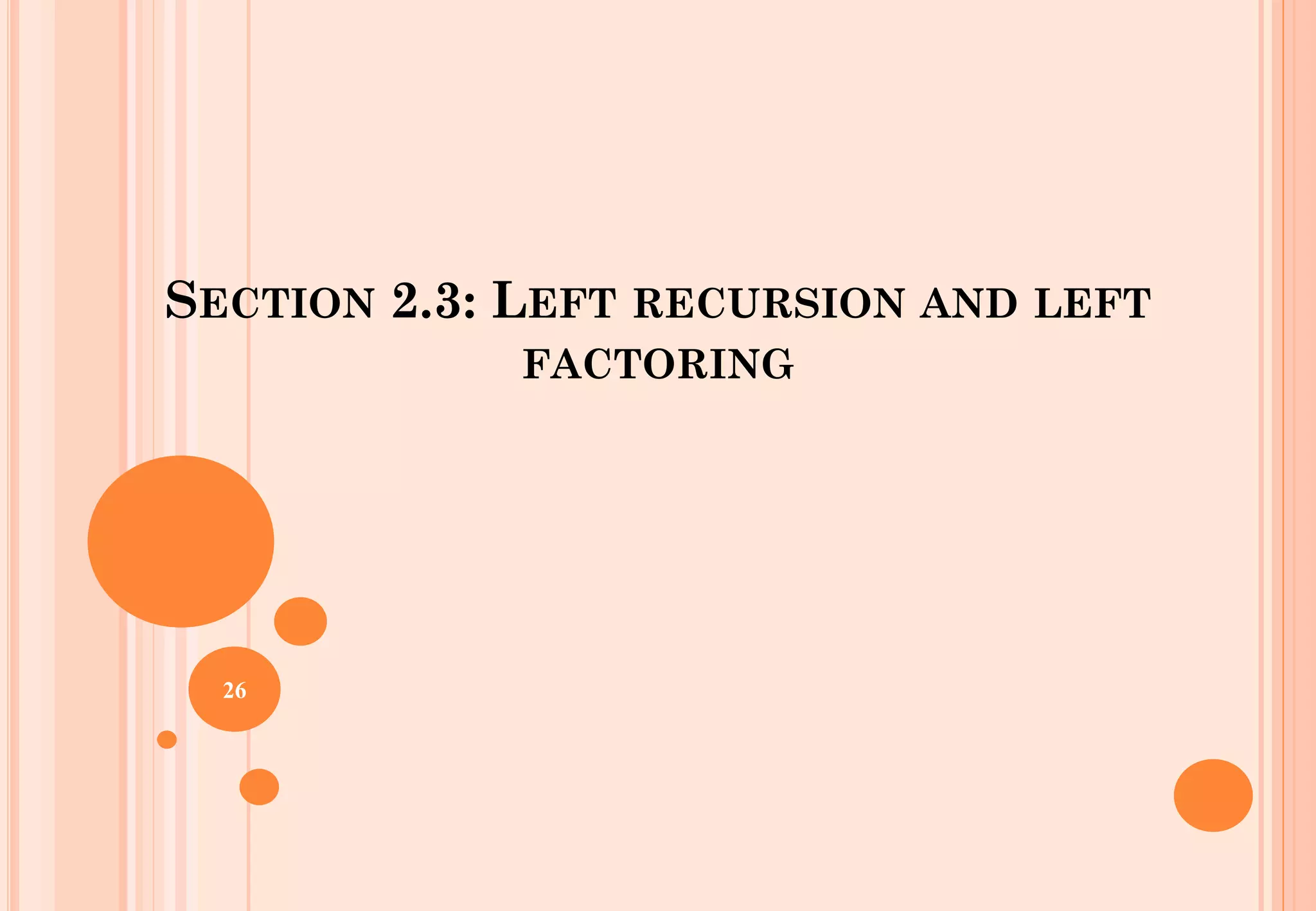
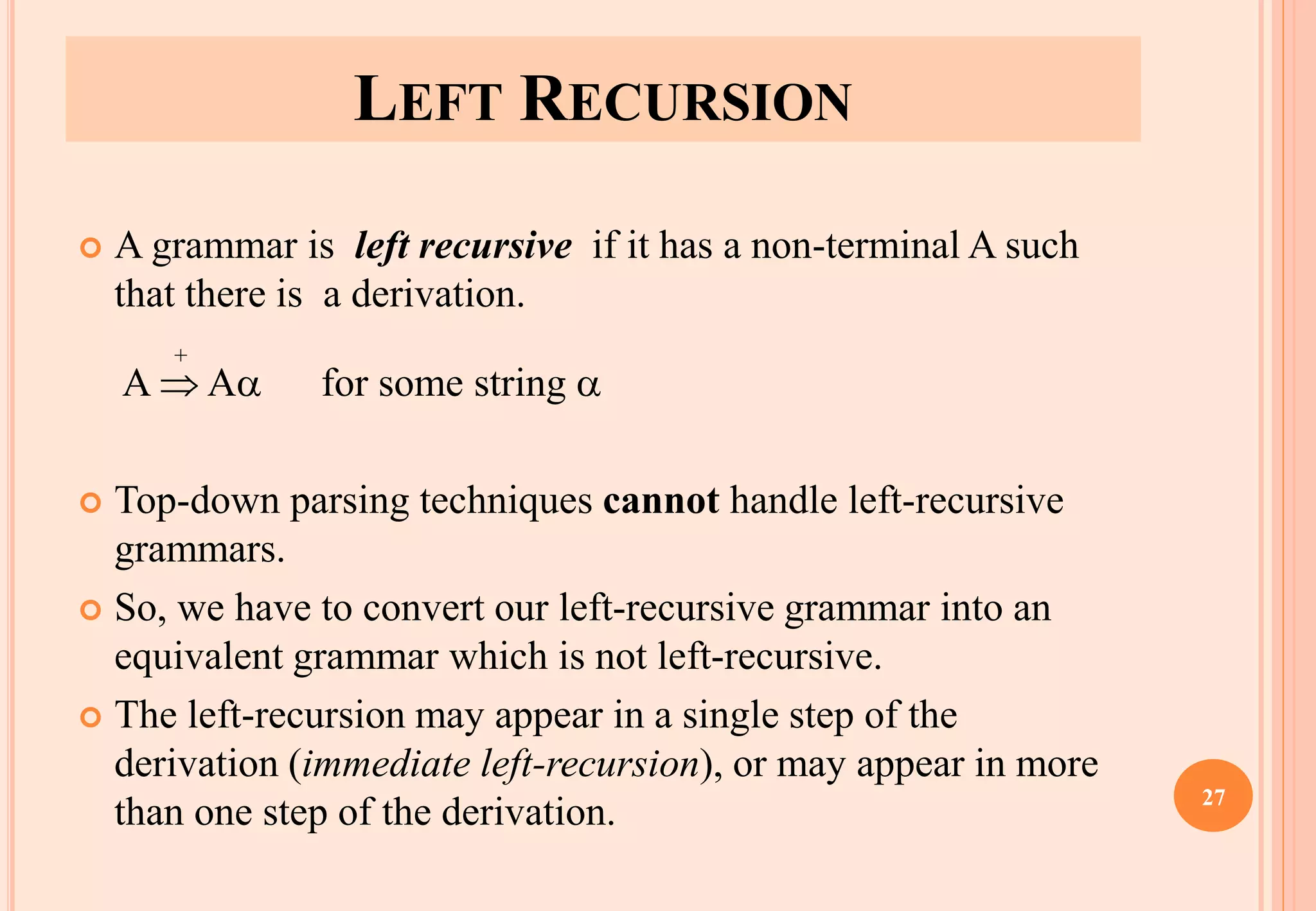
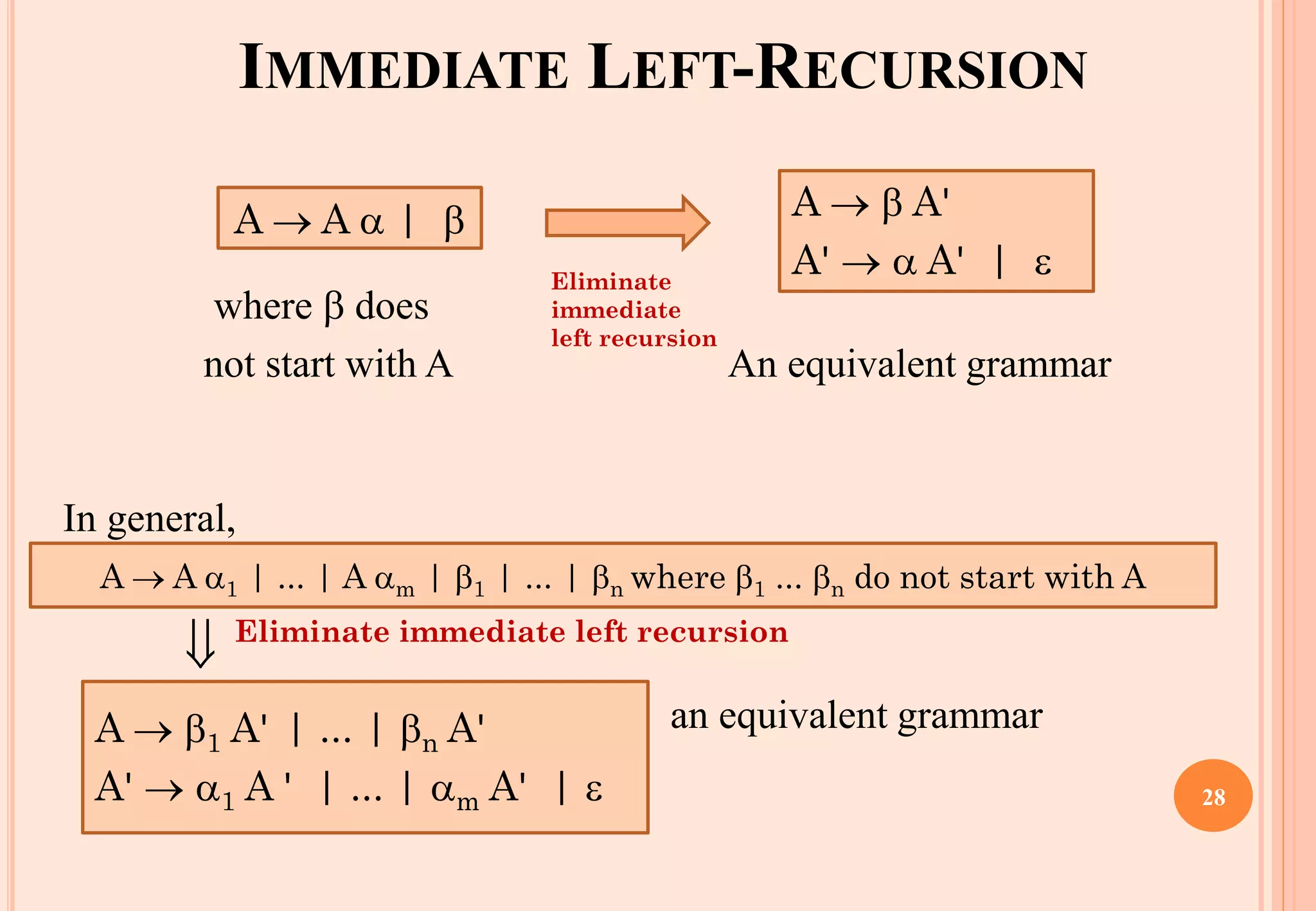
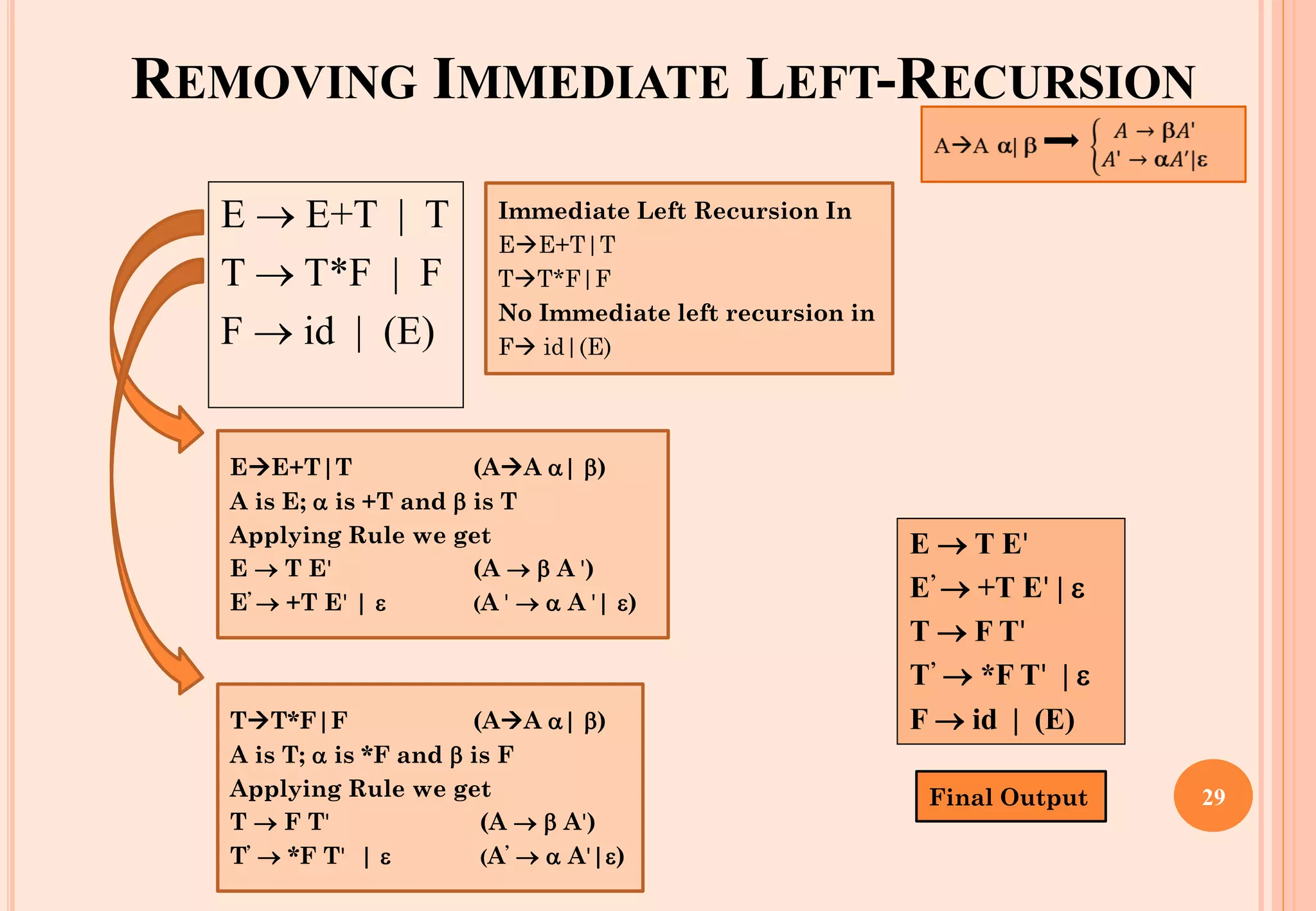

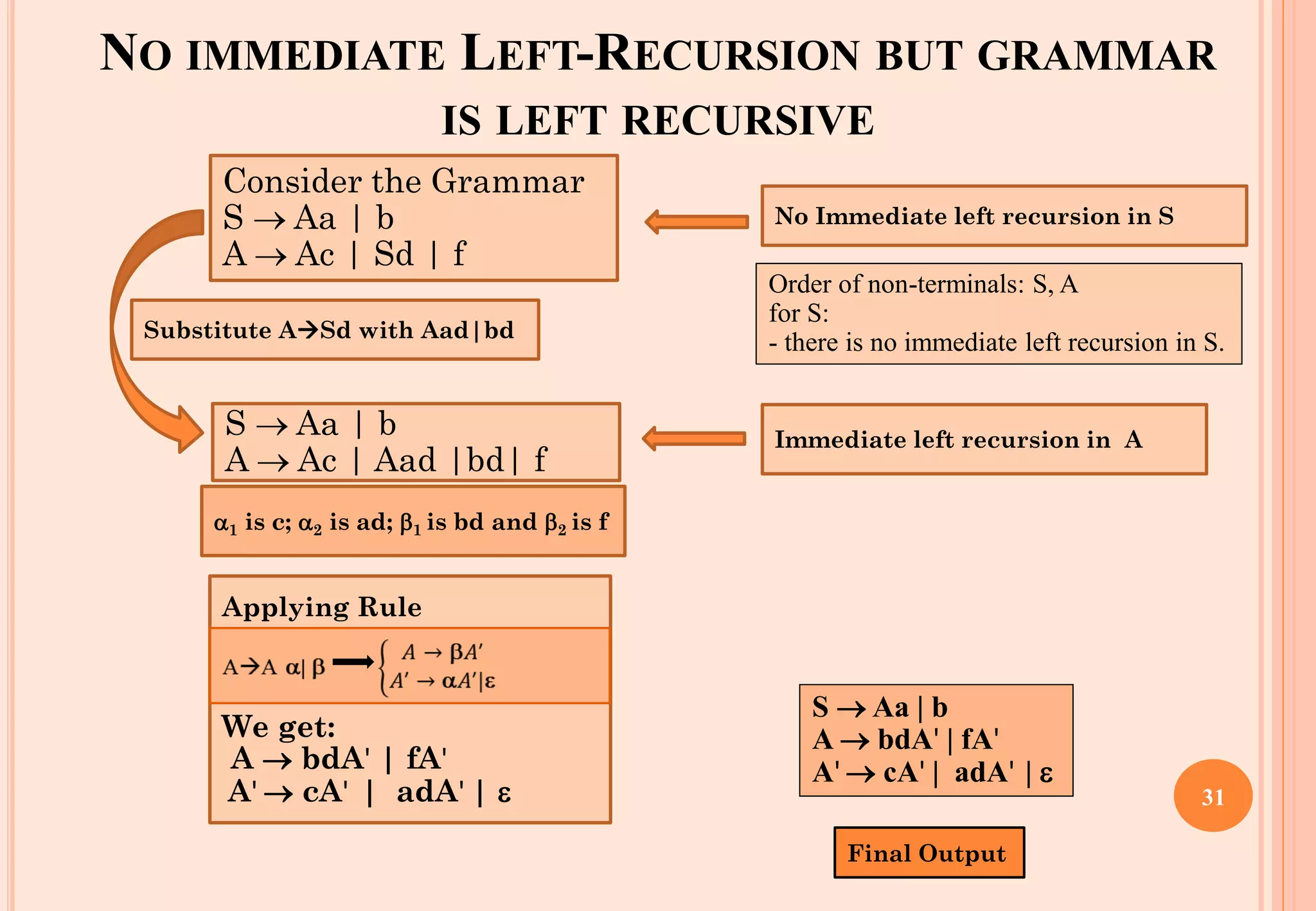
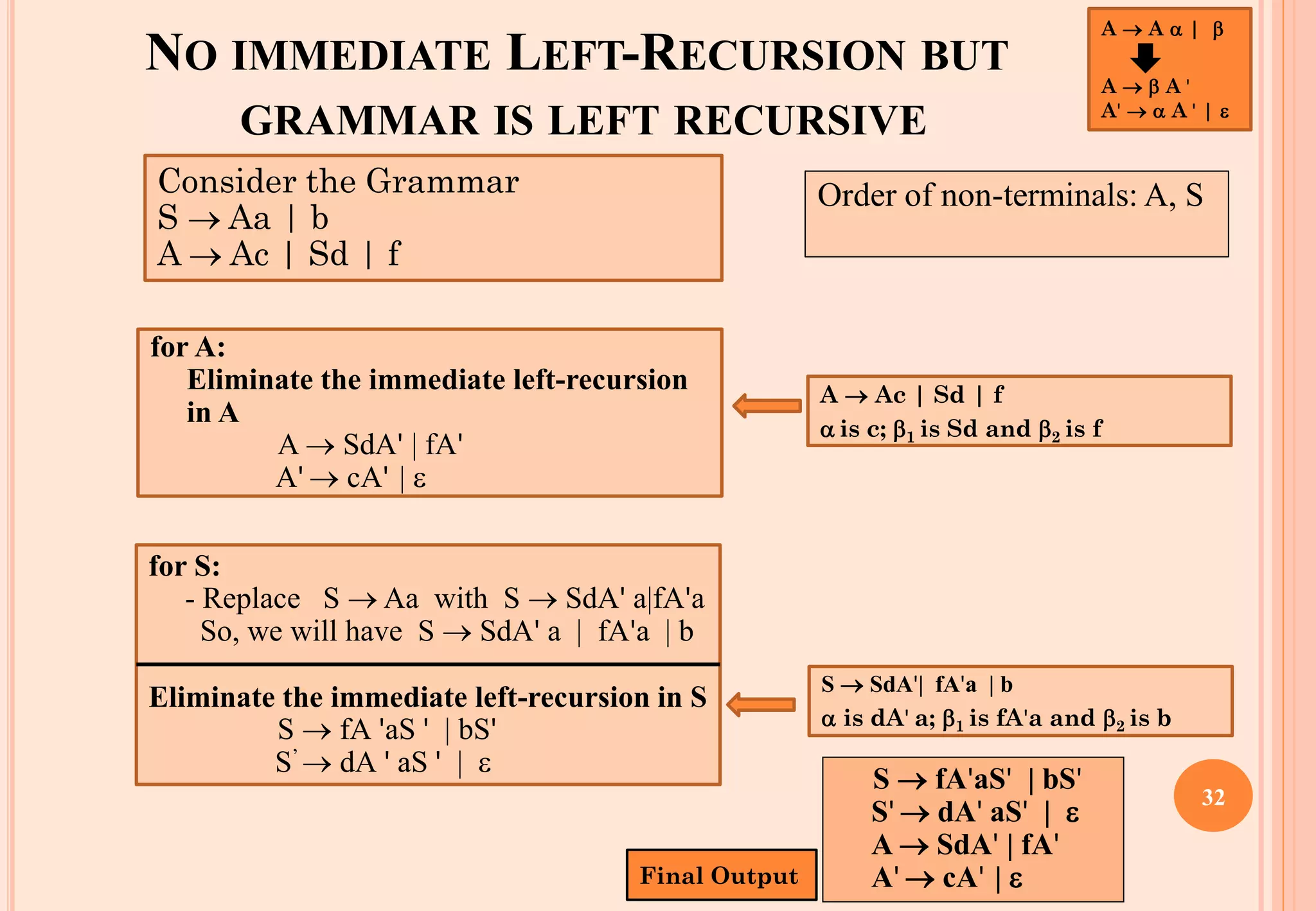
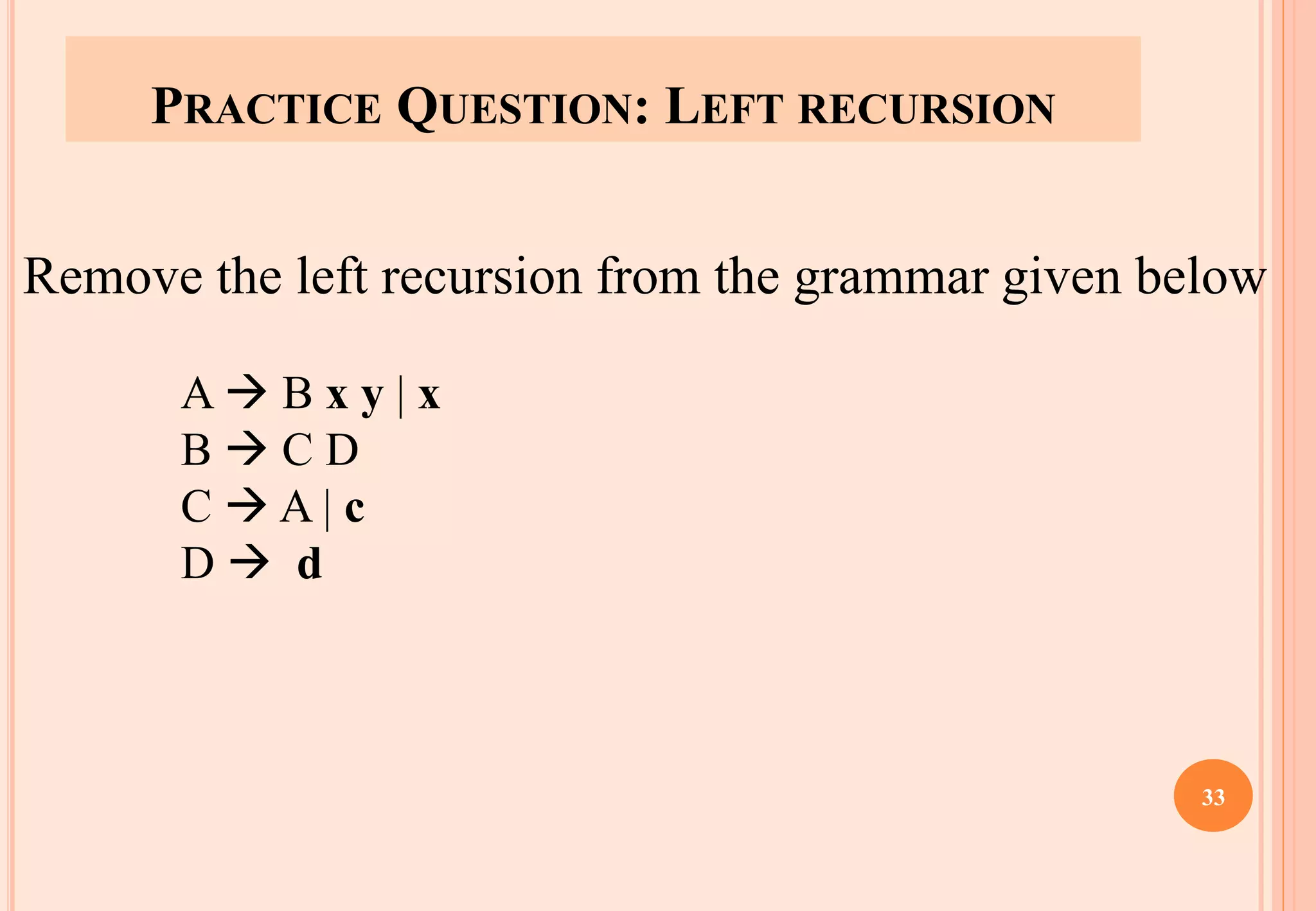
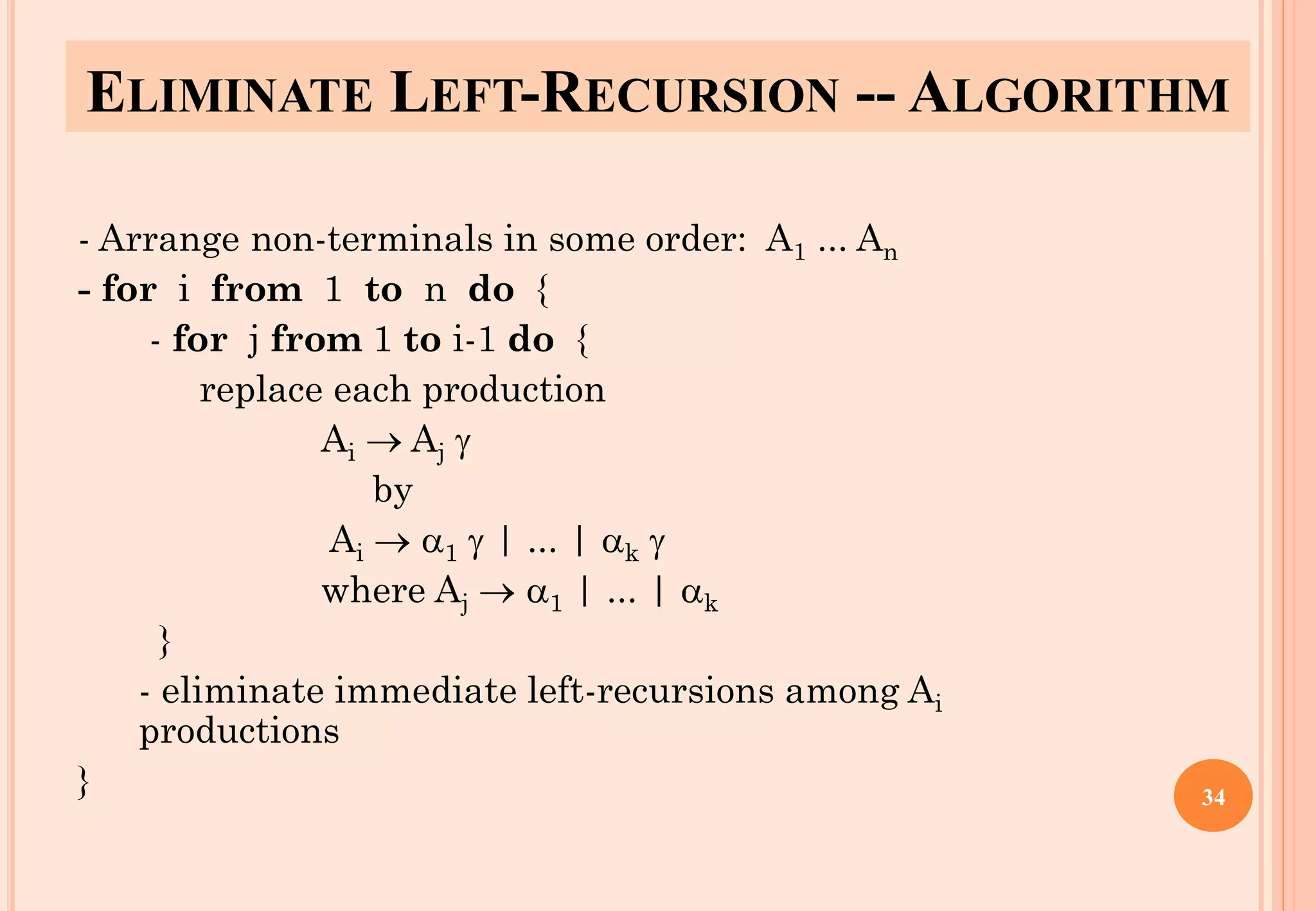
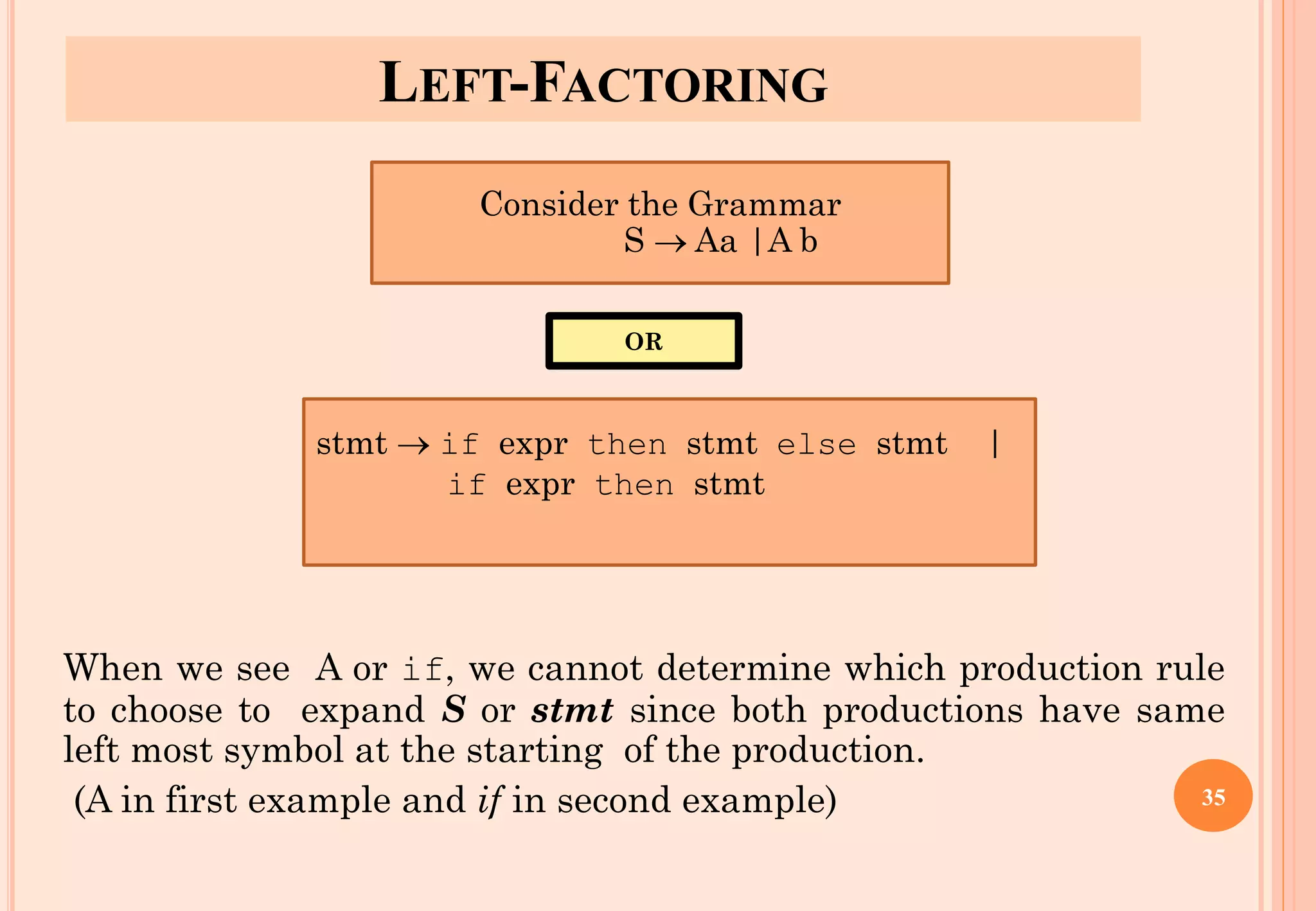

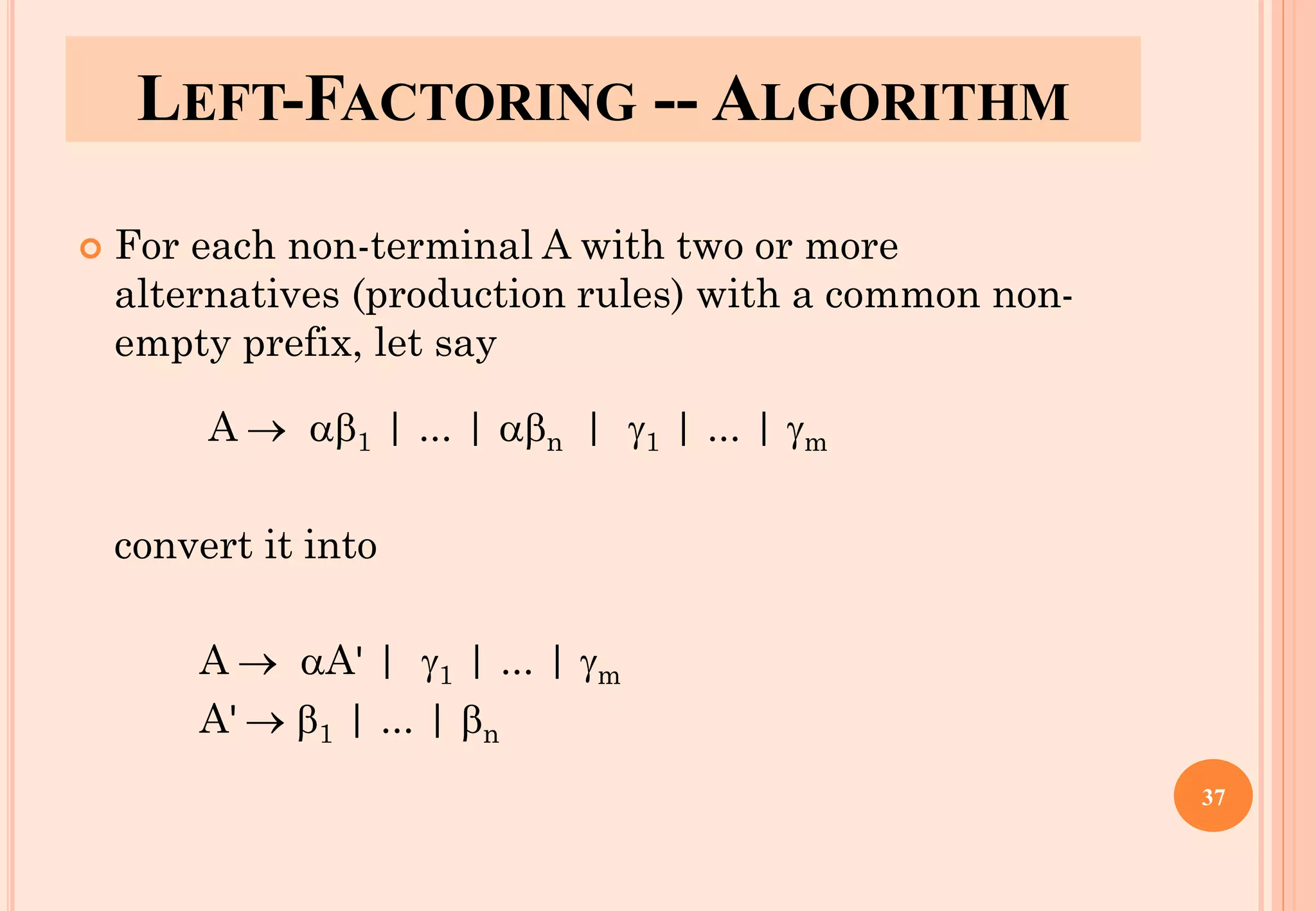

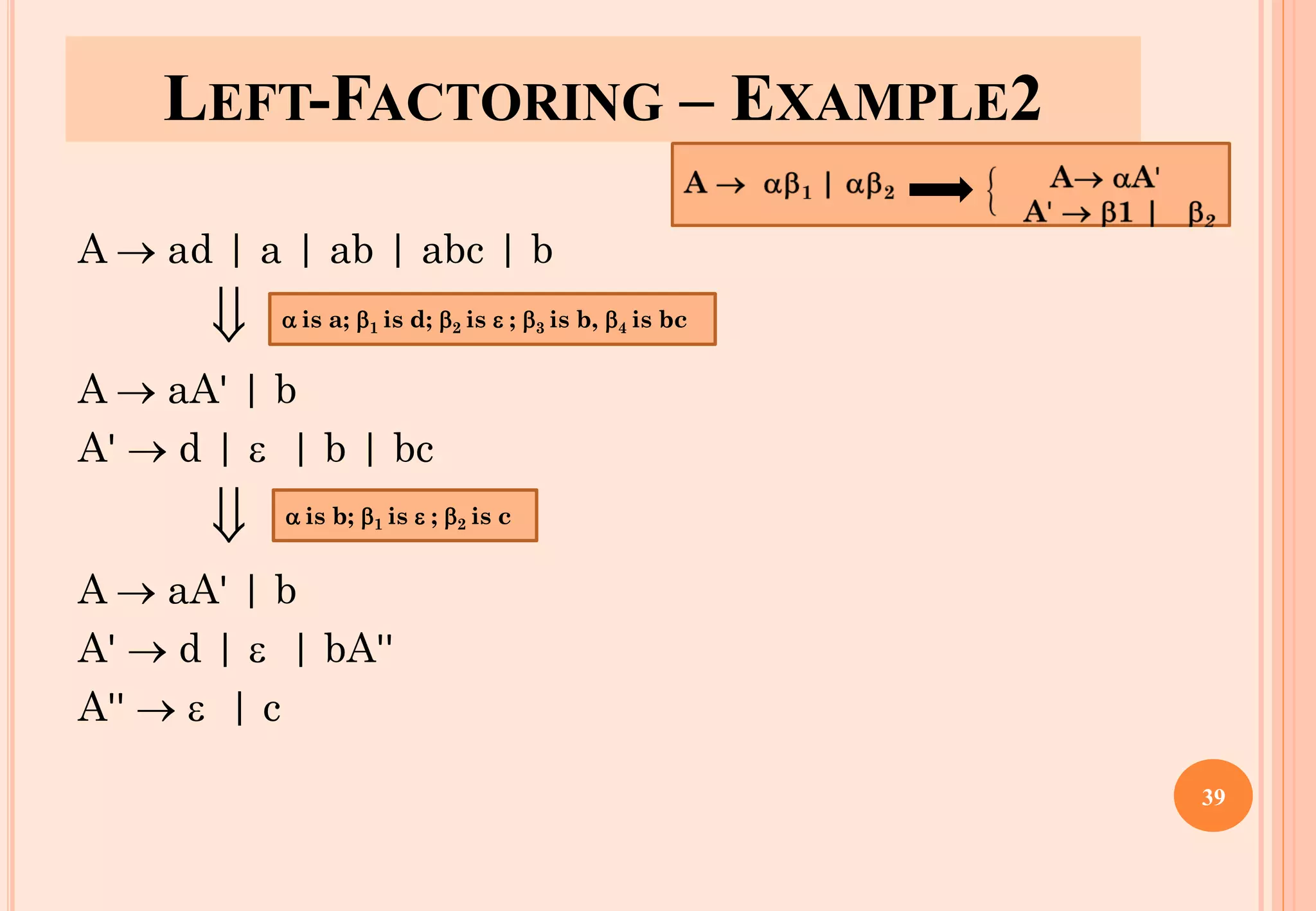
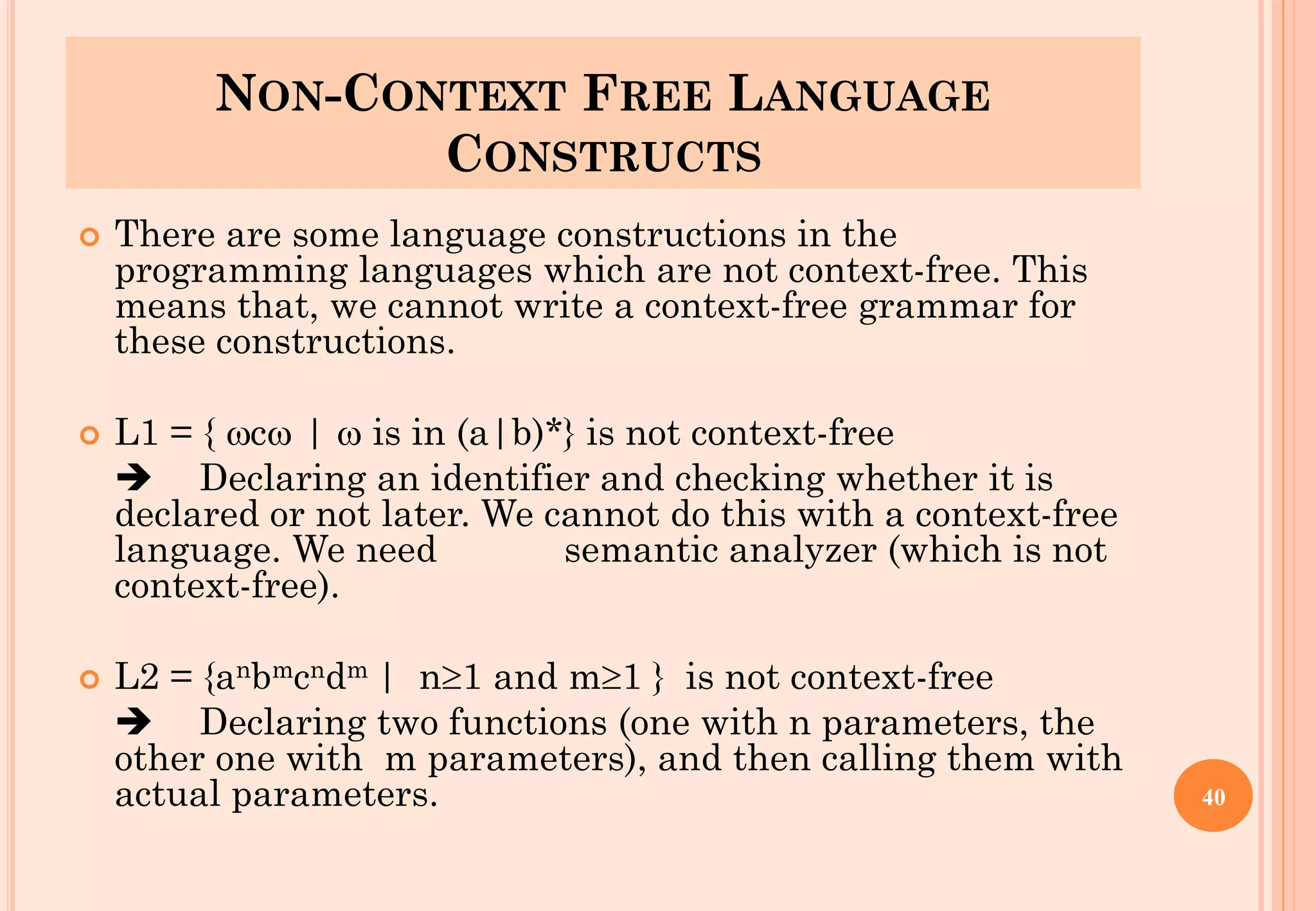
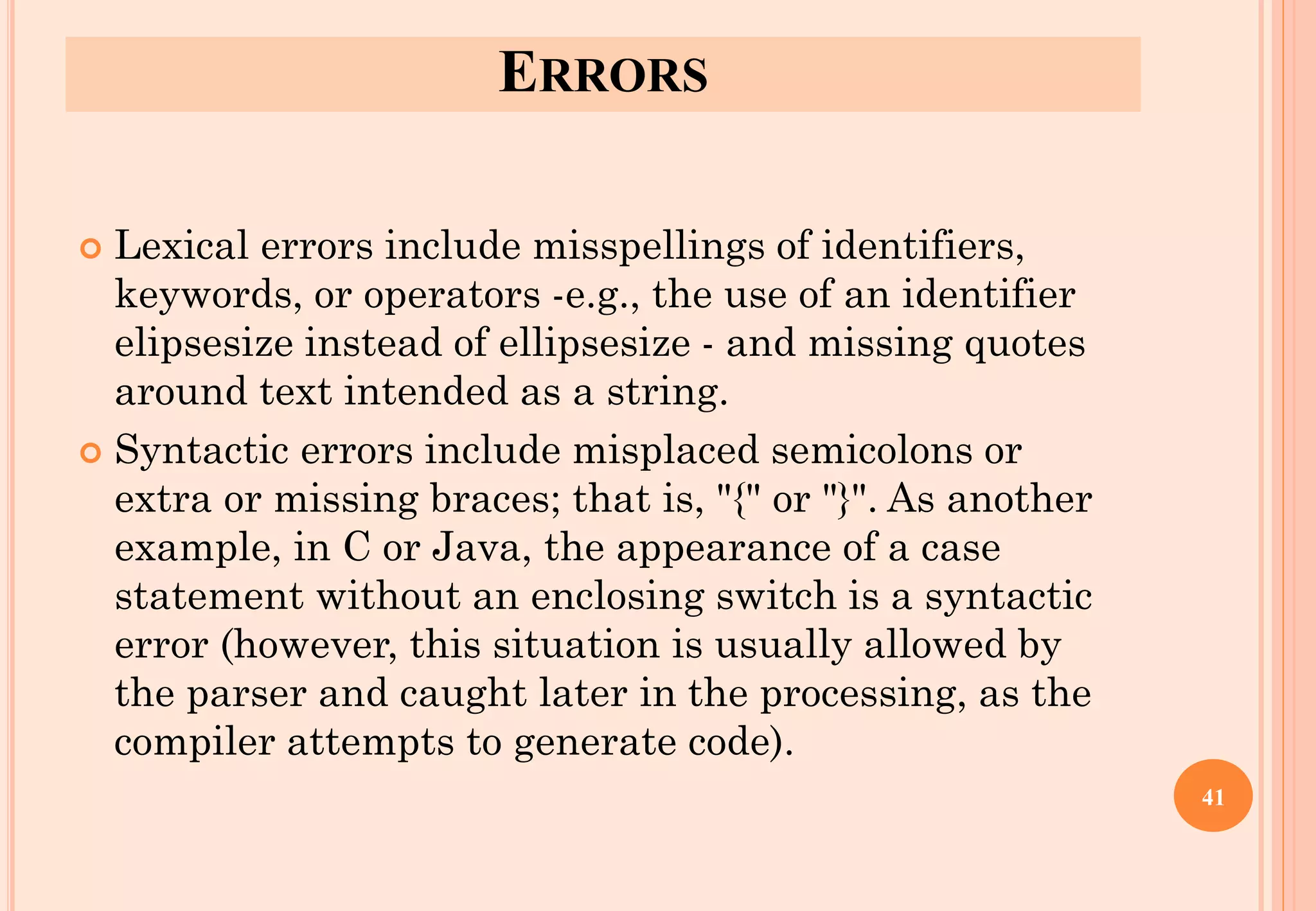
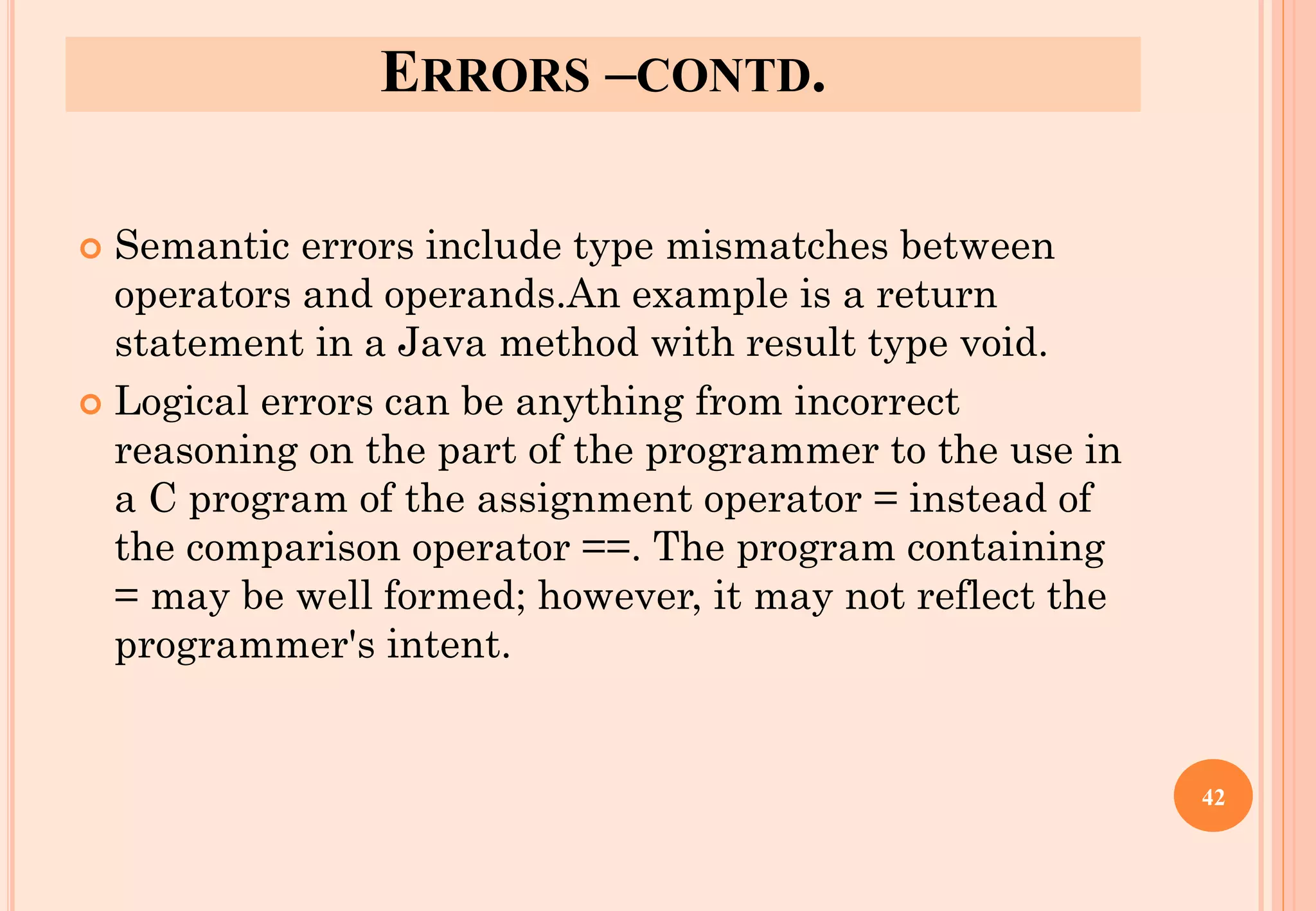
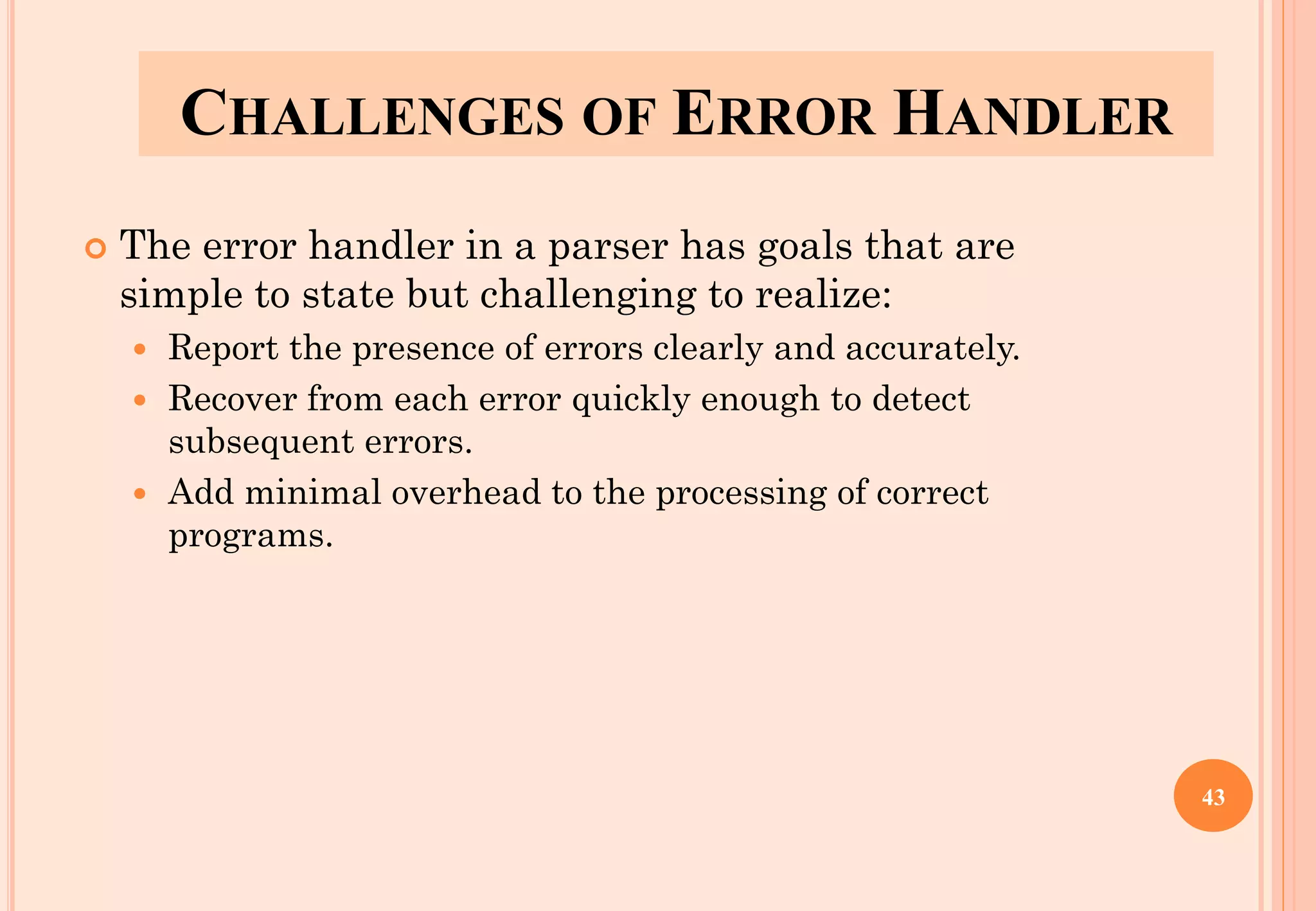
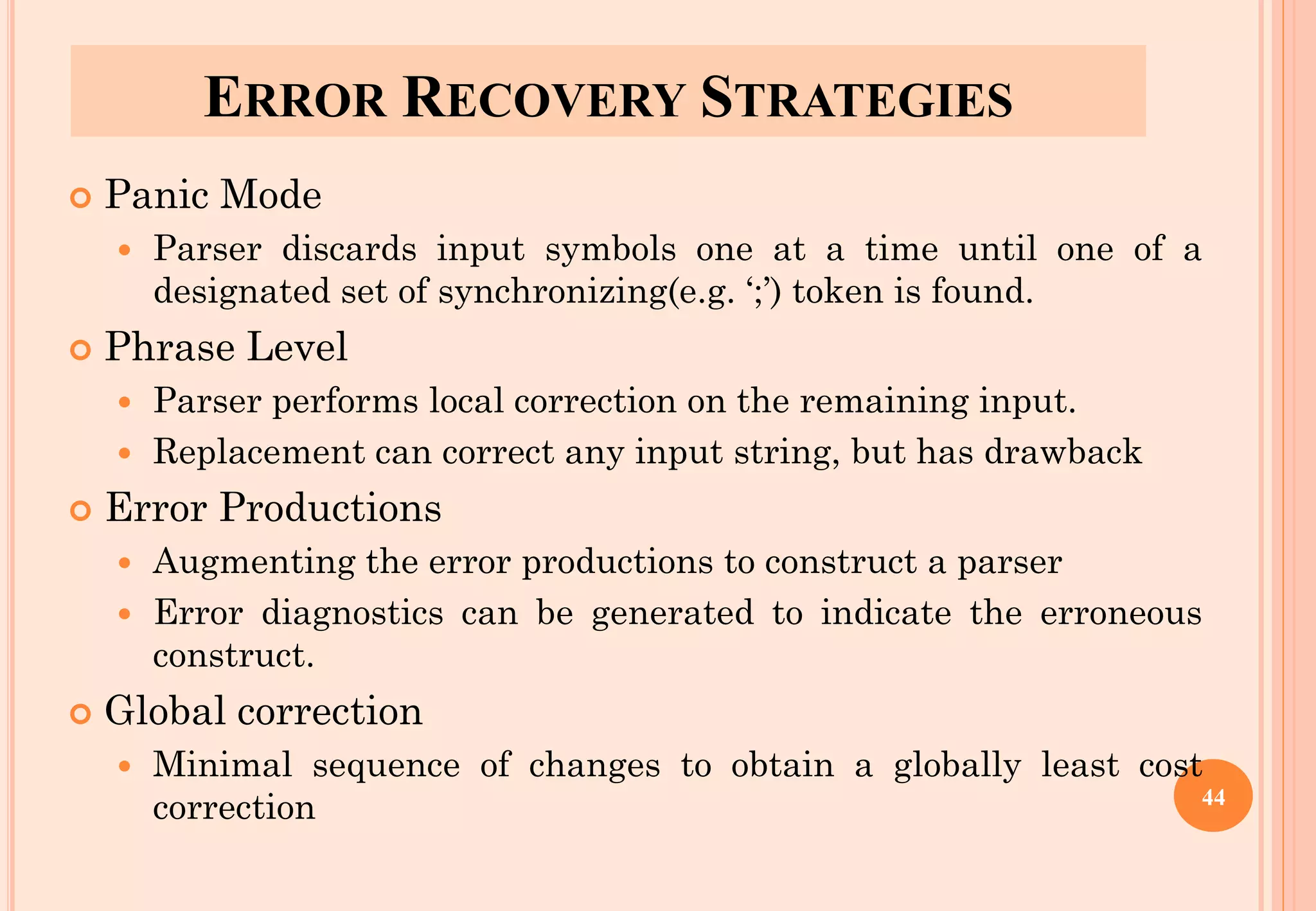

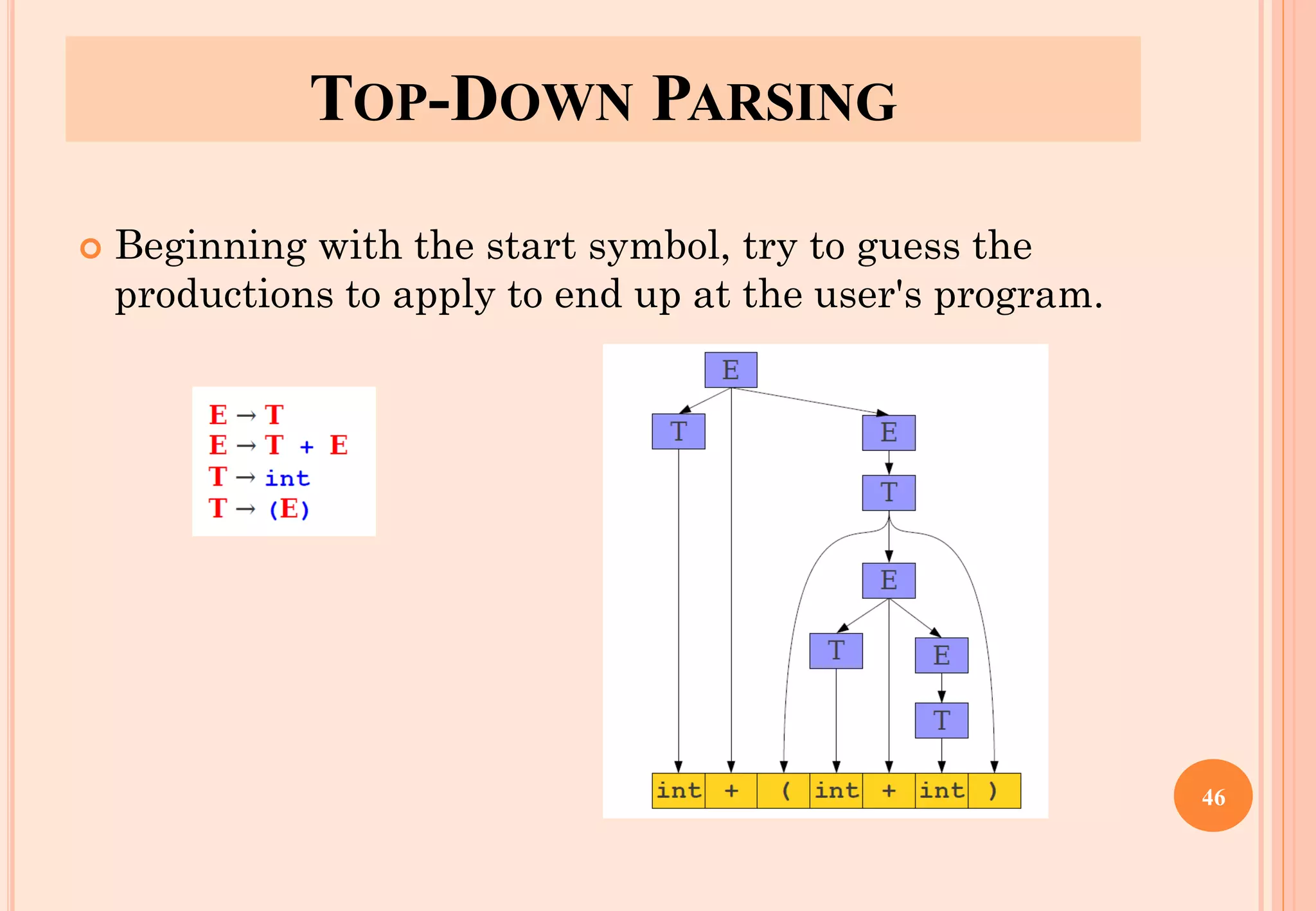

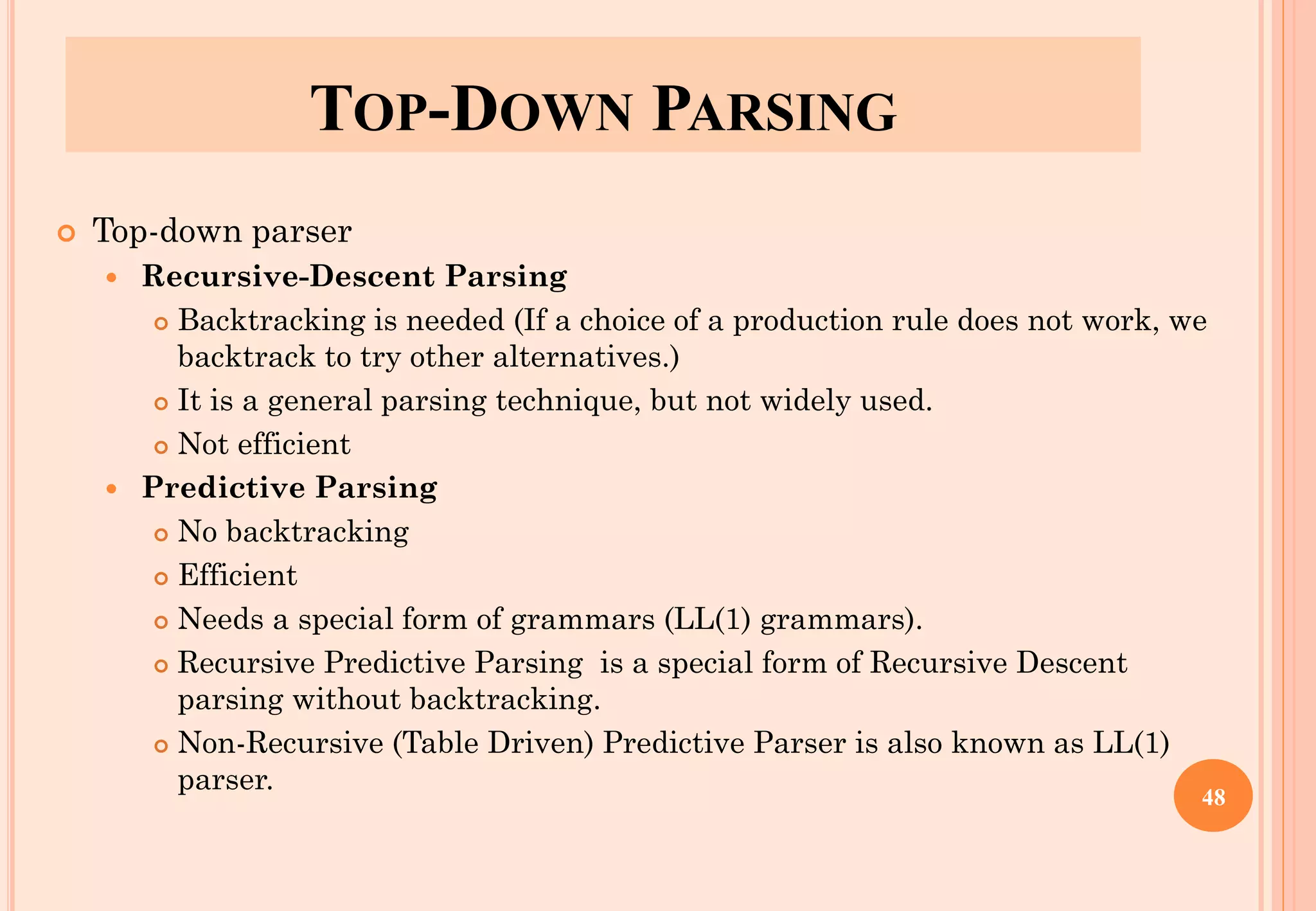
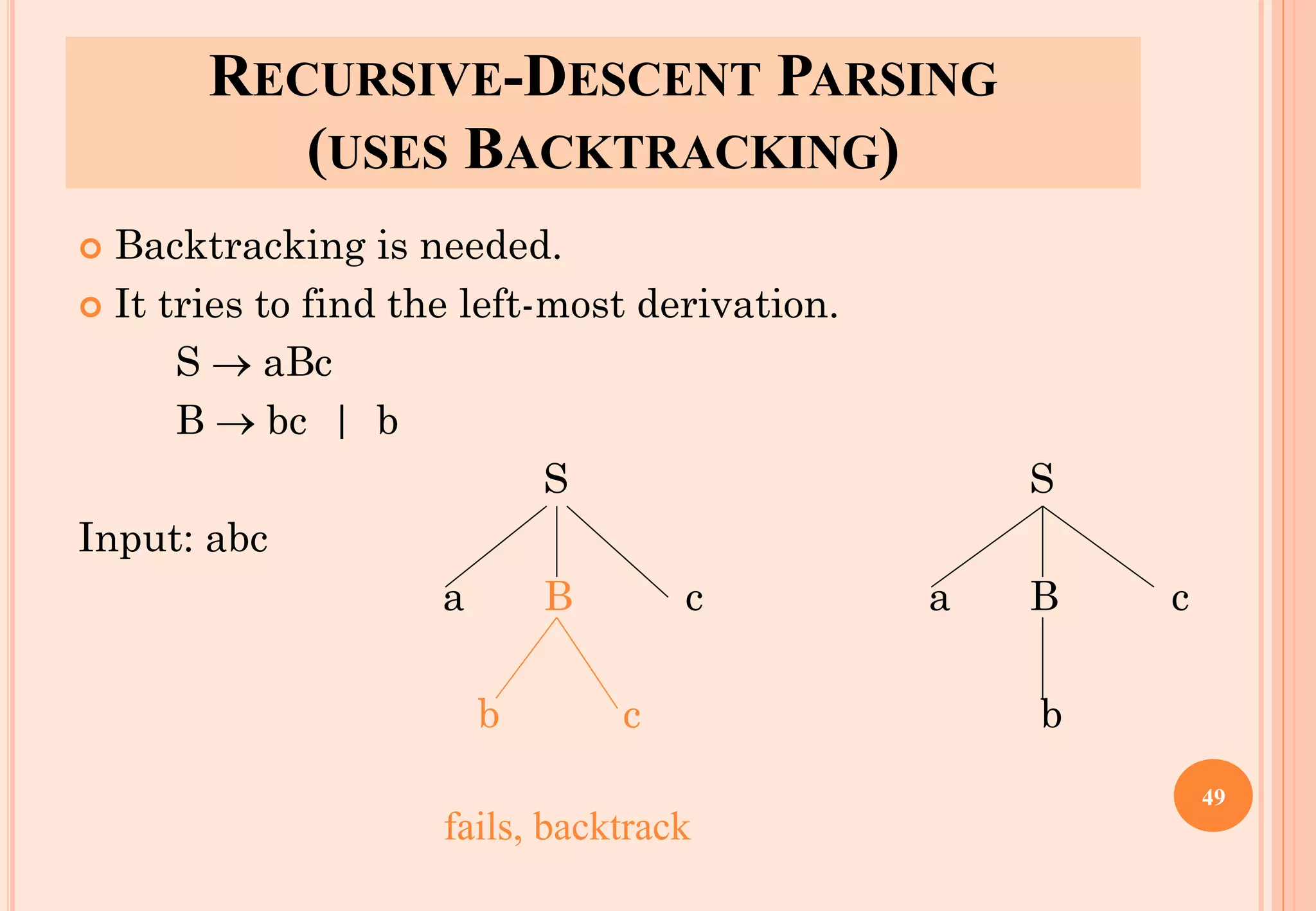
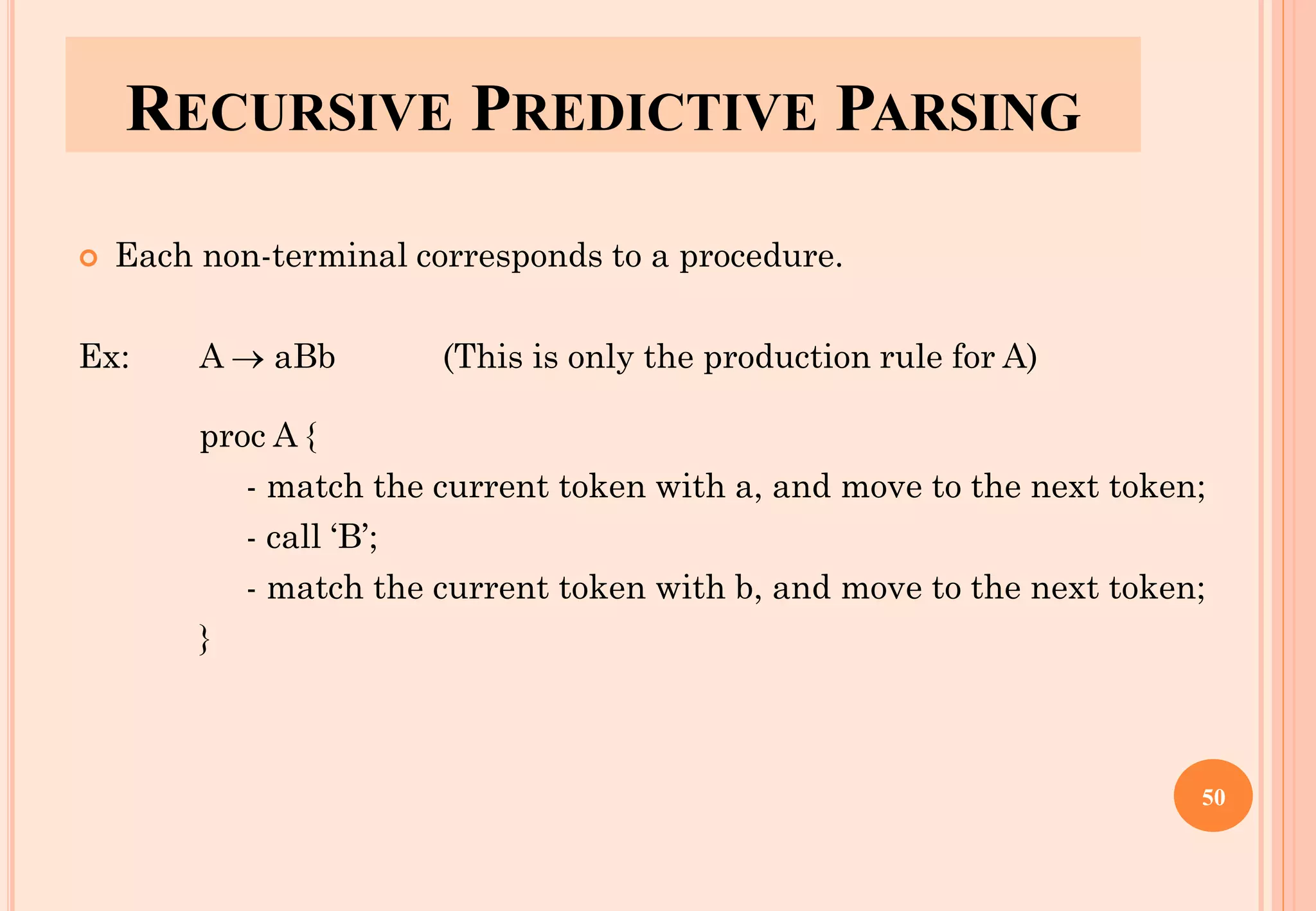
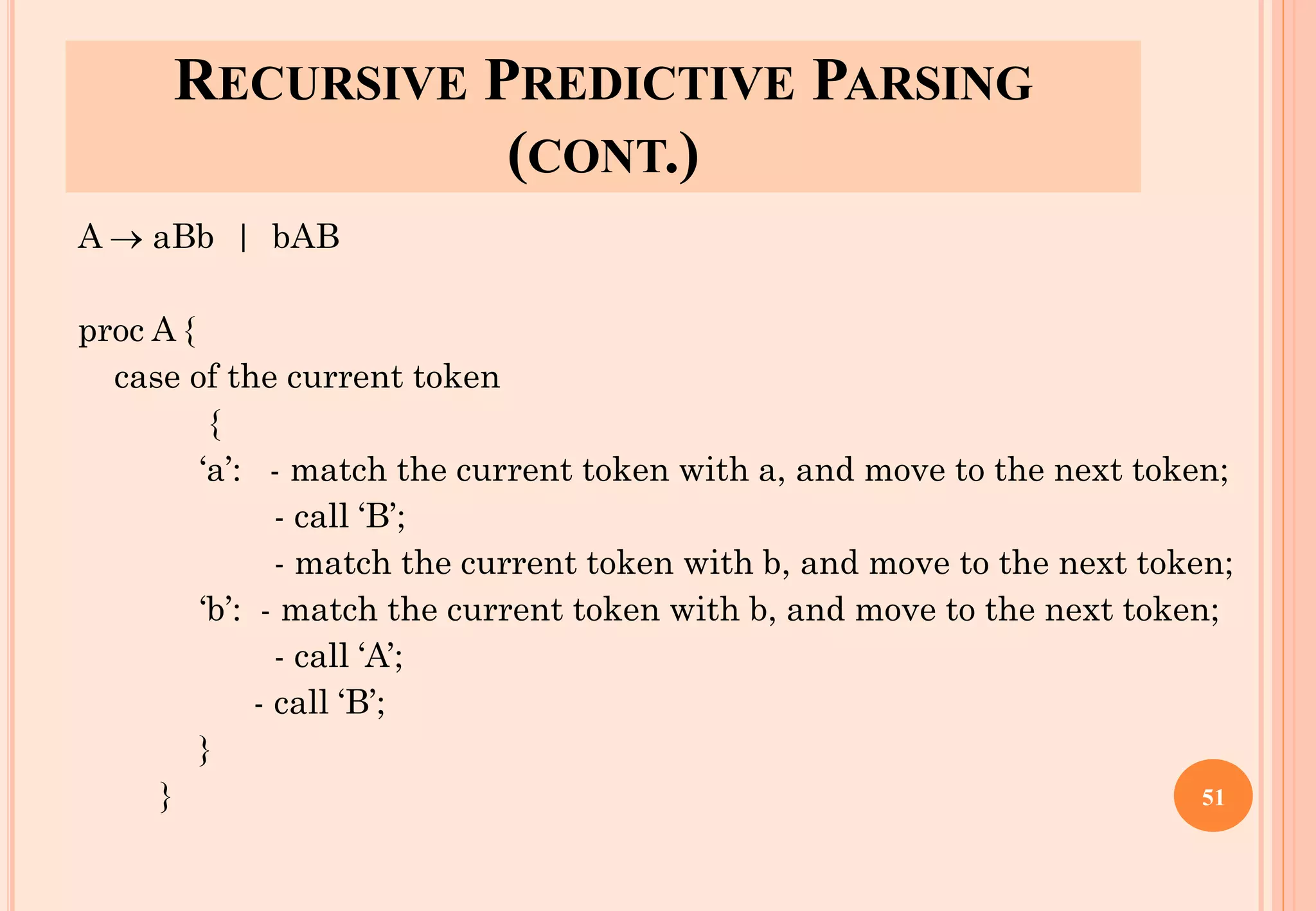
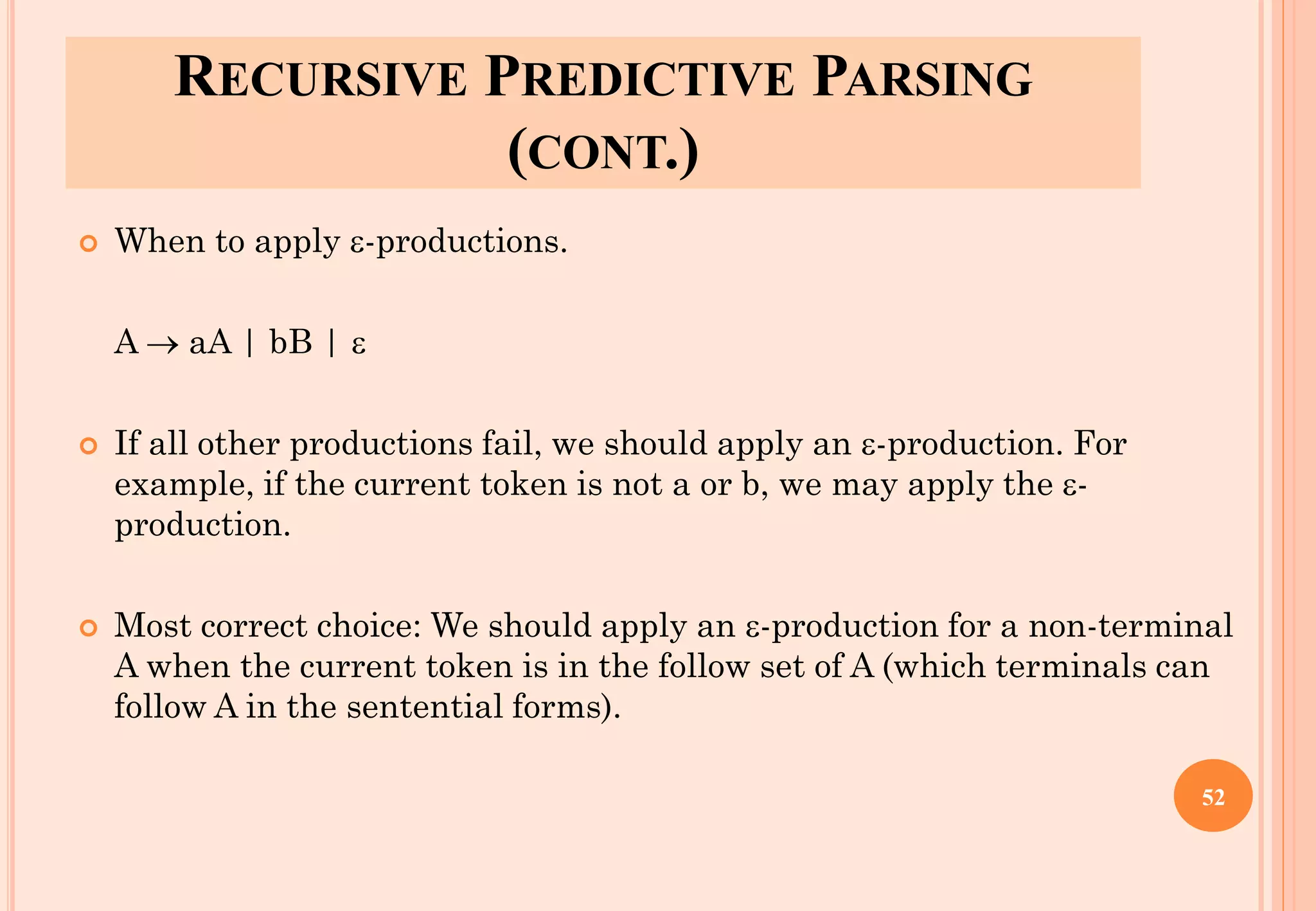
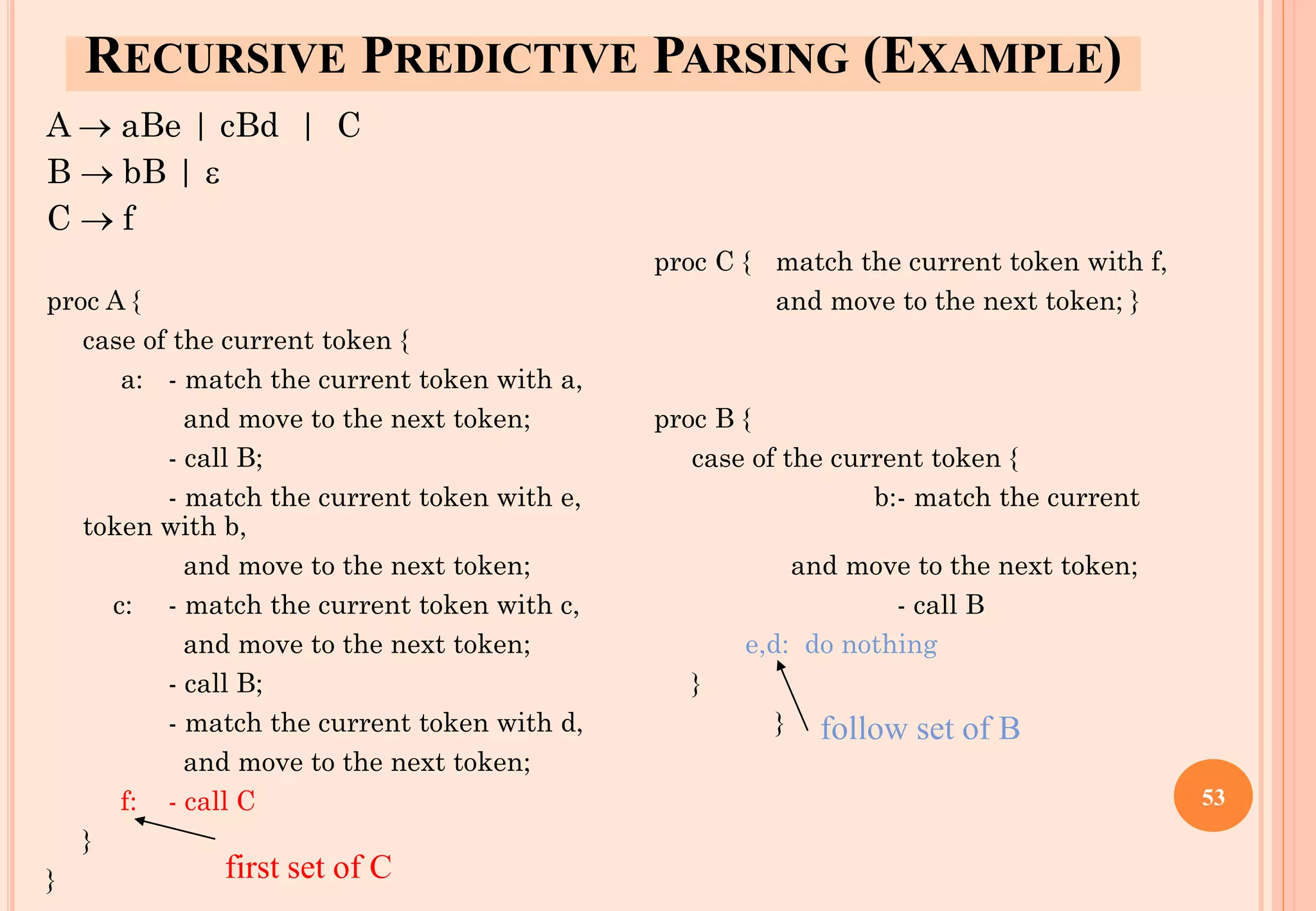
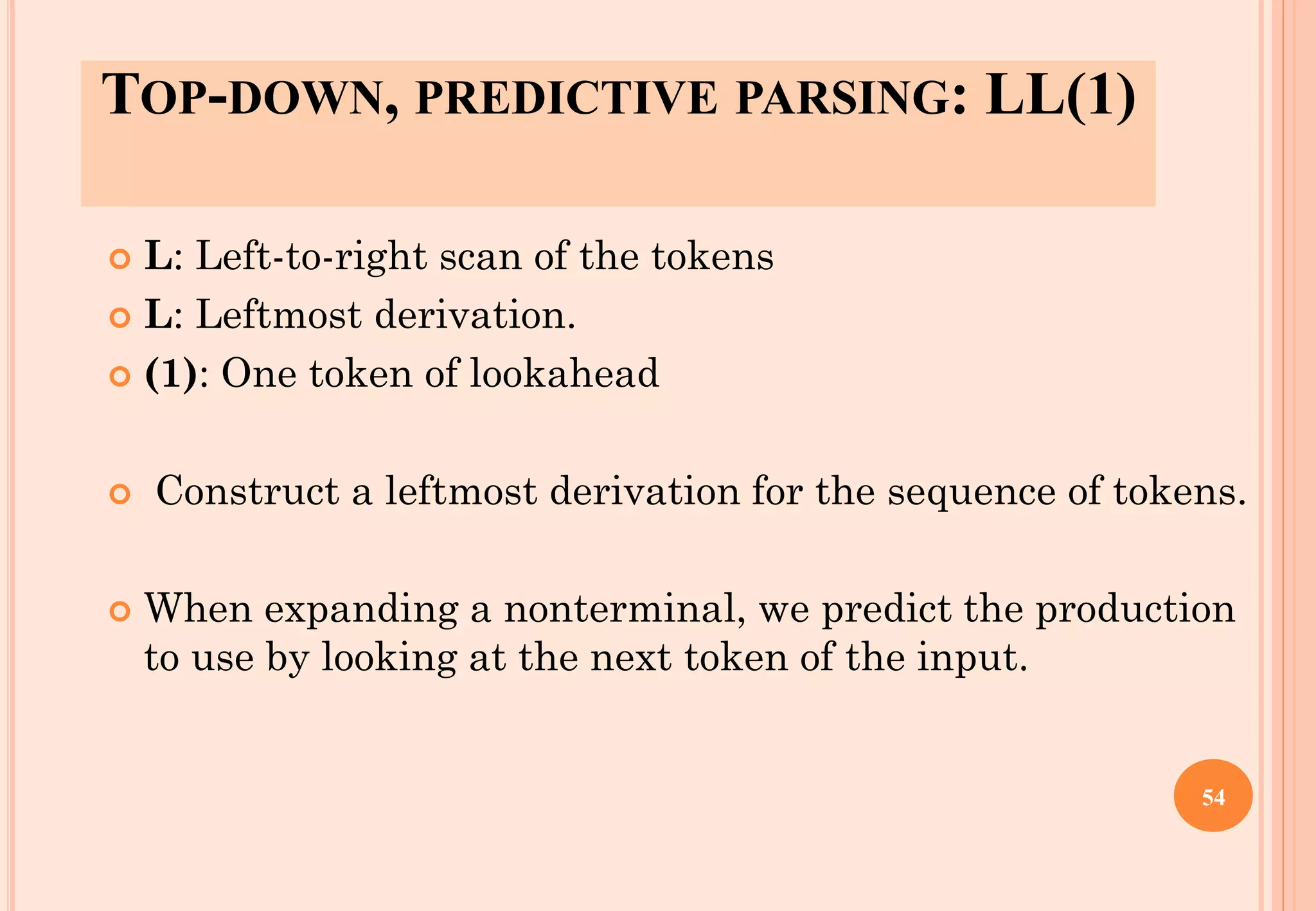
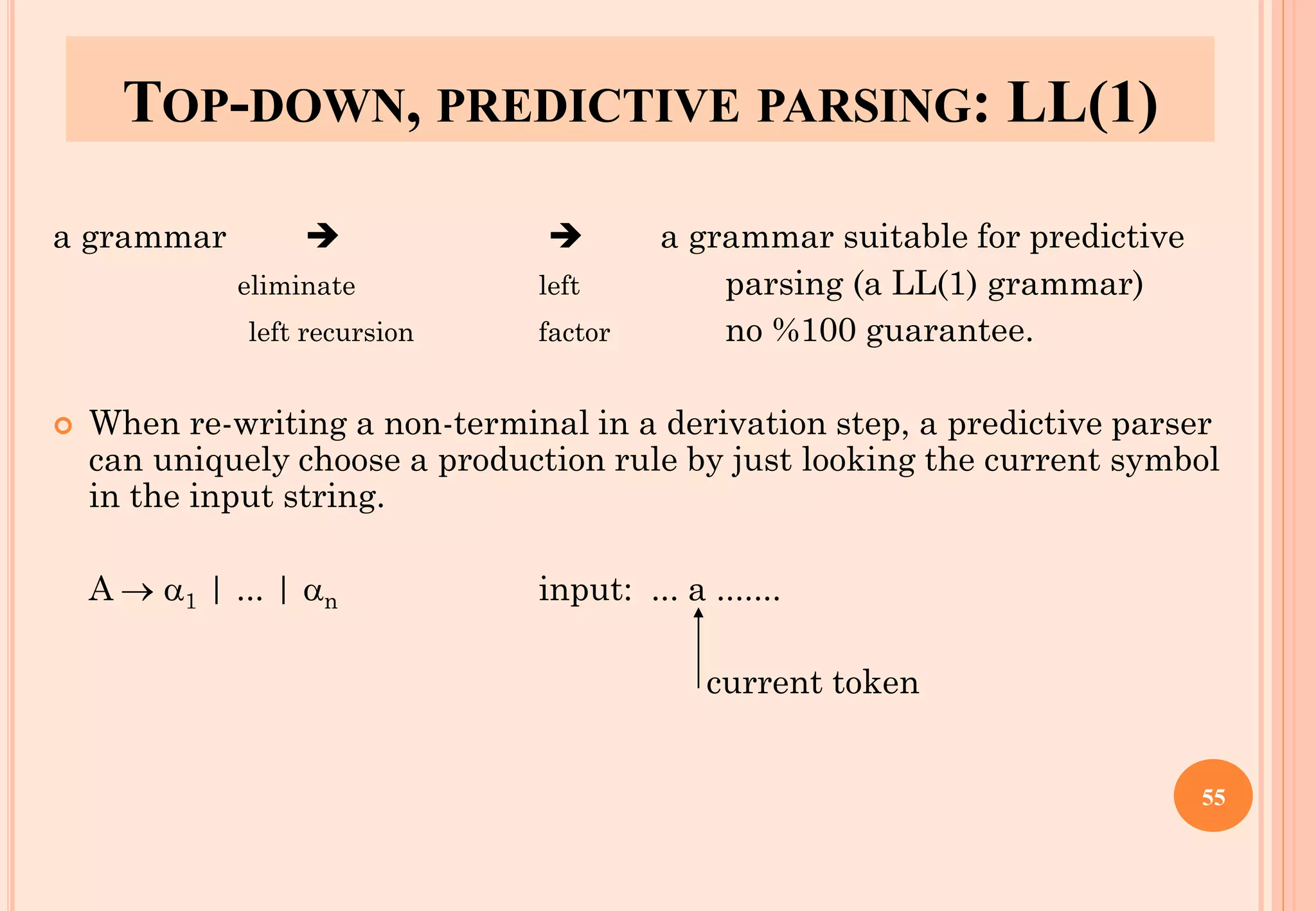
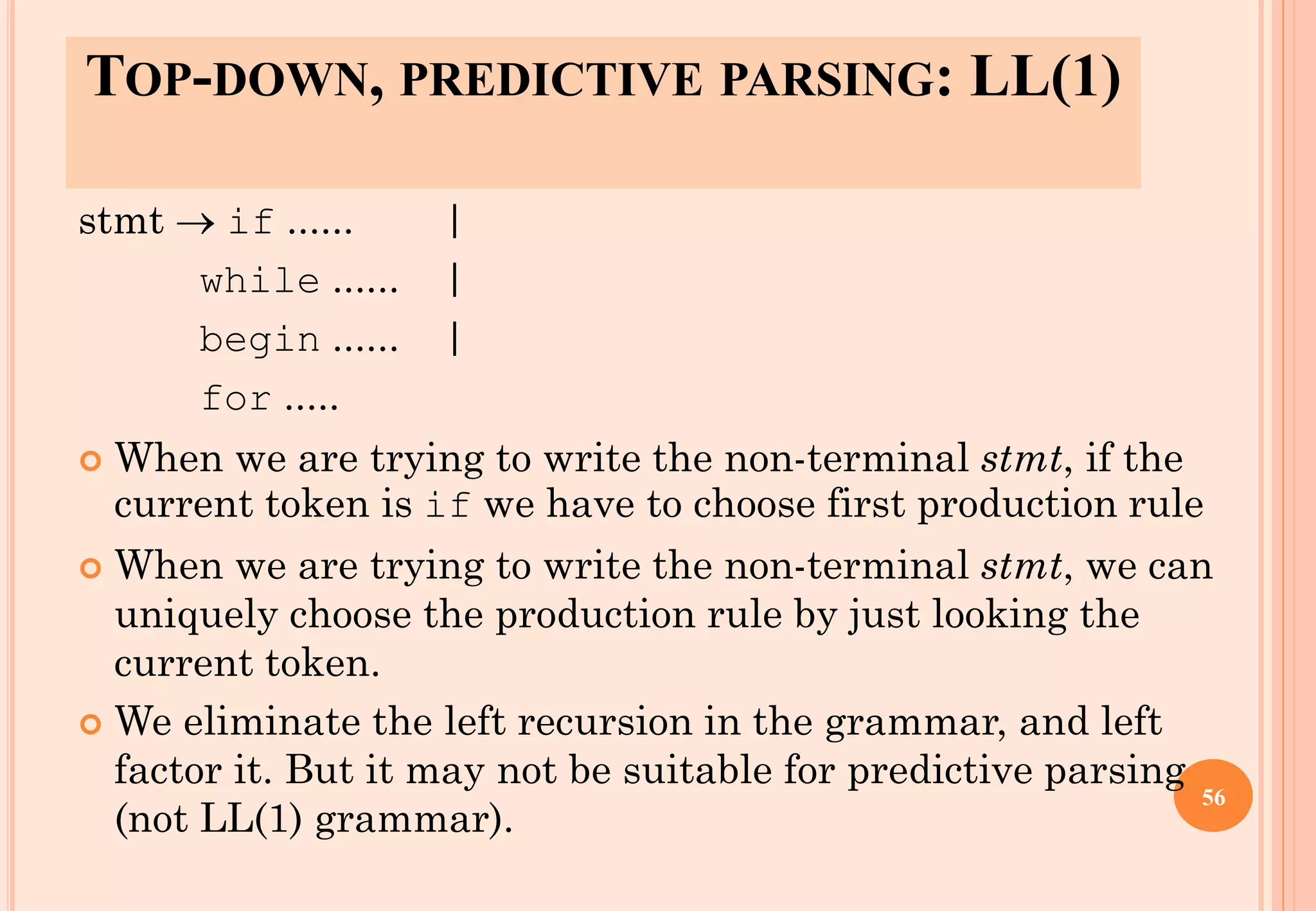
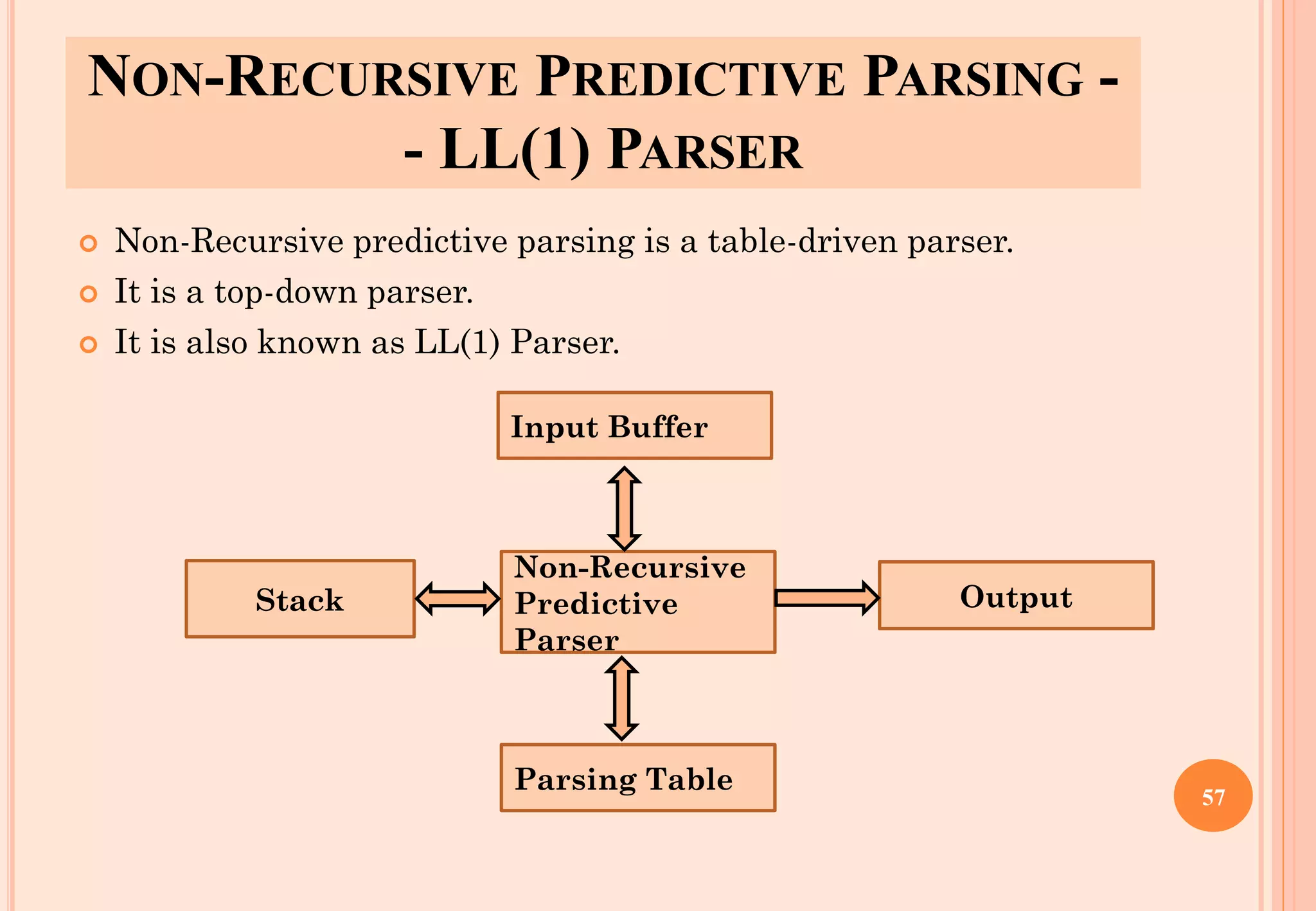
![LL(1) PARSER
Input buffer
Contains the string to be parsed. We will assume that its end is marked with a
special symbol $.
Output
A production rule representing a step of the derivation sequence (left-most
derivation) of the string in the input buffer.
Stack
Contains the grammar symbols
At the bottom of the stack, there is a special end marker symbol $.
Initially the stack contains only the symbol $ and the starting symbol S.
$S initial stack
When the stack is emptied (ie. only $ left in the stack), the parsing is completed.
Parsing table
A two-dimensional array M[A,a]
Each row is a non-terminal symbol
Each column is a terminal symbol or the special symbol $
Each entry holds a production rule.
58](https://image.slidesharecdn.com/lec02-syntaxanalysisandll1-220904100303-47f32891/75/lec02-Syntax-Analysis-and-LL-1-pdf-58-2048.jpg)
![LL(1) PARSER – PARSER ACTIONS
The symbol at the top of the stack (say X) and the current symbol in the input
string (say a) determine the parser action.
There are four possible parser actions.
1. If X and a are $ ➔ parser halts (successful completion)
2. If X and a are the same terminal symbol (different from $)
➔ parser pops X from the stack, and moves the next symbol in the input buffer.
3. If X is a non-terminal
➔ parser looks at the parsing table entry M[X,a]. If M[X,a] holds a production
rule X→Y1Y2...Yk, it pops X from the stack and pushes Yk,Yk-1,...,Y1 into the
stack. The parser also outputs the production rule X→Y1Y2...Yk to represent a
step of the derivation.
4. none of the above ➔ error
all empty entries in the parsing table are errors.
If X is a terminal symbol different from a, this is also an error case.
59](https://image.slidesharecdn.com/lec02-syntaxanalysisandll1-220904100303-47f32891/75/lec02-Syntax-Analysis-and-LL-1-pdf-59-2048.jpg)
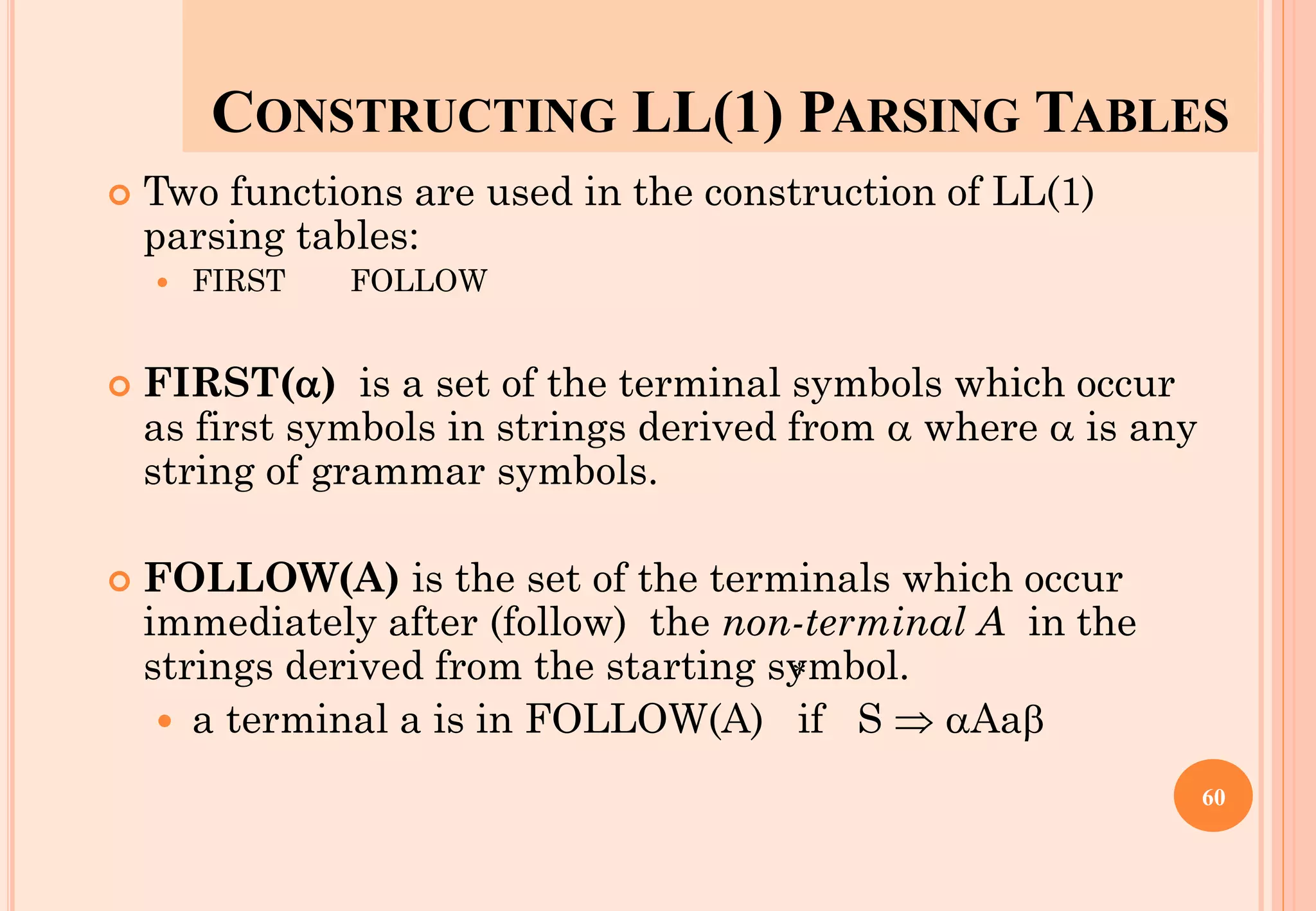
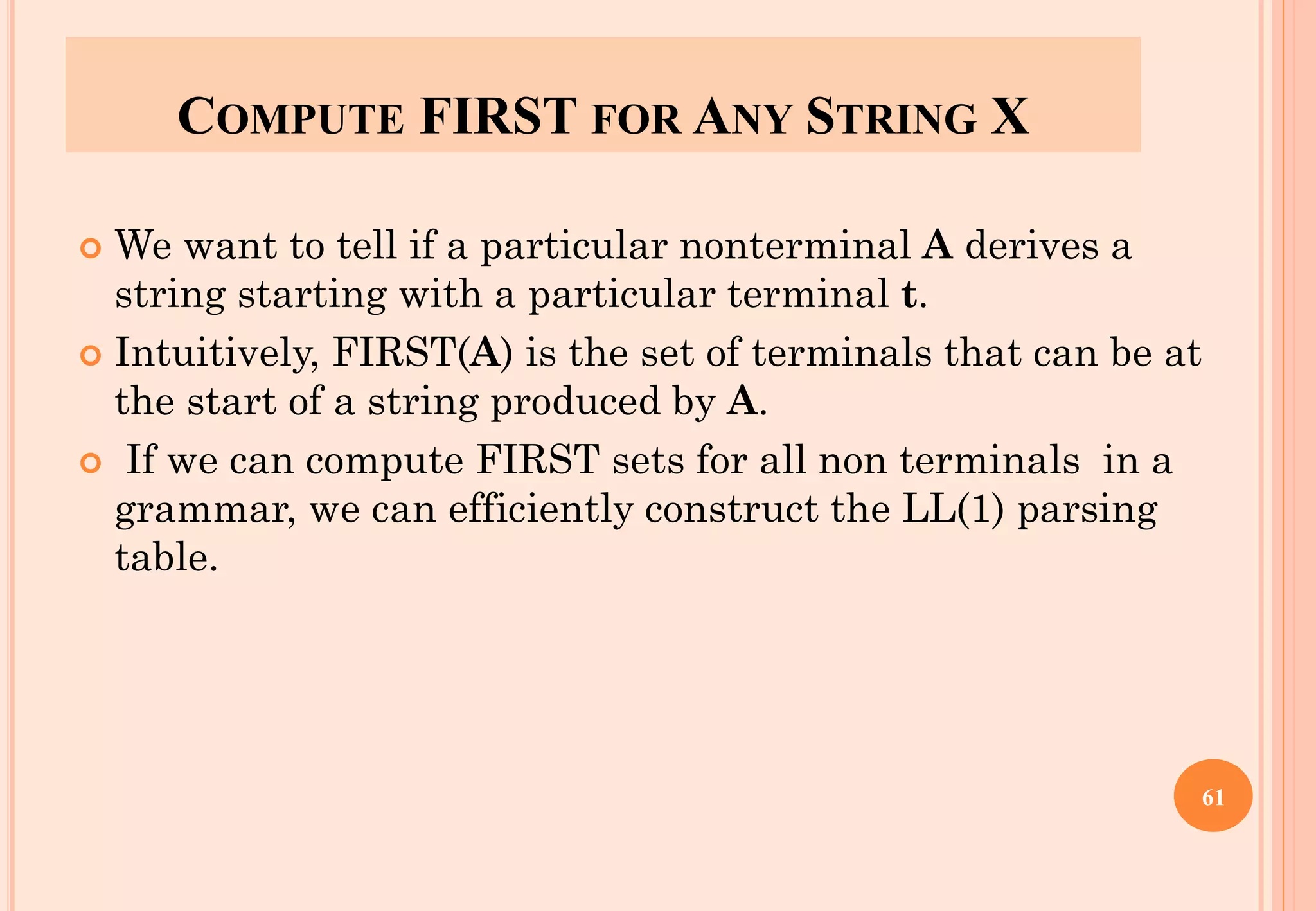
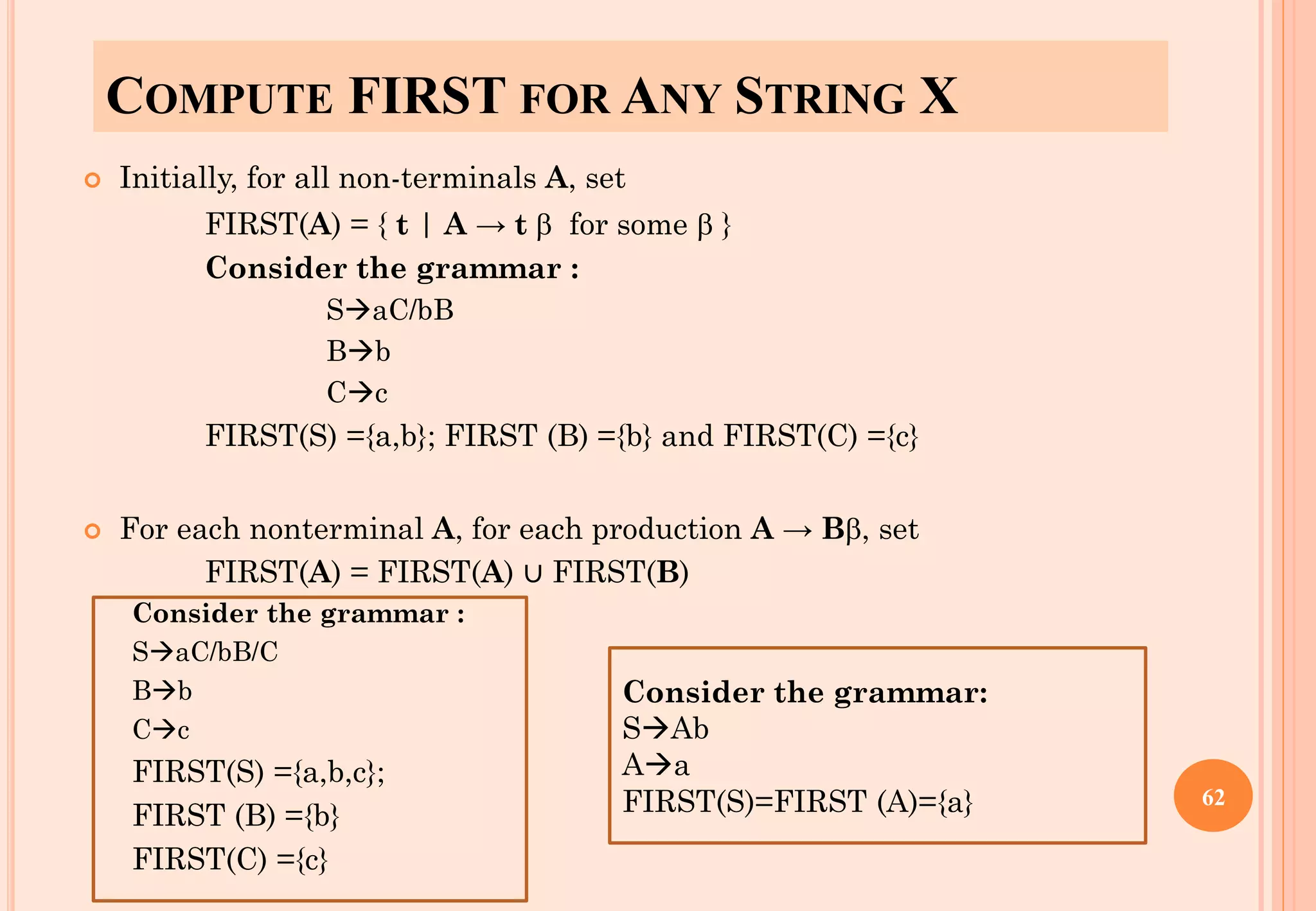
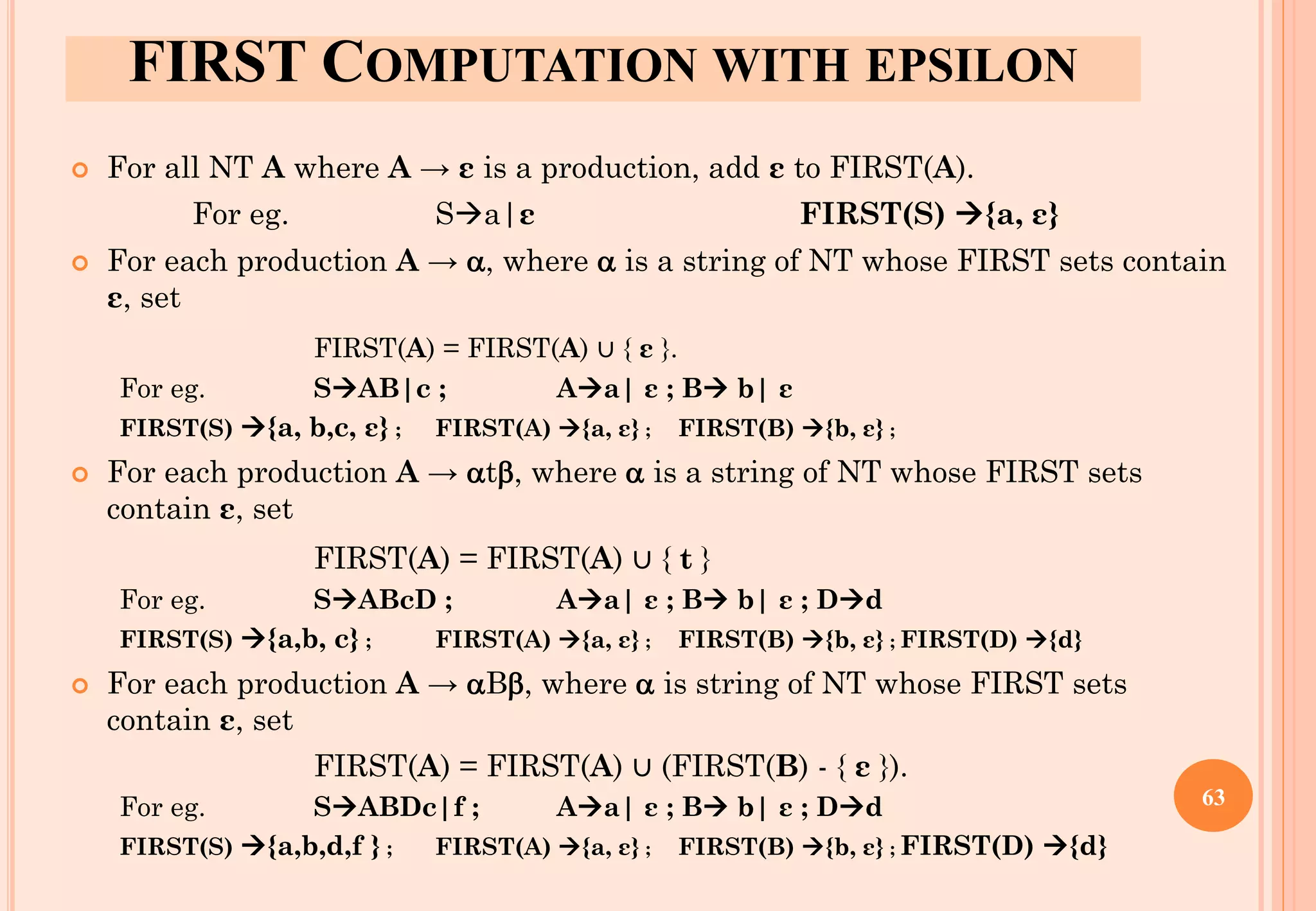
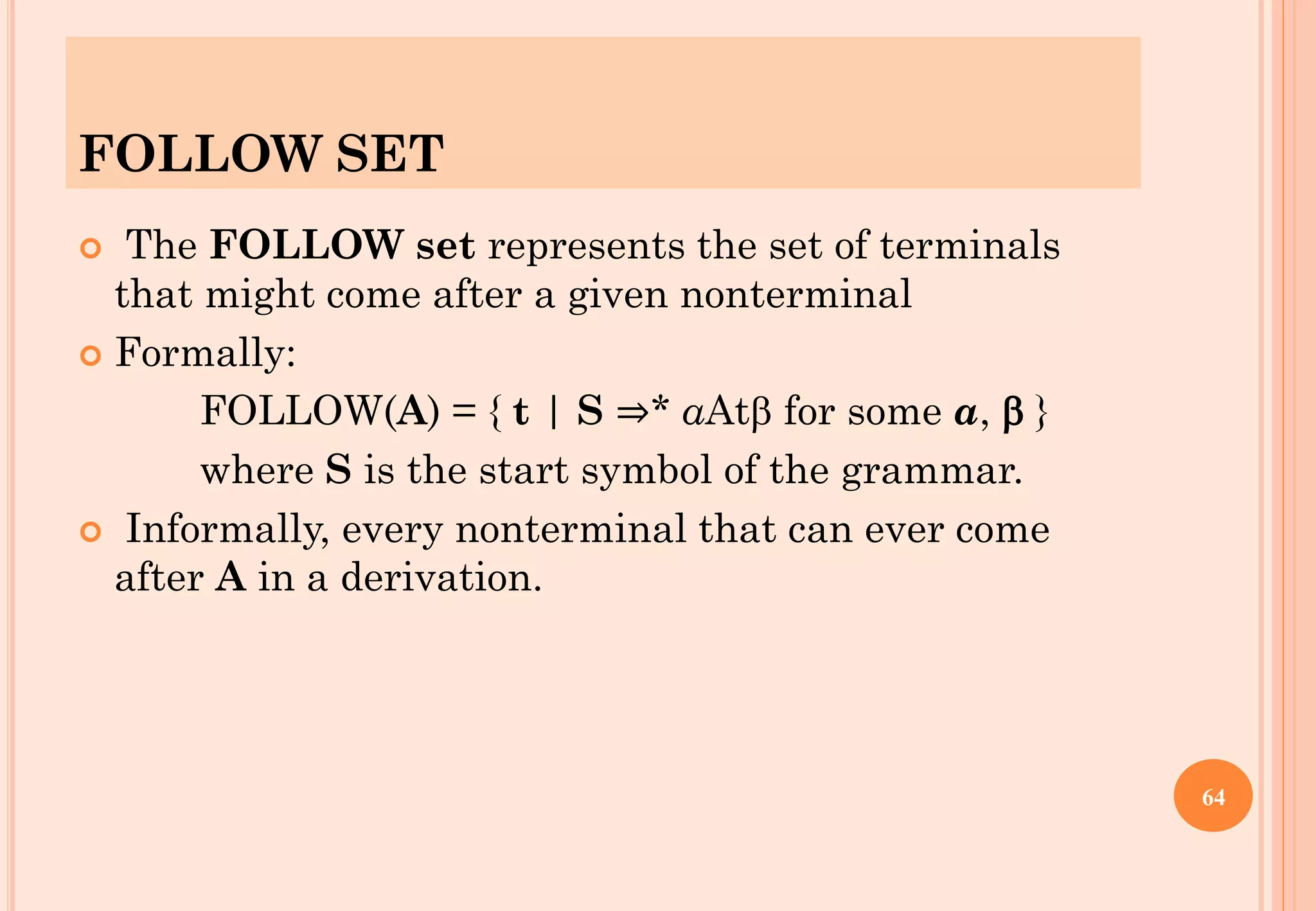
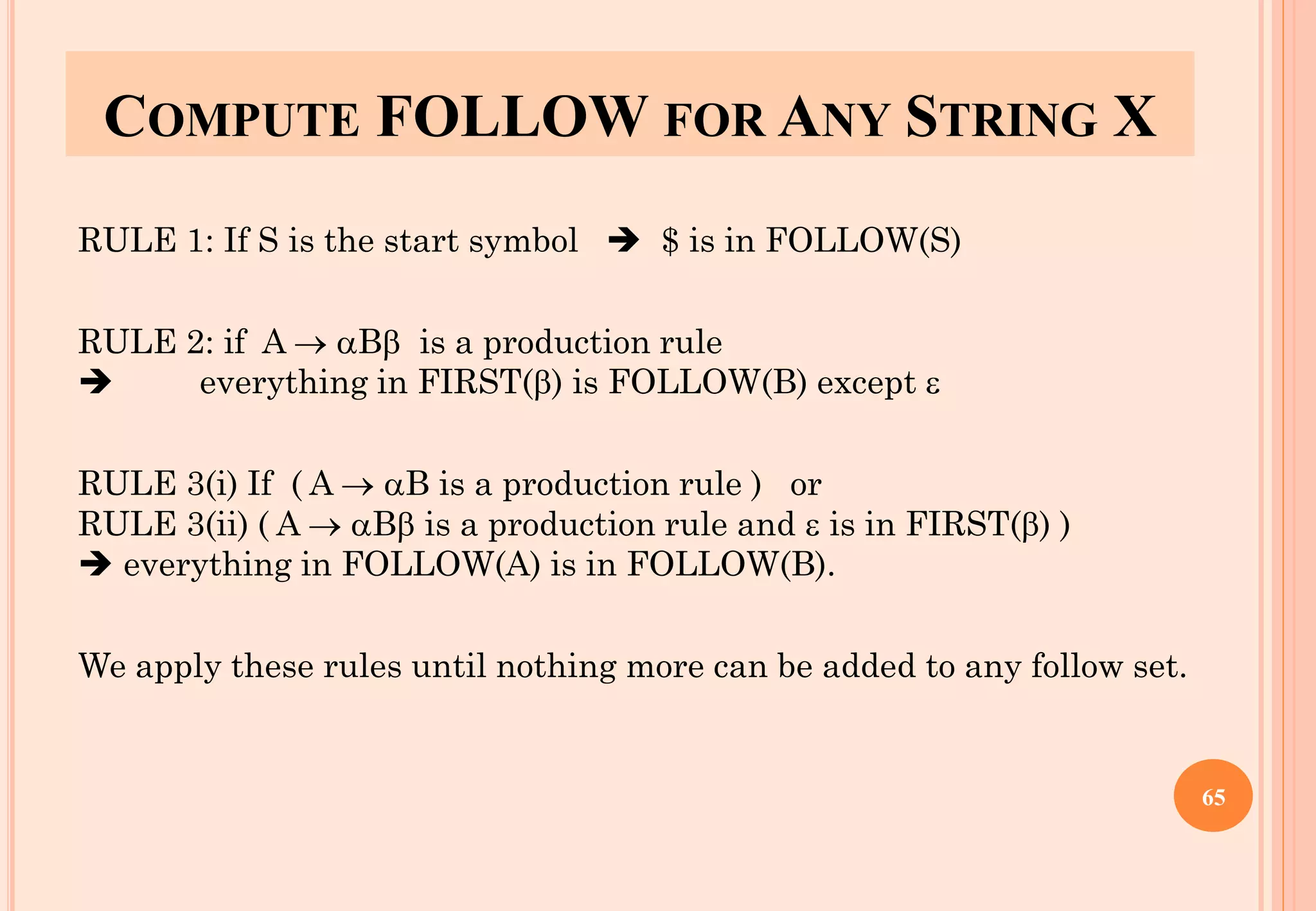
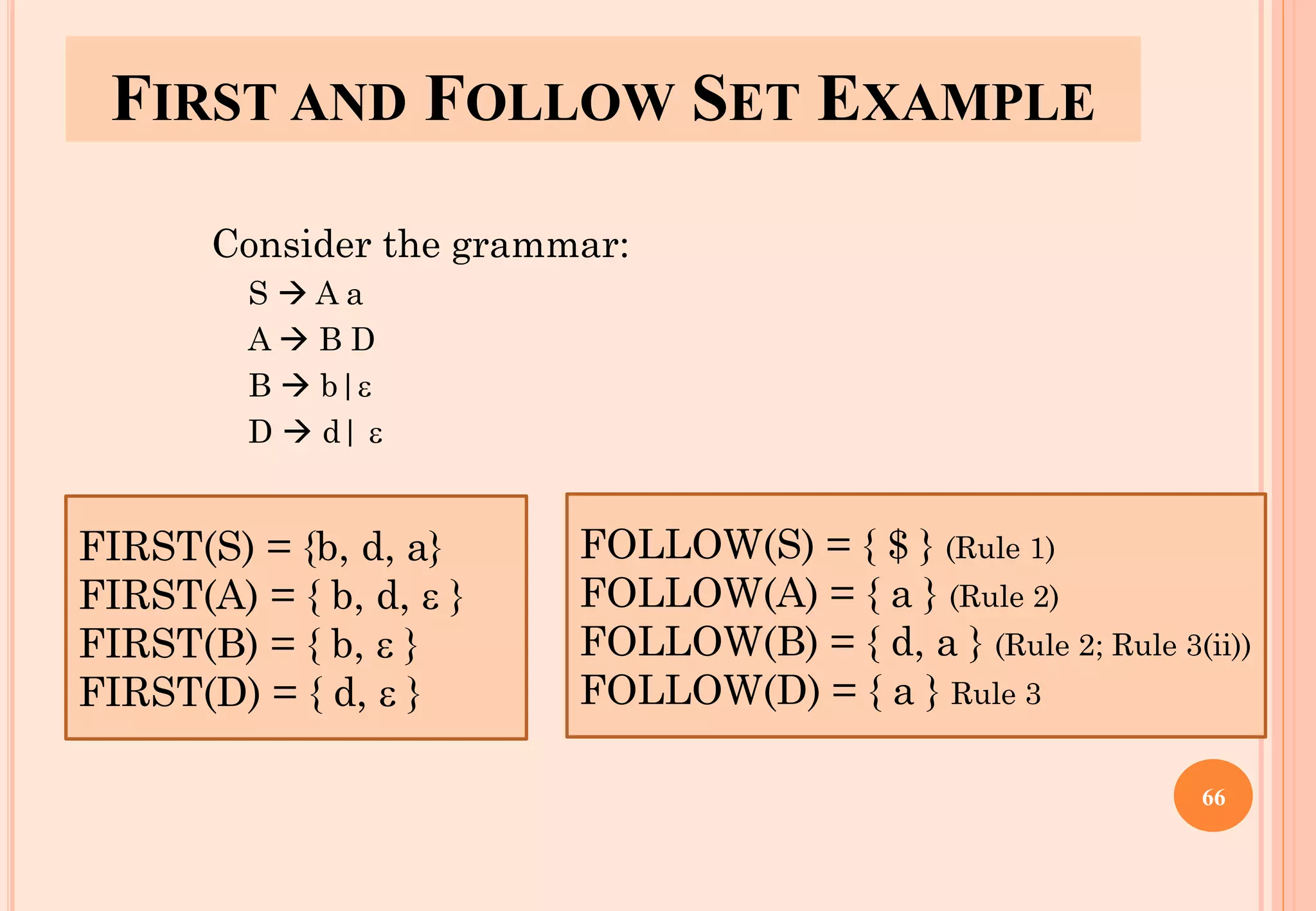
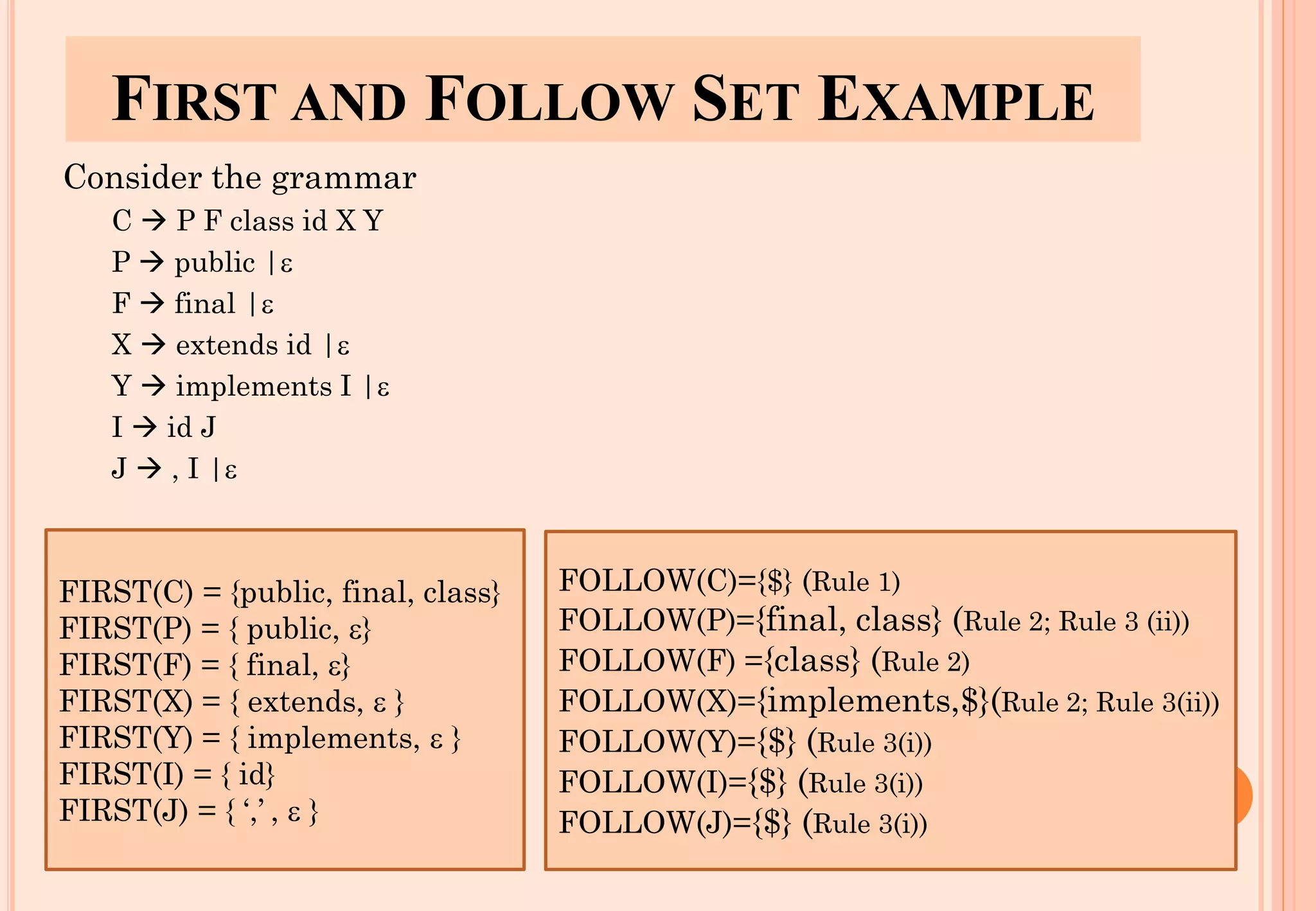
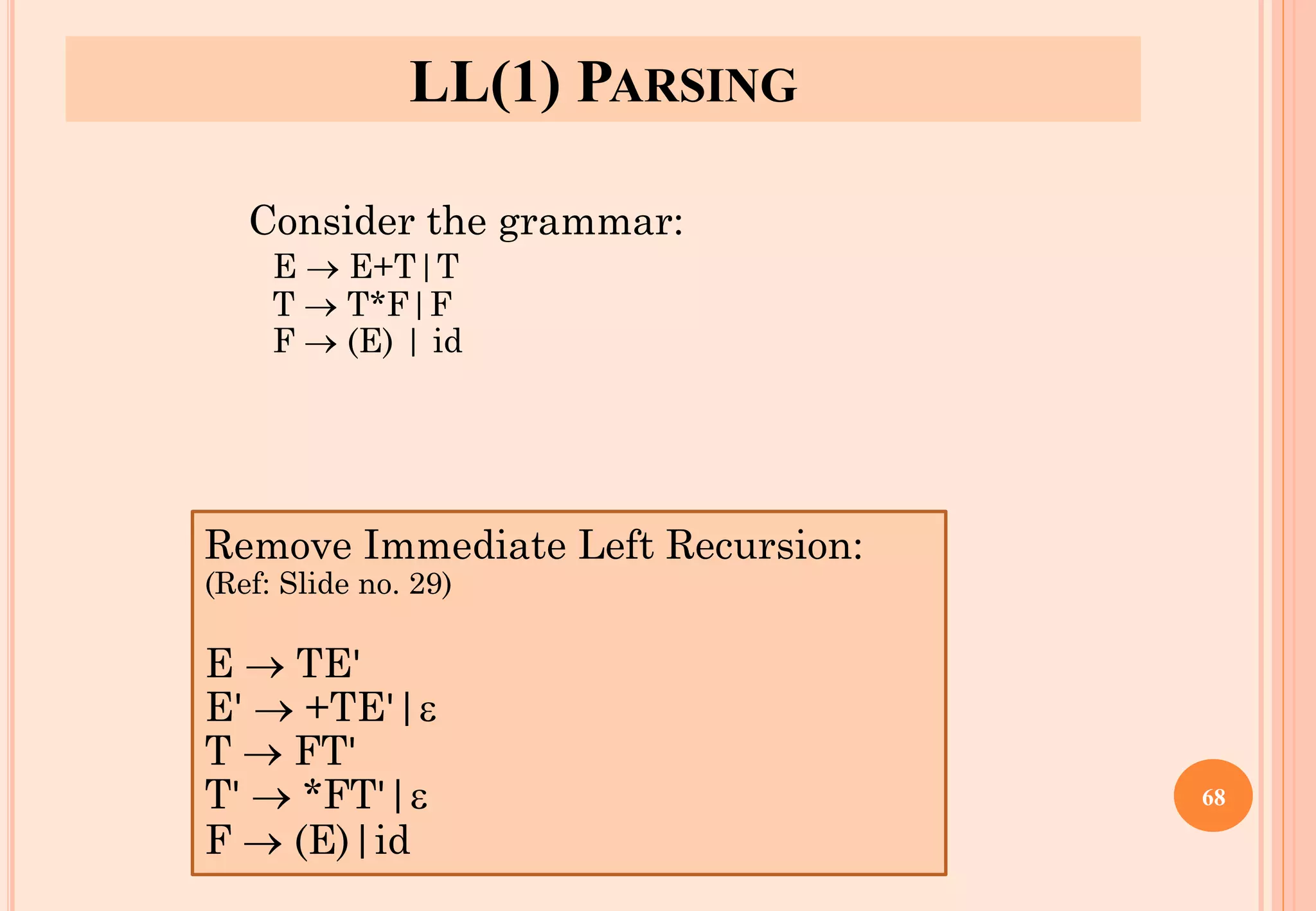


![CONSTRUCTING LL(1) PARSING TABLE --
ALGORITHM
for each production rule A → of a grammar G
for each terminal a in FIRST()
➔ add A → to M[A,a]
If in FIRST()
➔ for each terminal a in FOLLOW(A) add A →
to M[A,a]
If in FIRST() and $ in FOLLOW(A)
➔ add A → to M[A,$]
All other undefined entries of the parsing table are
error entries. 71](https://image.slidesharecdn.com/lec02-syntaxanalysisandll1-220904100303-47f32891/75/lec02-Syntax-Analysis-and-LL-1-pdf-71-2048.jpg)
![CONSTRUCTING LL(1) PARSING TABLE
E → TE' FIRST(TE'id} ➔ E → TE'’ into M[E,(] and M[E,id]
E' → +TE' FIRST(+TE' )={+} ➔ E’ → +TE' into M[E',+]
E' → FIRST()={} ➔ none
but since in FIRST()
and FOLLOW(E')={$,)} ➔ E' → into M[E' and M[E',)]
T → FT' FIRST(FT’)={(,id} ➔ T → FT' into M[T,(] and M[T,id]
T' → *FT' FIRST(*FT’ )={*} ➔ T' → *F' into M[T',*]
T' → FIRST()={} ➔ none
but since in FIRST()
and
FOLLOW(T’)={$,),+} ➔ T' → into M[T',$], M[T' and M[T',+]
F → (E) FIRST((E) )={(} ➔ F → (E) into M[F,(]
F → id FIRST(id)={id} ➔ F → id into M[F,id]
72](https://image.slidesharecdn.com/lec02-syntaxanalysisandll1-220904100303-47f32891/75/lec02-Syntax-Analysis-and-LL-1-pdf-72-2048.jpg)
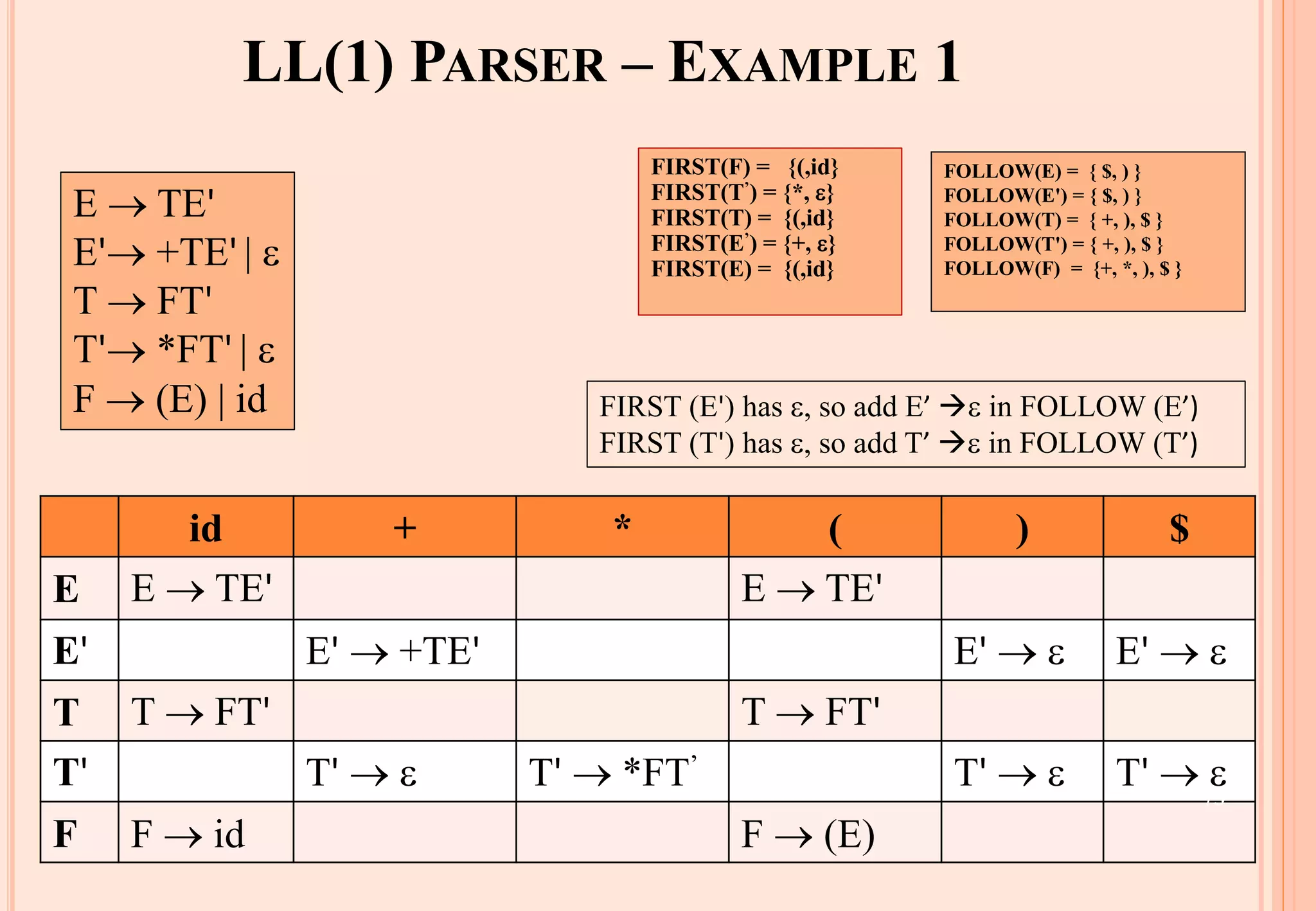
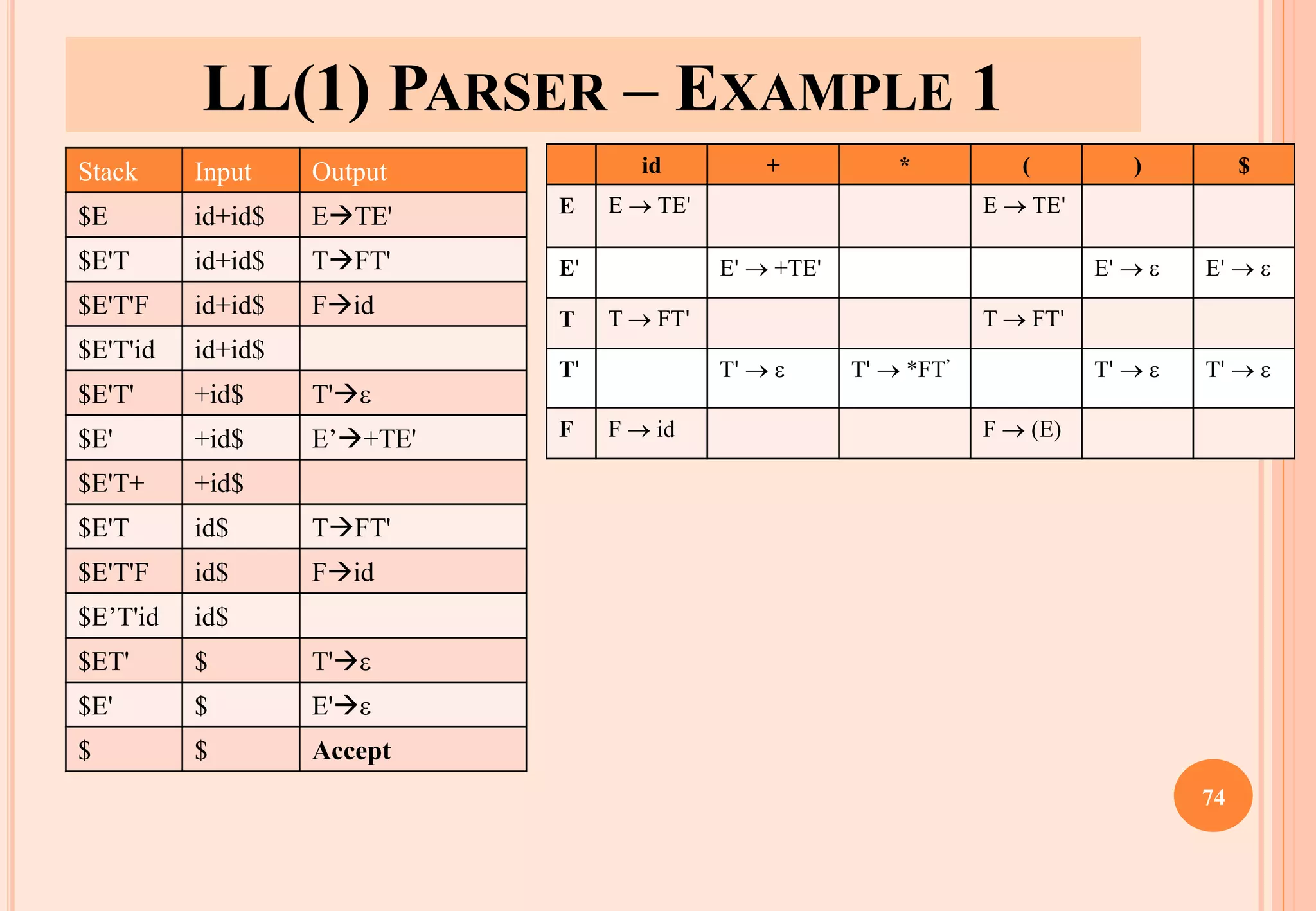
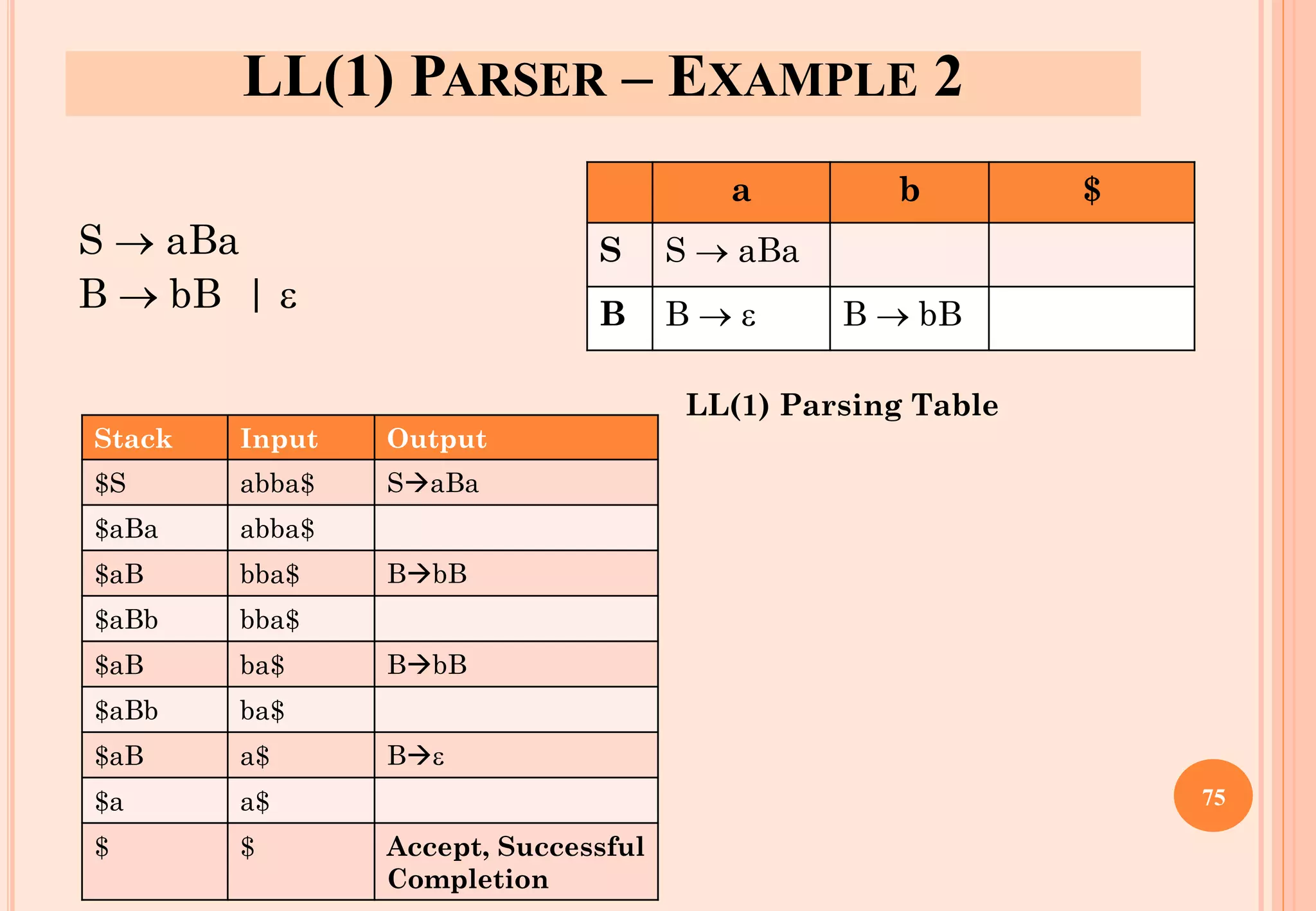
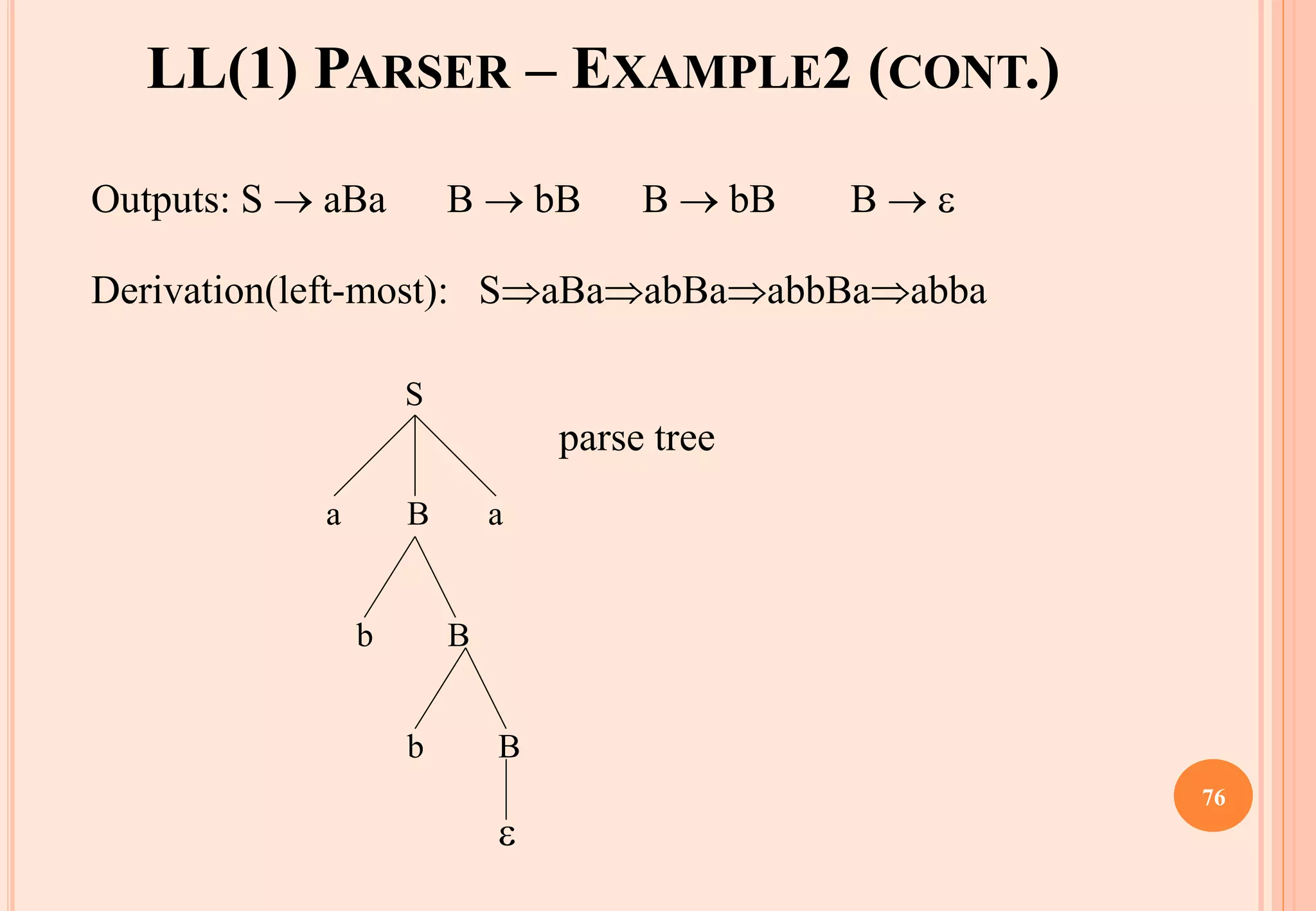
![A GRAMMAR WHICH IS NOT LL(1)
S → i C t S E | a FOLLOW(S) = { $,e }
E → e S | FOLLOW(E) = { $,e }
C → b FOLLOW(C) = { t }
FIRST(iCtSE) = {i}
FIRST(a) = {a}
FIRST(eS) = {e}
FIRST() = {}
FIRST(b) = {b}
two production rules for M[E,e]
Problem ➔ ambiguity
a b e i t $
S S → a S →
iCtSE
E E → e S
E →
E →
C C → b
77](https://image.slidesharecdn.com/lec02-syntaxanalysisandll1-220904100303-47f32891/75/lec02-Syntax-Analysis-and-LL-1-pdf-77-2048.jpg)
